Advertisement
Message Forums |
|
 Topic: To Trip To Balranald. (Not Scotland) Topic: To Trip To Balranald. (Not Scotland)
|
  |
16/5/2015 at 4:53am
Location: Melbourne Australia
Outfit: Windsor Rapid Off Road Van + tents
 View Profile
View Profile
 Reply
Reply
 Quote
Quote
|
Joined: 20/4/2015 Gold Member 
Forum Posts: 234
| Site Reviews Total: | 0 |
|
| Site Reviews 2024: | 0  |
| Site Reviews 2023: | 0  |
| Site Reviews 2022: | 0  |
| Site Reviews 2021: | 0  |
| Site Reviews 2020: | 0  |
| Site Reviews 2019: | 0  |
| Site Reviews 2018: | 0  |
|
| Site Nights 2024: | 0 |
| Site Nights 2023: | 0 |
| Site Nights 2022: | 0 |
| Site Nights 2021: | 0 |
| Site Nights 2020: | 0 |
| Site Nights 2019: | 0 |
| Site Nights 2018: | 0 |
|
Hi everyone,
This report as indicated by the heading, is from a trip to Balranald north west of Melbourne, I havenít been to Scotland but I reckon itís quite different to what can be seen in that region. Jen and I did this trip in October 2013, I apologise for itís length but there was so much to show you.
After leaving home our first stop for morning tea, was when I swung the van under a bridge over the Loddon River just near Serpentine on the Serpentine Bridgewater road, and shortly after the first photos were in the can so to speak.
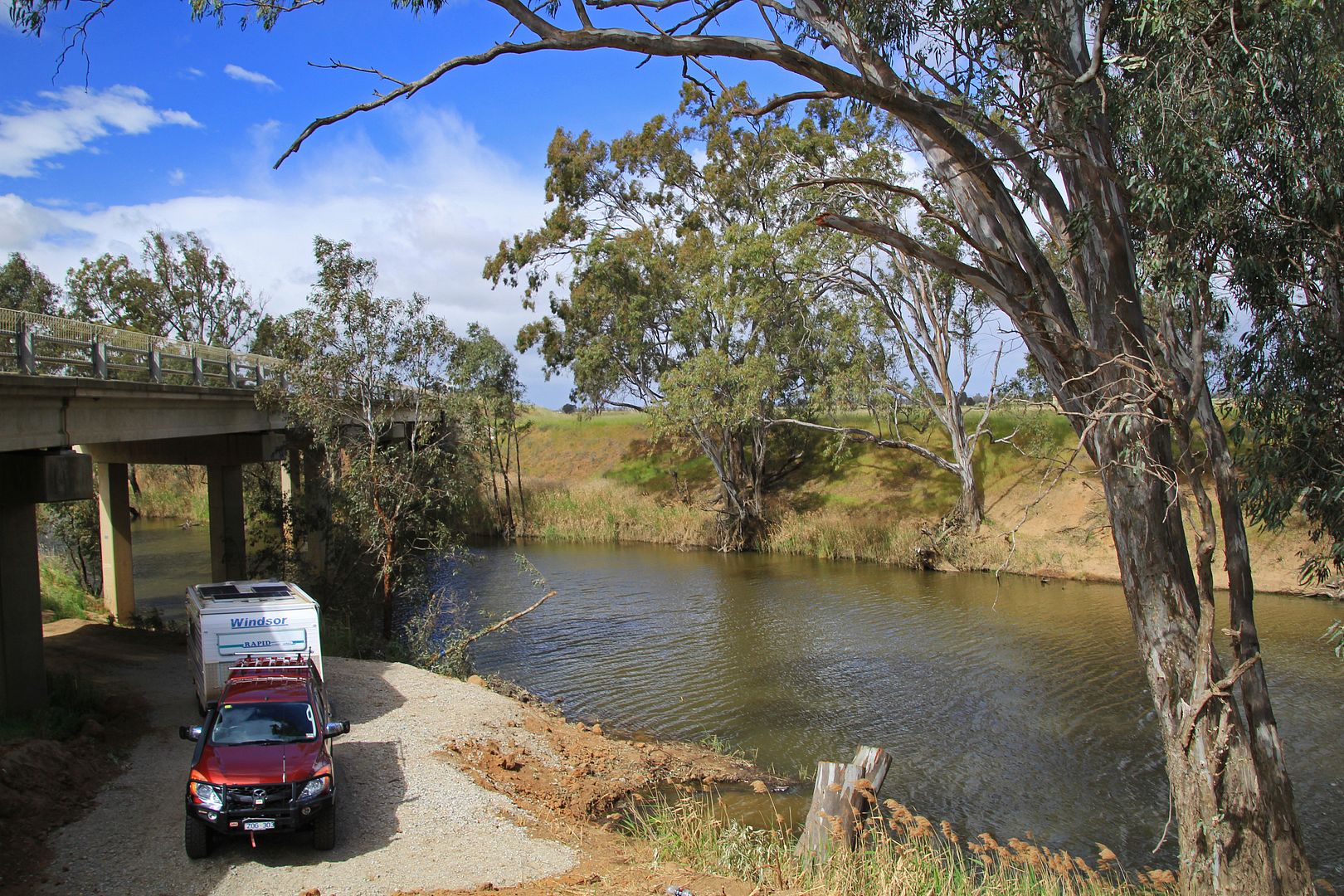
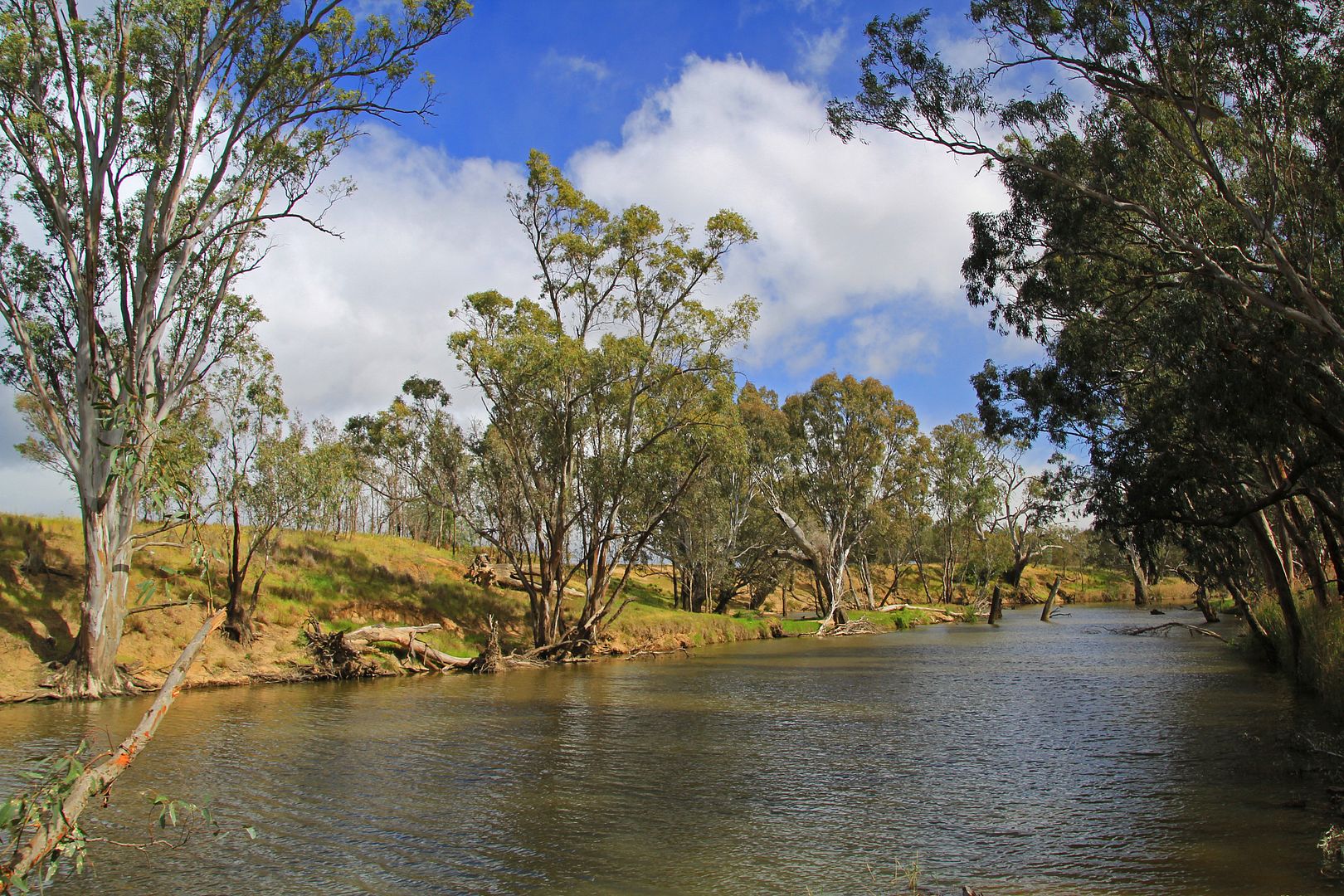
The Loddon River starts in Victoriaís Great Dividing Range and then flows 392 km in a northerly direction to where it joins the Murray River between Barham and Swan Hill and is the largest river in that region.
After conquering my first virgin roads we pulled into Moulamein in NSW for lunch. This is a lovely little town with quite a few historic buildings in a very scenic location beside the Edward River.
The Edward is an unusual river in that it starts near Picnic Point on the Murray, then winds its way for 383 ks before re-entering the Murray about 30 ks south west of Balranald. In that time it drops 48.7 metres in height. Yes that is right, 48.7 metres. Ha!
A wharf was first constructed here in the late 1800s, and Moulamein became a busy inland port servicing the local district via the paddle steamer trade. The wharf was restored to its original condition in 2008.
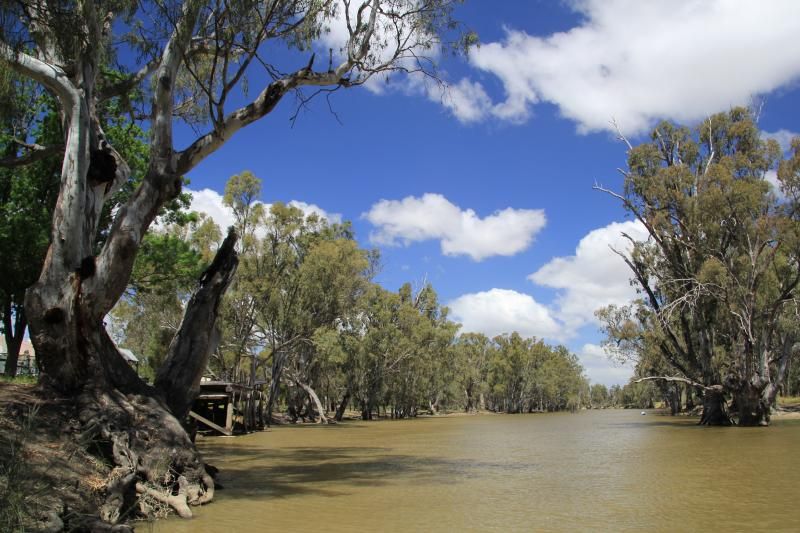
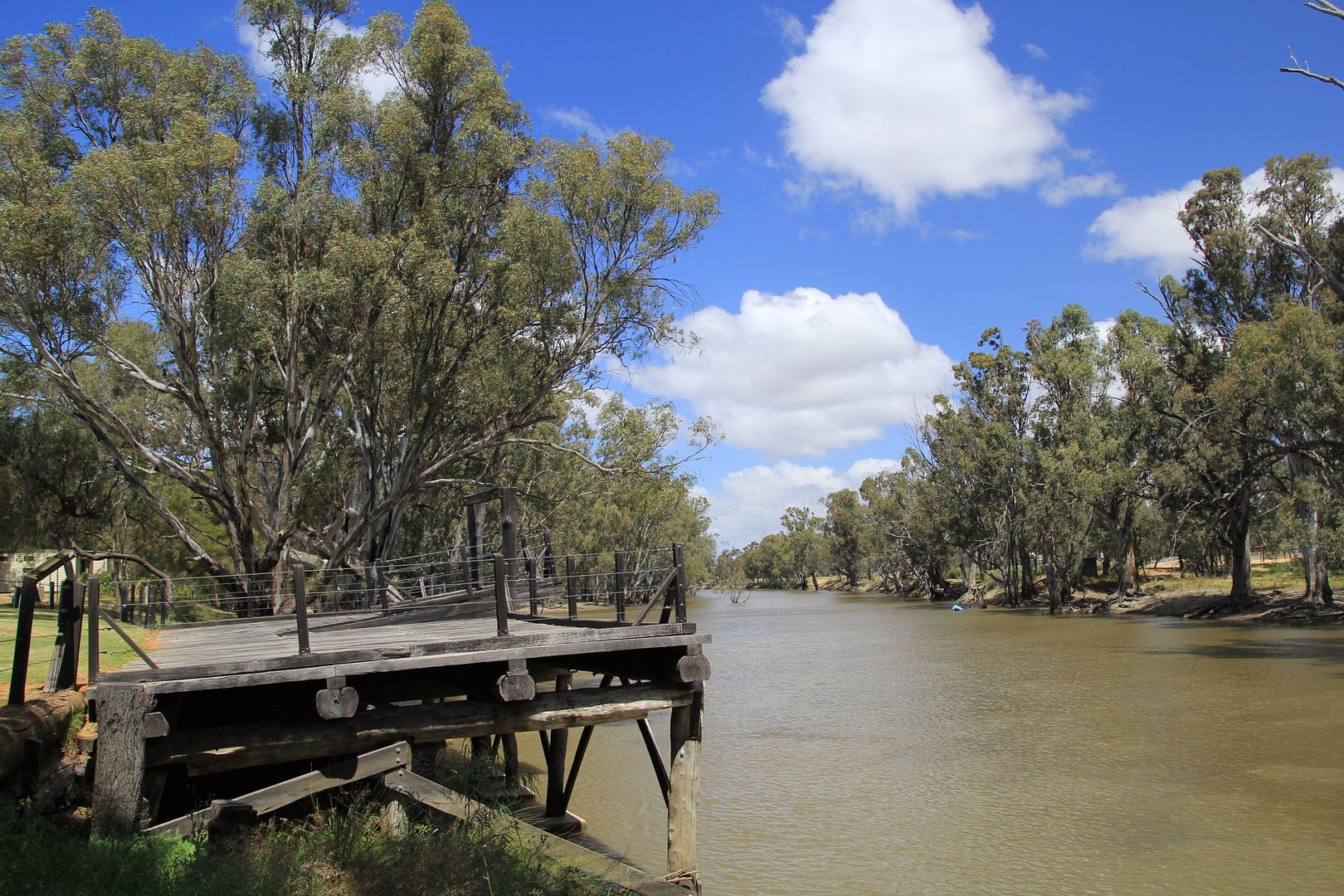
A short distance upstream from the wharf is the junction of the Billabong Creek and then a short distance up that creek is the historic Moulamein Courthouse. Access to the courthouse is via a footbridge over the creek which is quite unique.
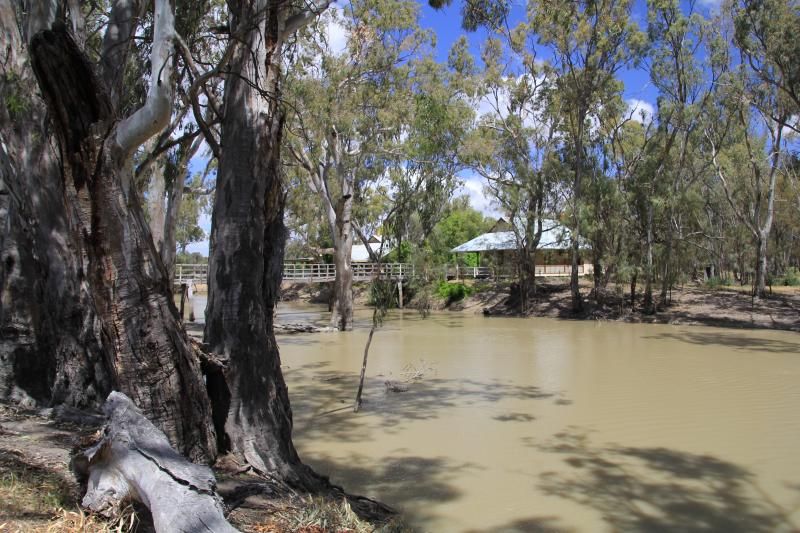
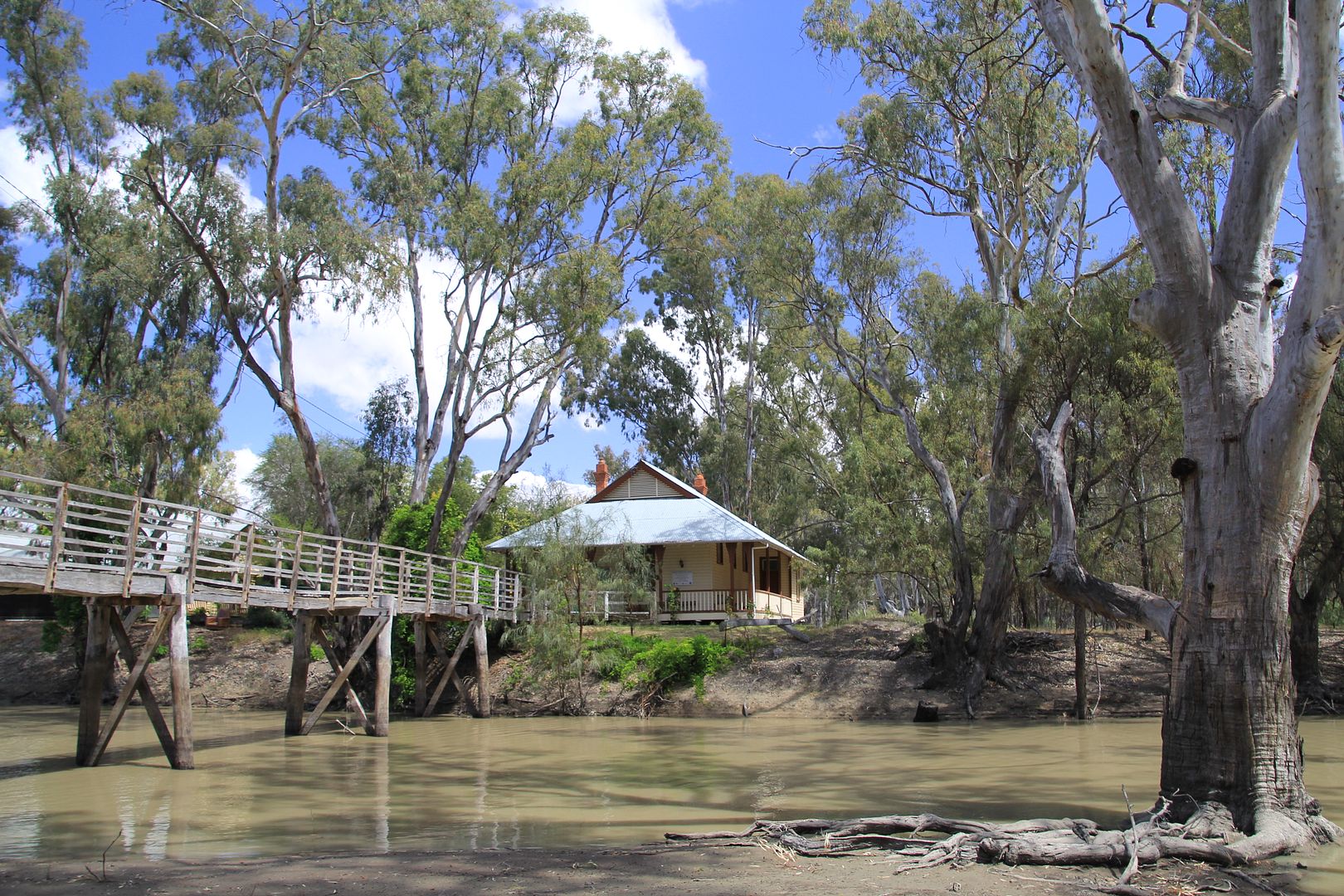
The courthouse was first built in 1847 and then altered to its current shape and size in 1890. It is the oldest still standing in the district, in addition to Moulamein being the oldest town in the region as well. The locals sitting in the courthouse looked like real dummies to me! Which Iím sure isnít a reflection on the general populace at large although there mustnít be a whole lot to do here as these same people (and I may add, in the same clothes) were sitting there some years earlier when we last visited Ha!
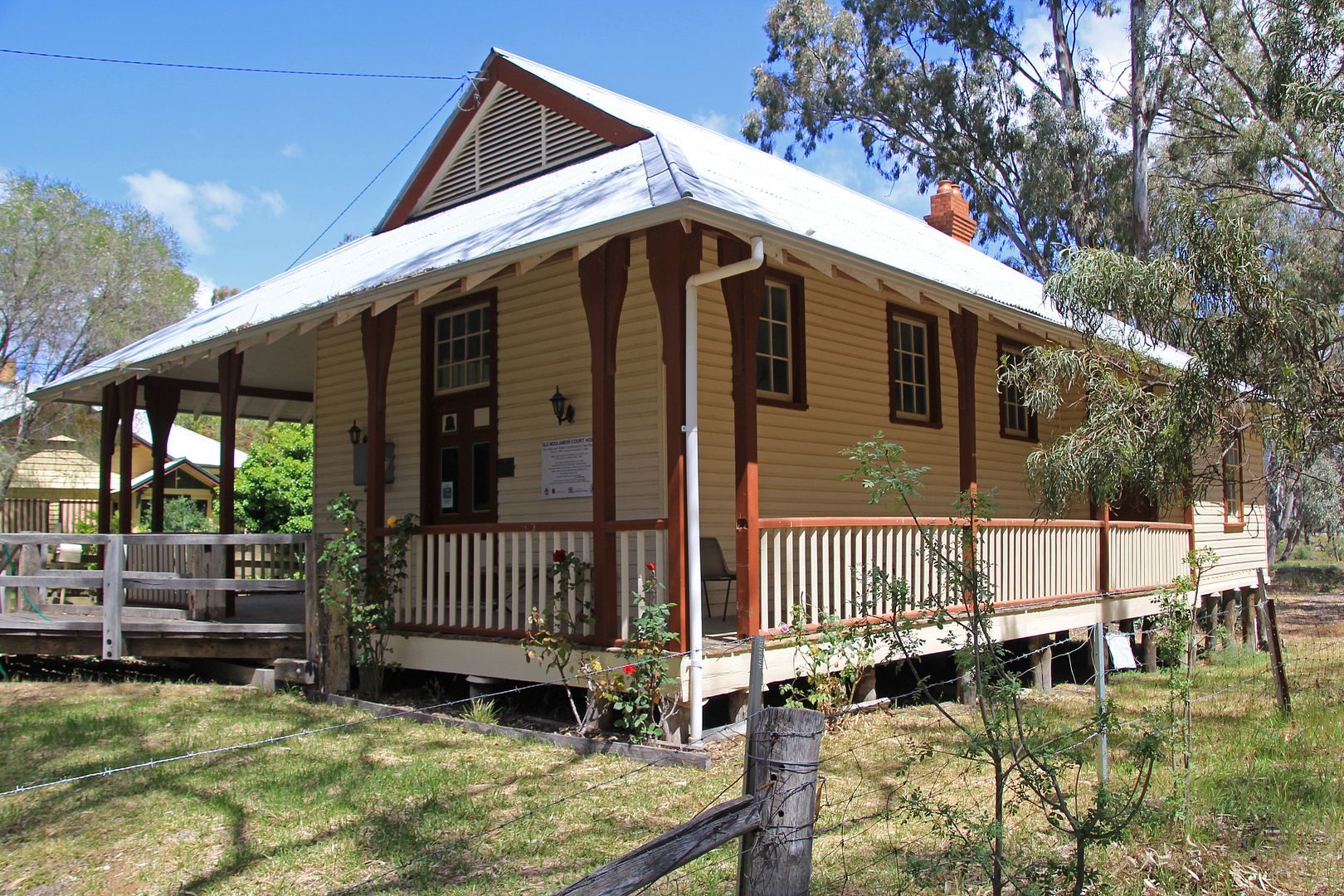
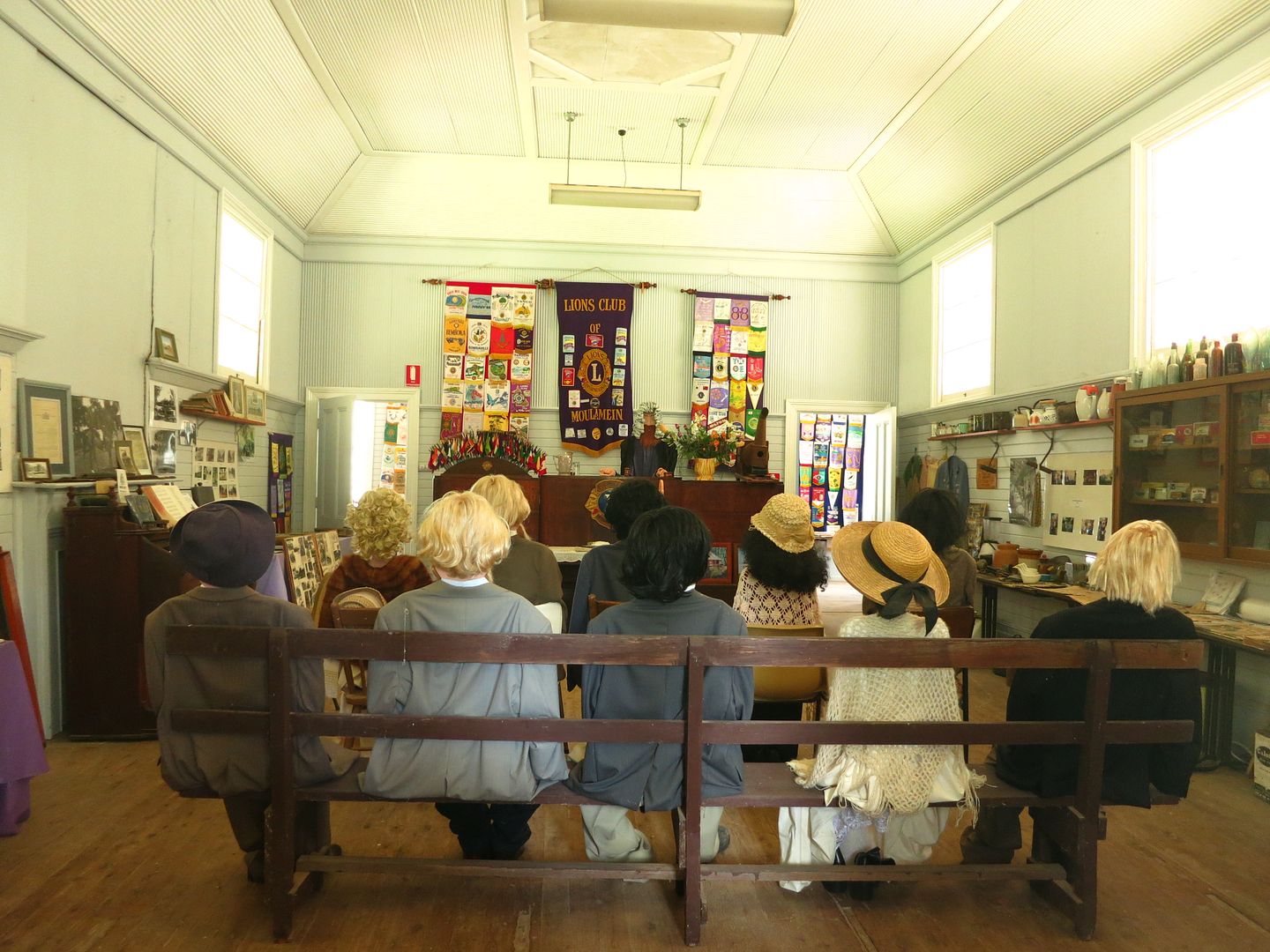
The local garage had undertaken a makeover that was certainly worth photographing and showing you guys. The old petrol bowsers have taken on a life of their own.
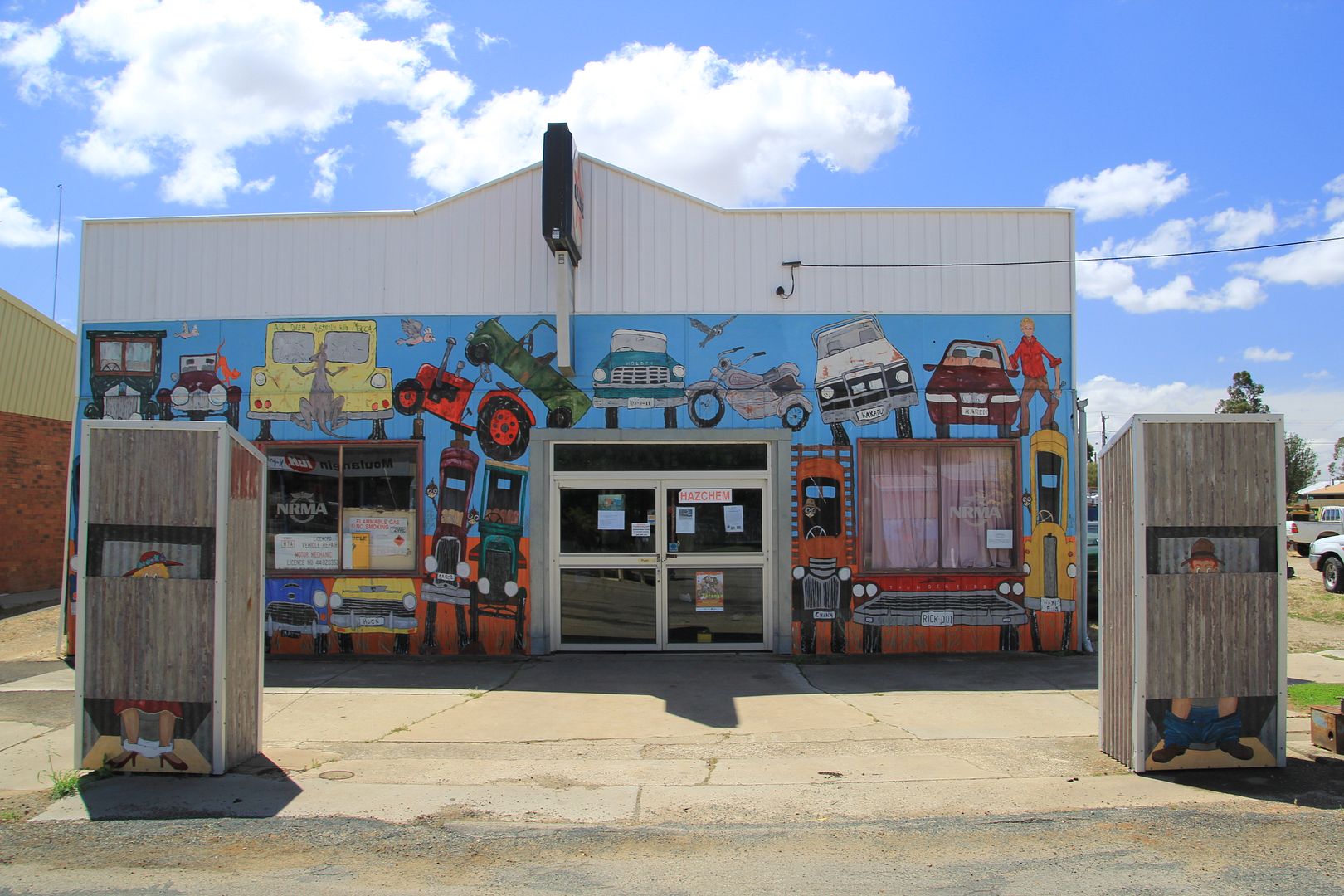
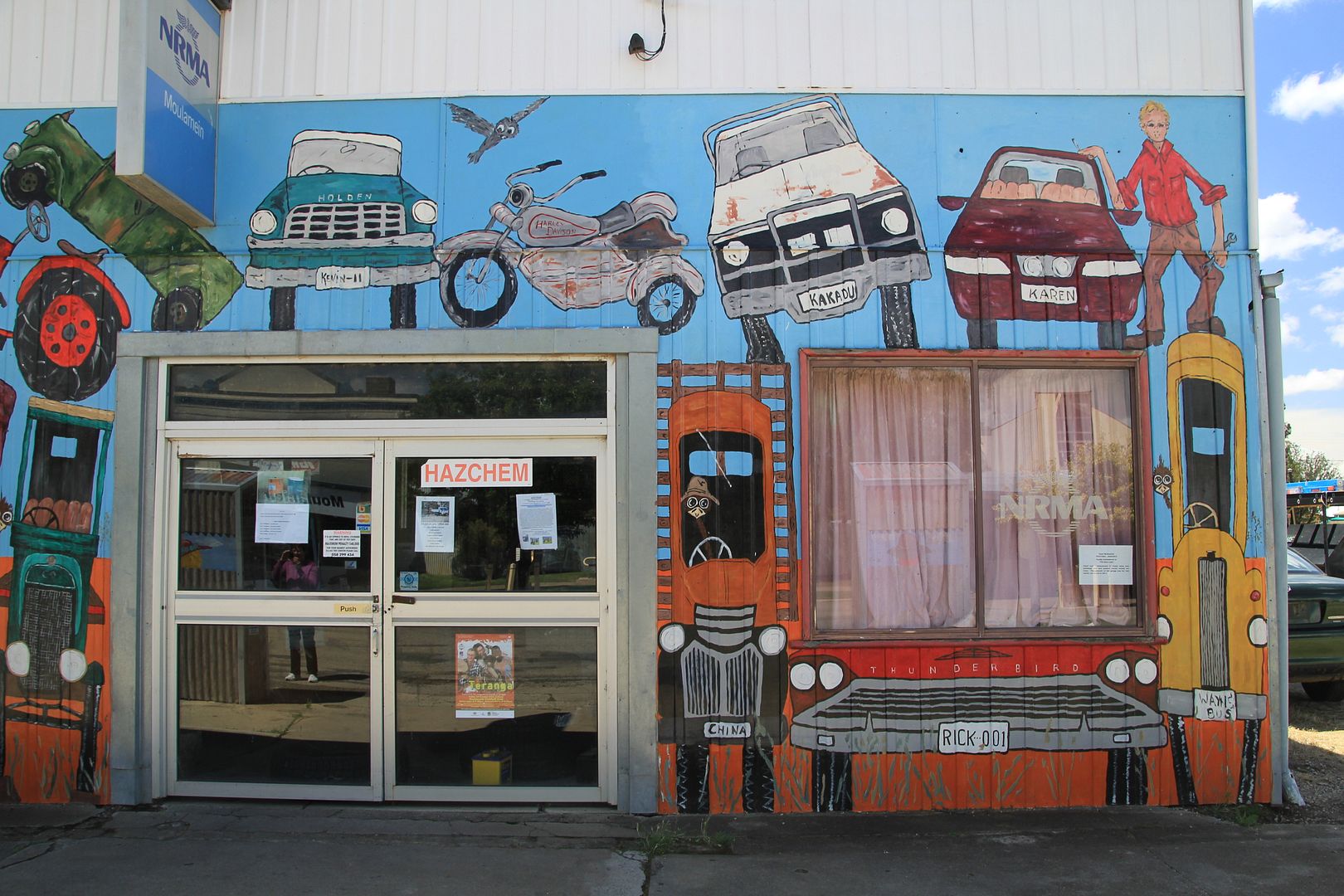
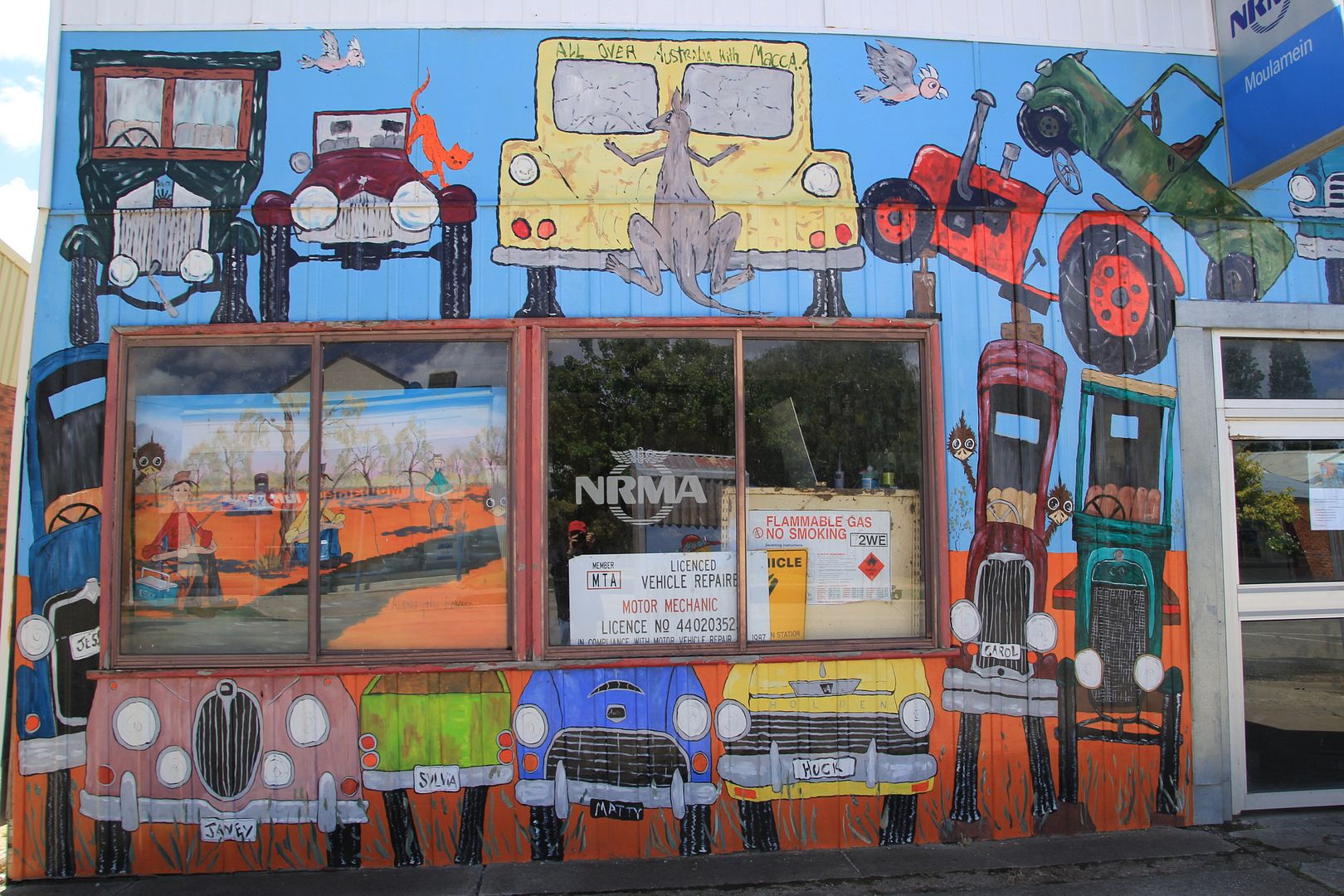
From Moulamein we headed directly north and at last entered a more luxuriant region, that is so typical of the surrounding area!! Some find a landscape like this boring and mundane, but not this little chippy, I see the photographic possibilities everywhere.
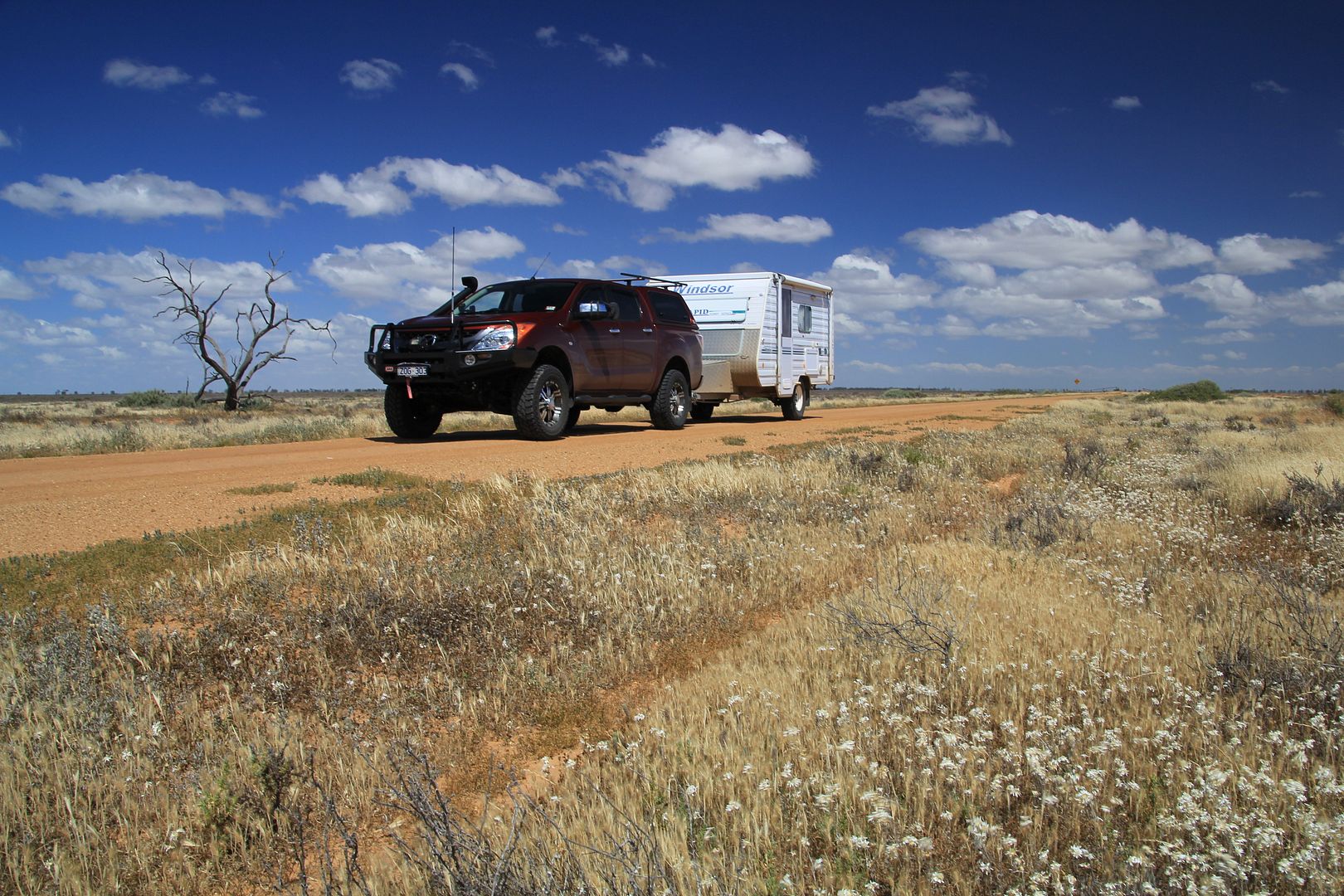
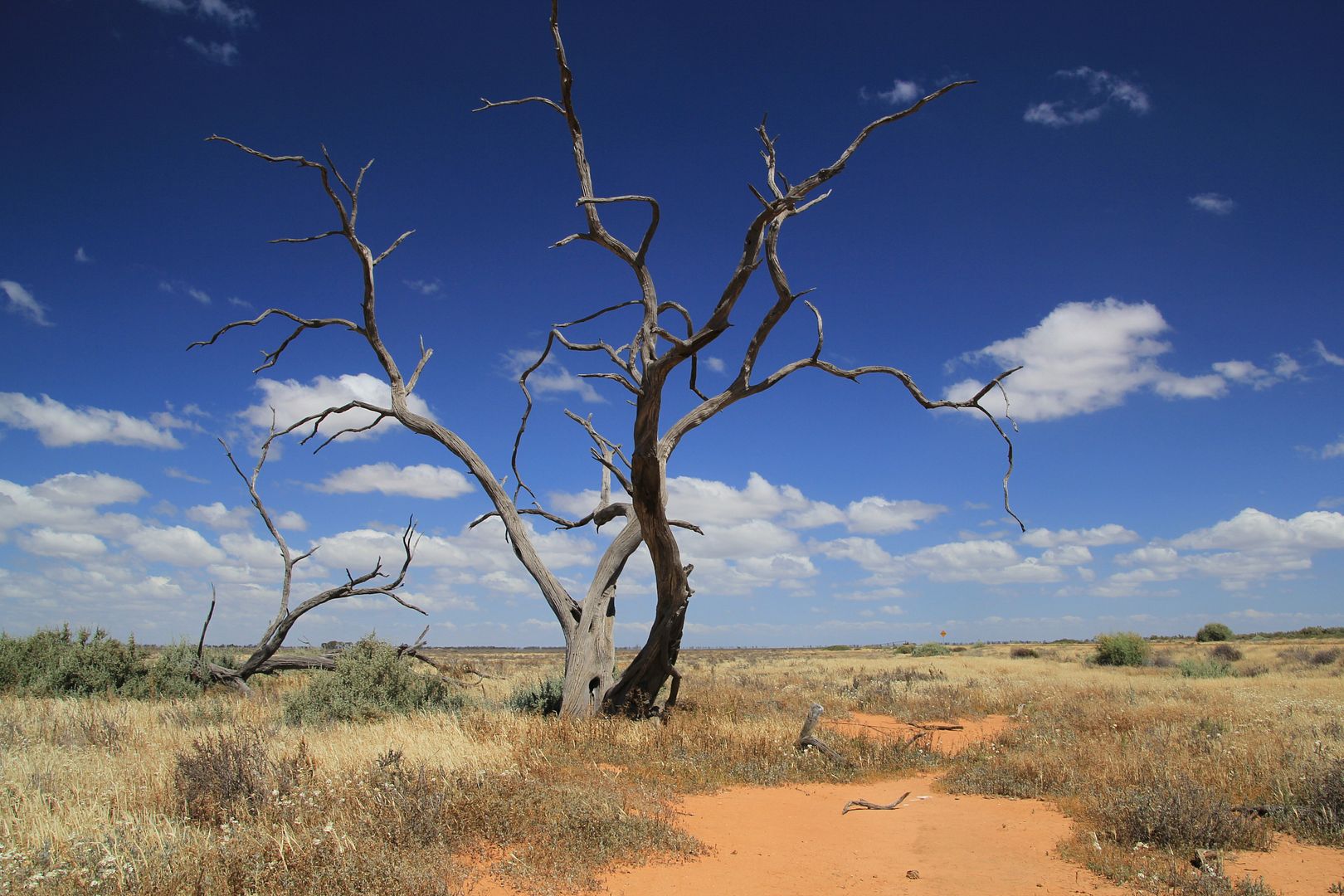
Our final destination this day was the Mamanga Campground (free) on the banks of the Murrumbidgee River in Yanga National Park, which is only a few ks from the centre of Balranald.
These next photos are of the access track into the campground.
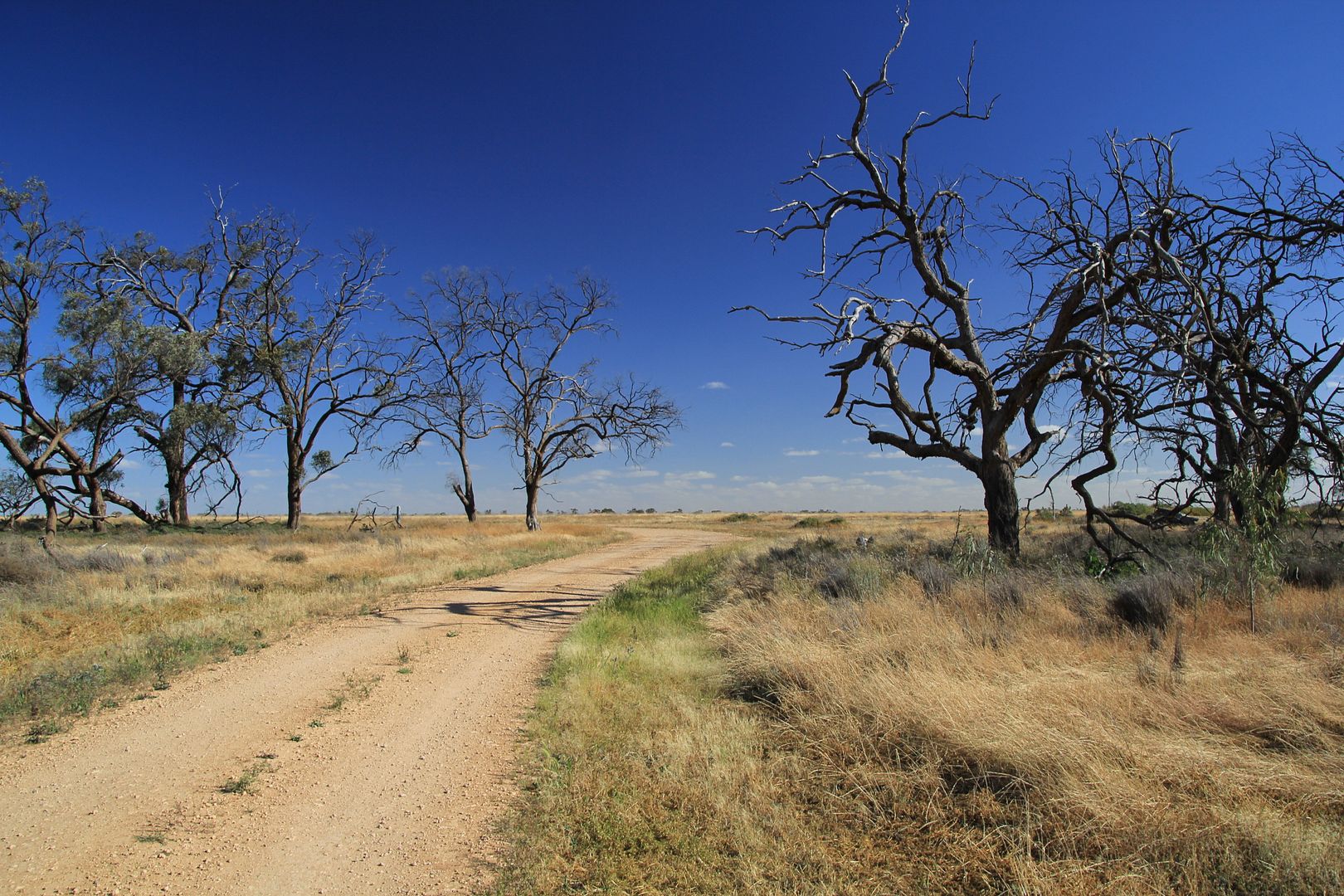
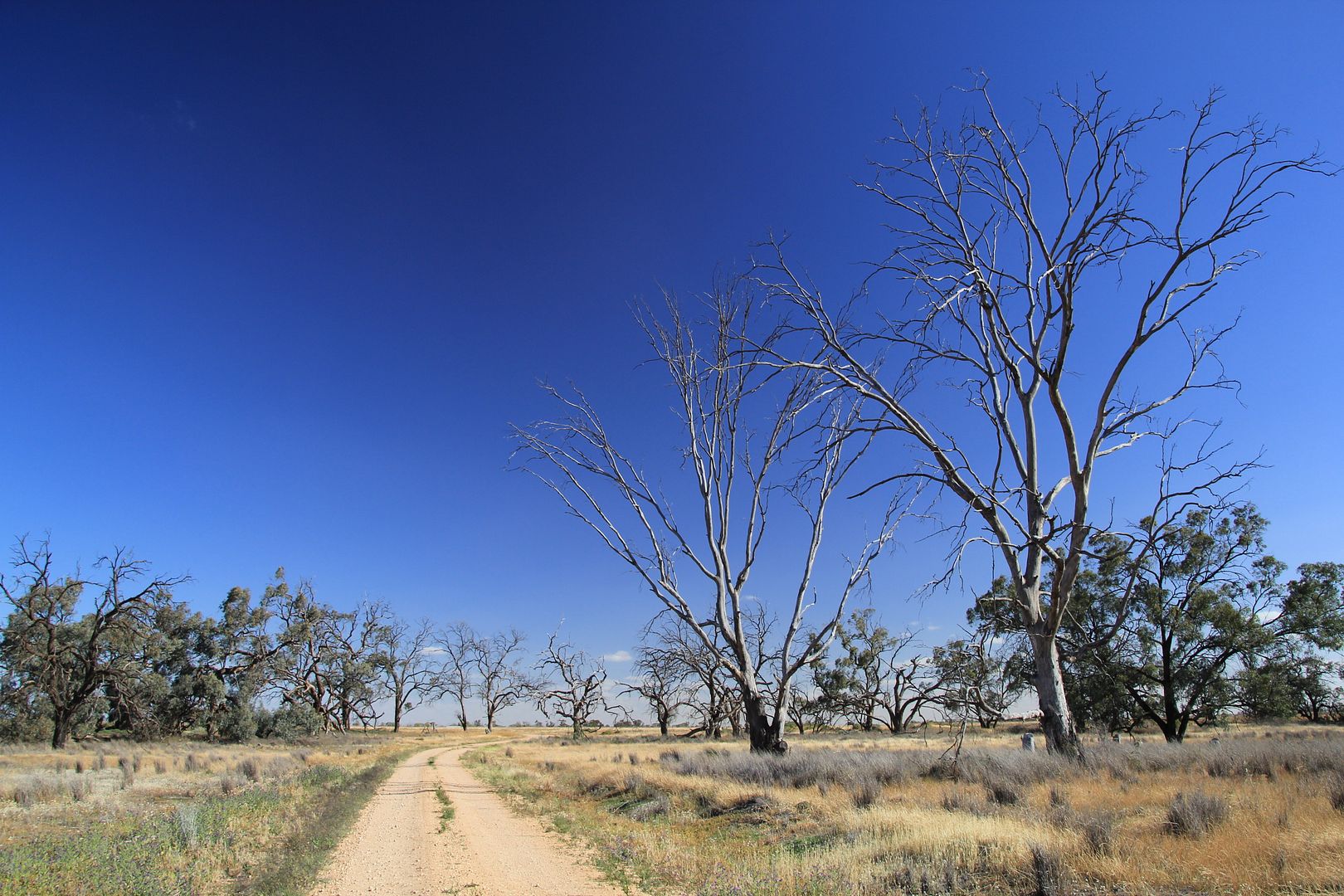
After a fairly full days driving from Melbourne (nearly 700 ks), we settled back and enjoyed the late afternoon sun, and what a lovely spot we had. I just had to hope that my childhood sleep walking episodes were well and truly behind me!
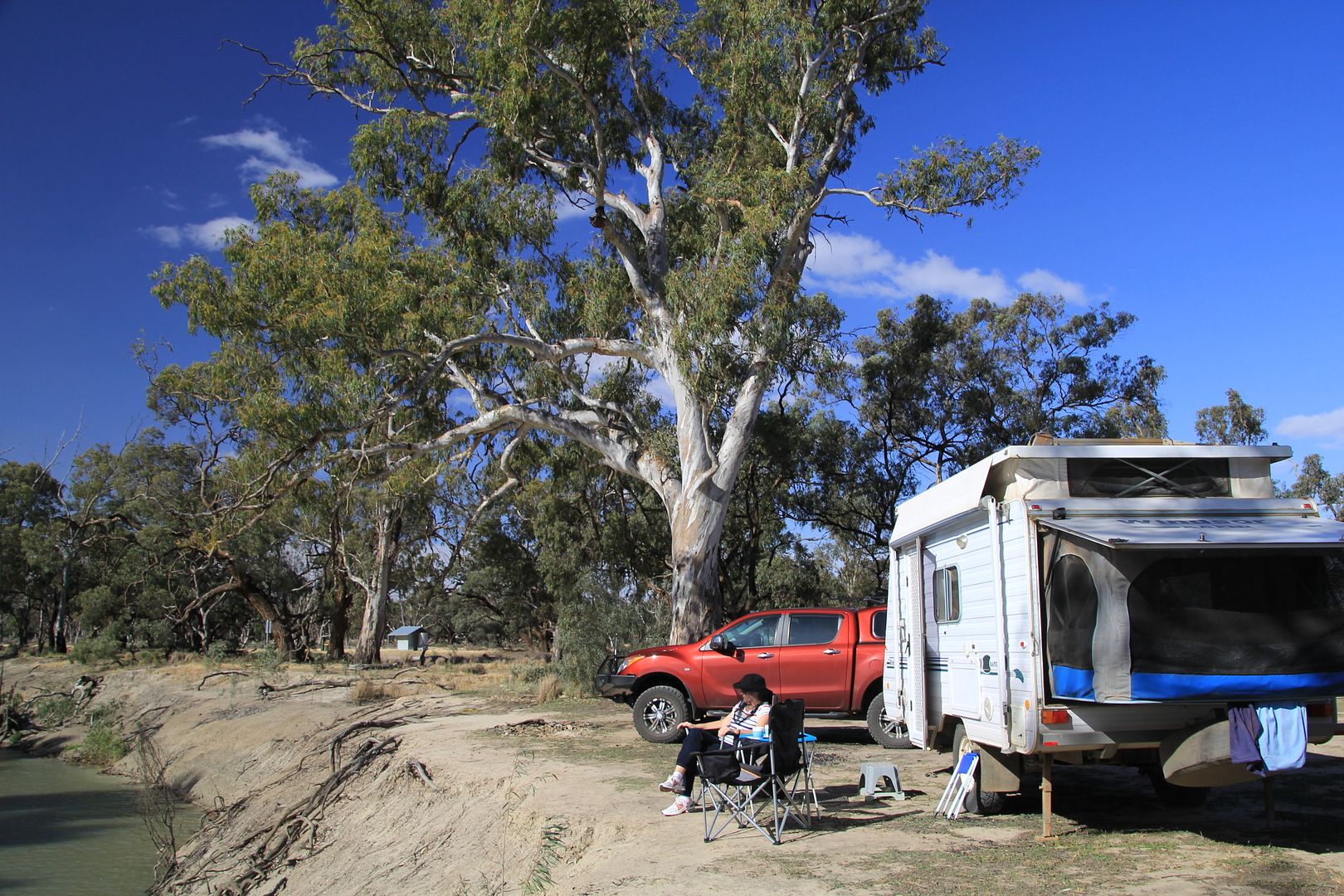
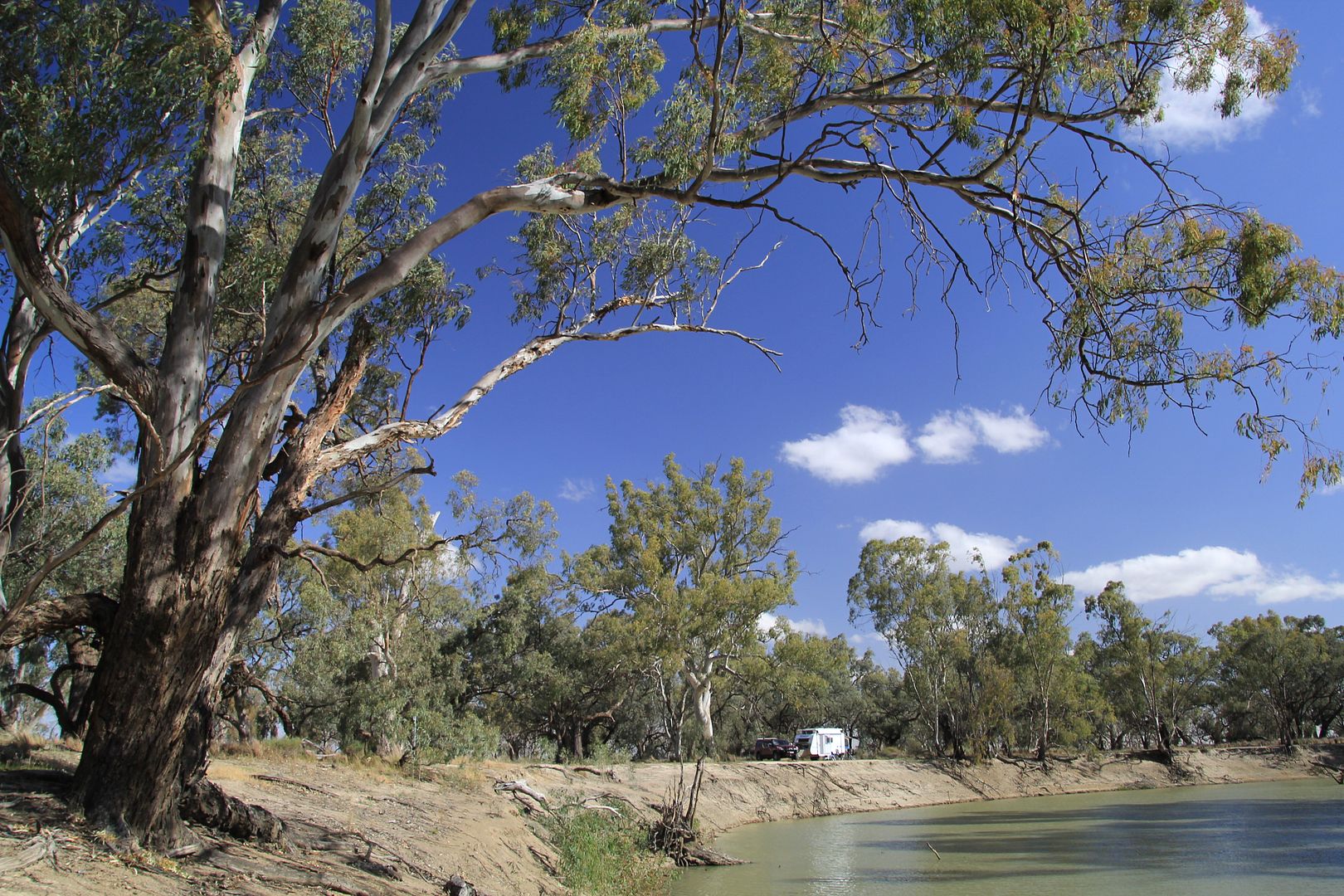
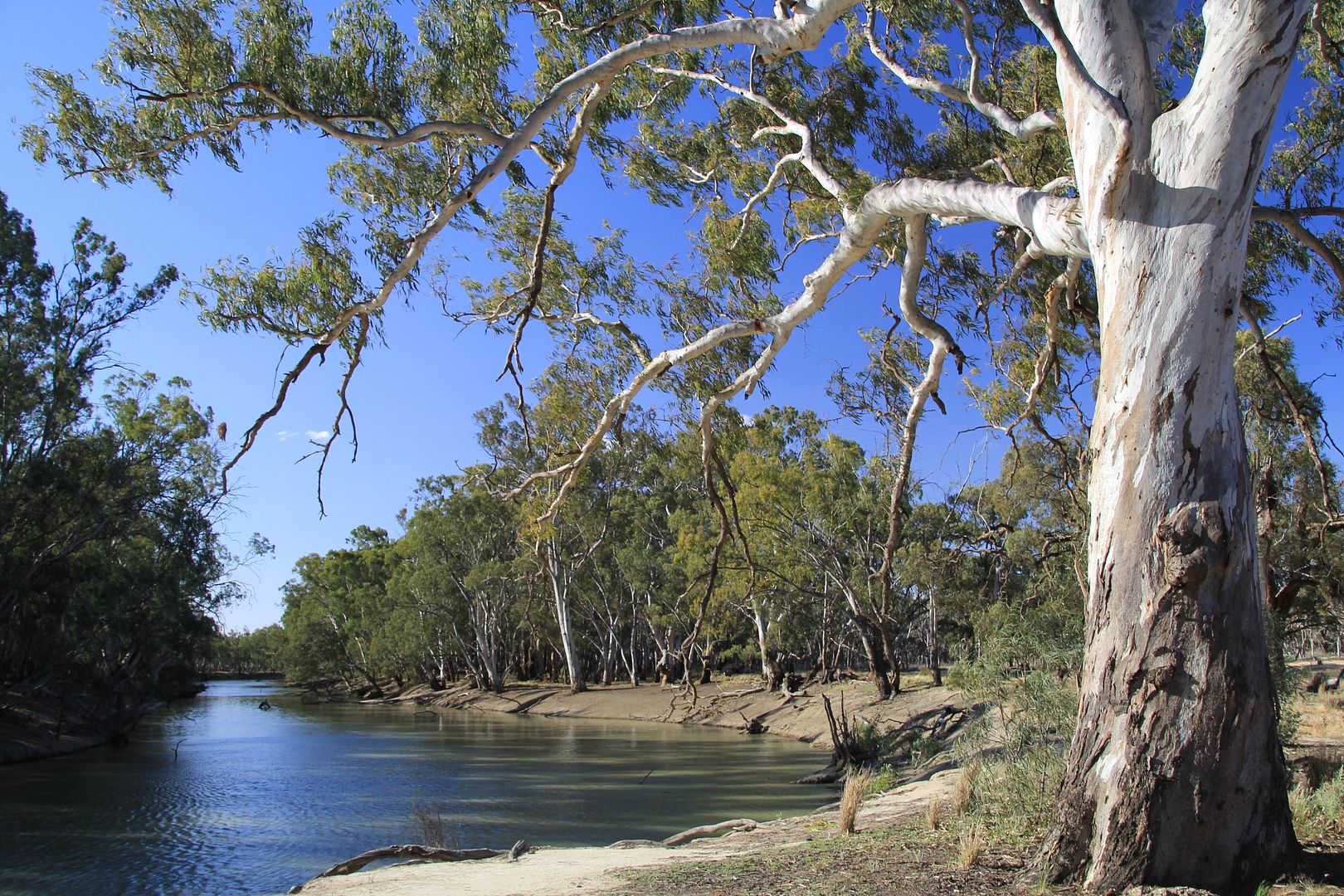
Over the 4 days we were there, the rivers changing vistas gave me plenty of opportunities to get the trigger figure firing as I capture its various moods.
Early one morning I took these reflections looking down the river from our van, then across the river and then up the river.
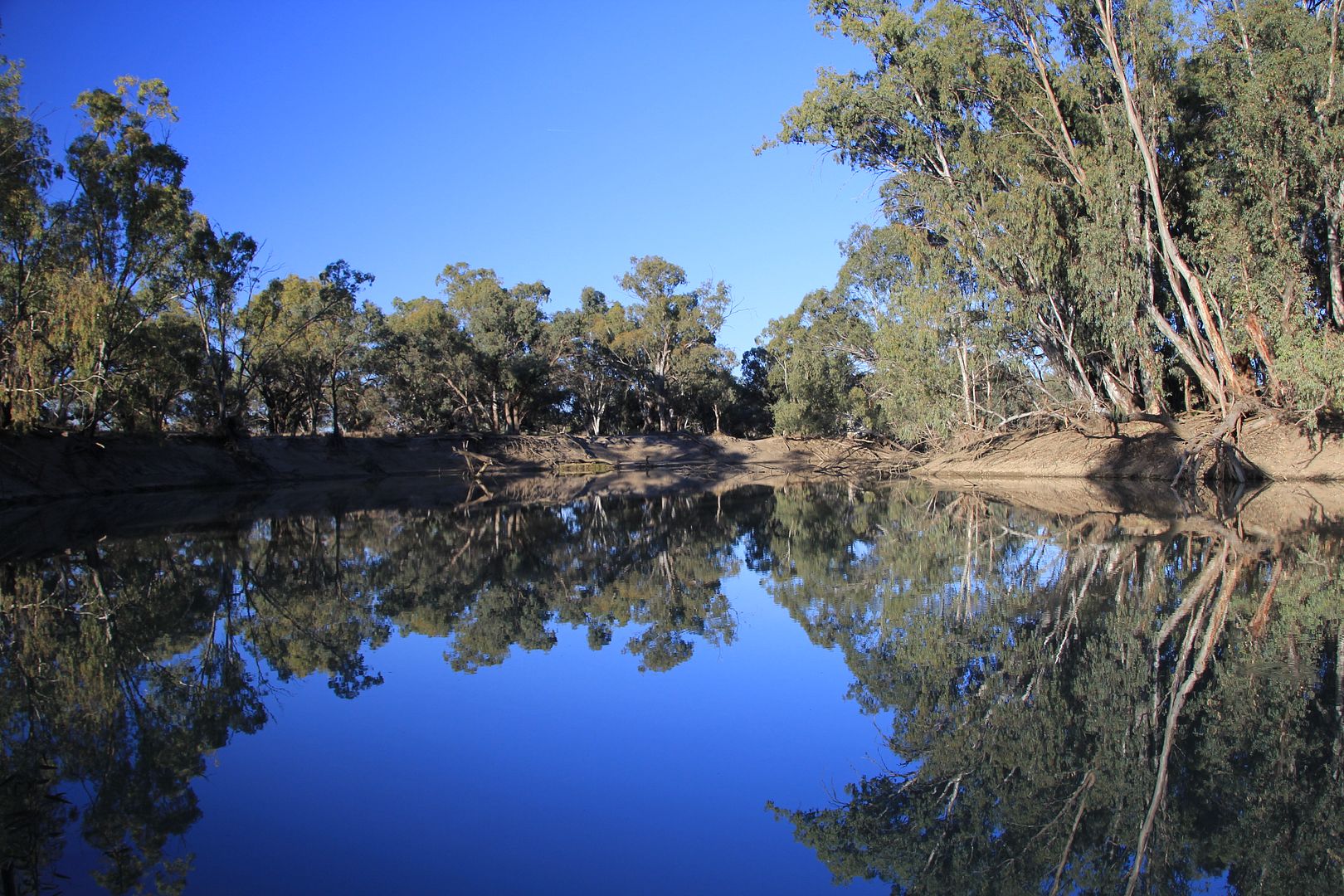
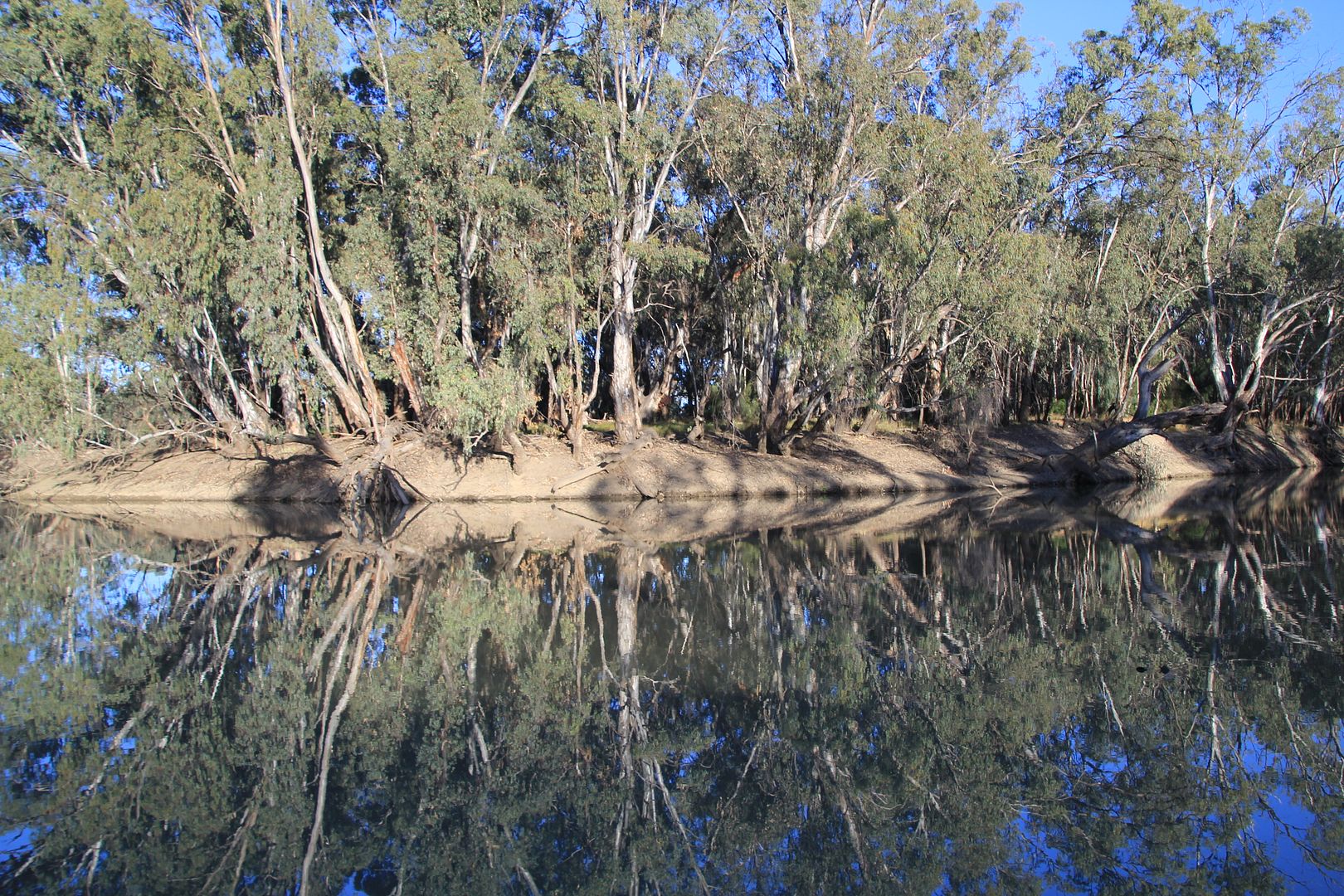
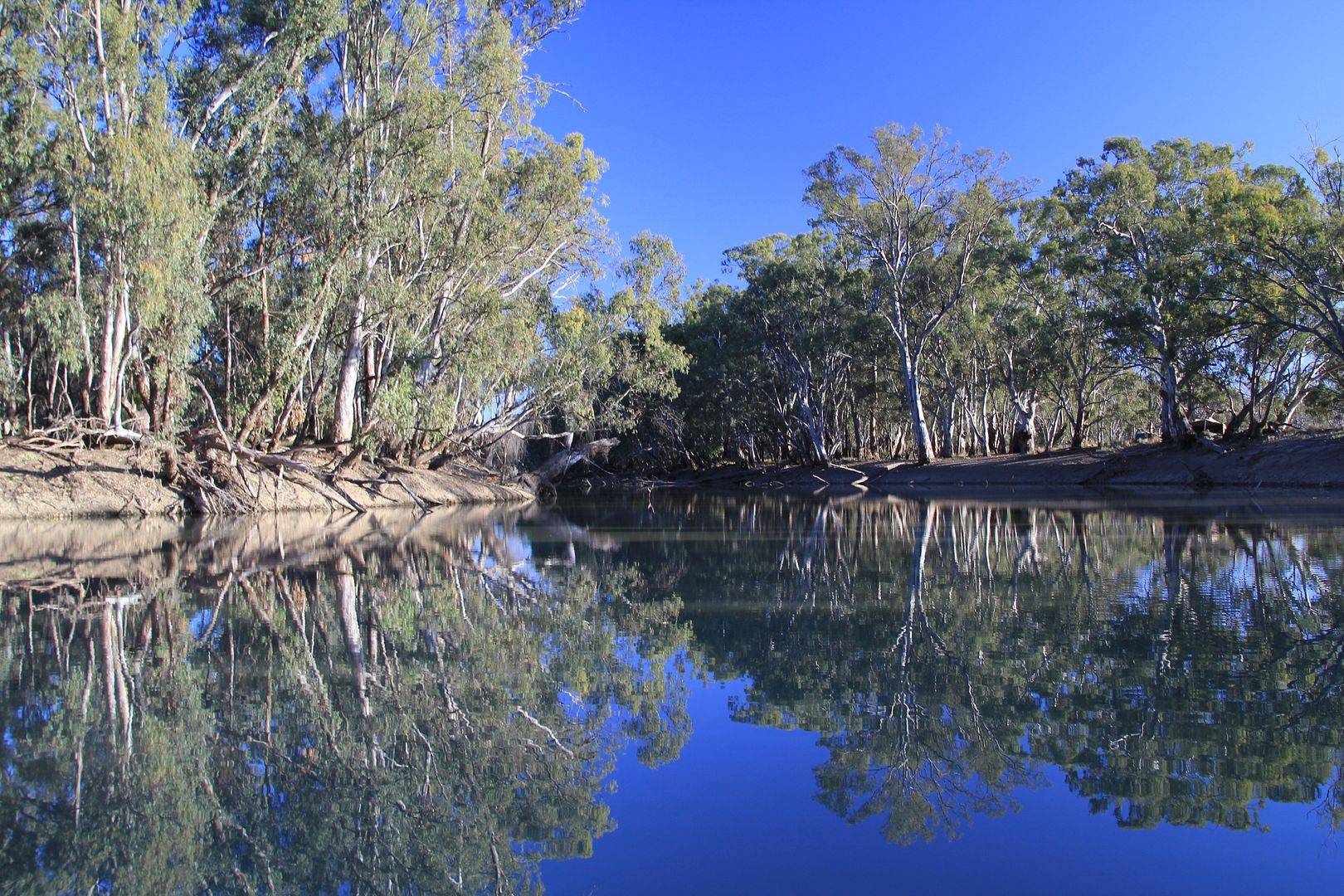
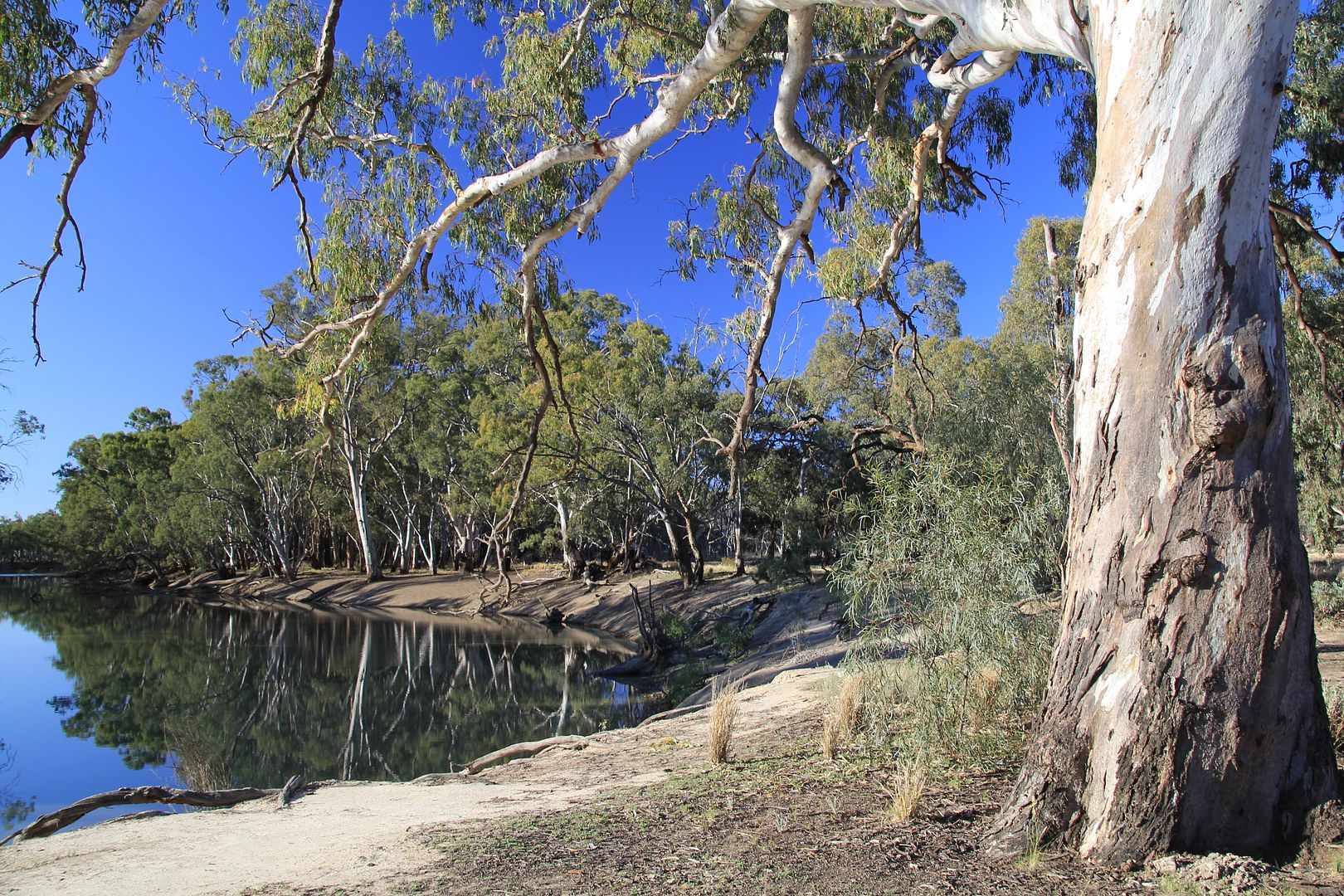
Balranald and the surrounding area is such an interesting place to visit.
The welcome signs to the town from the east and west are quite unique as well, giving you an indication of some of what it has to offer.
From the east
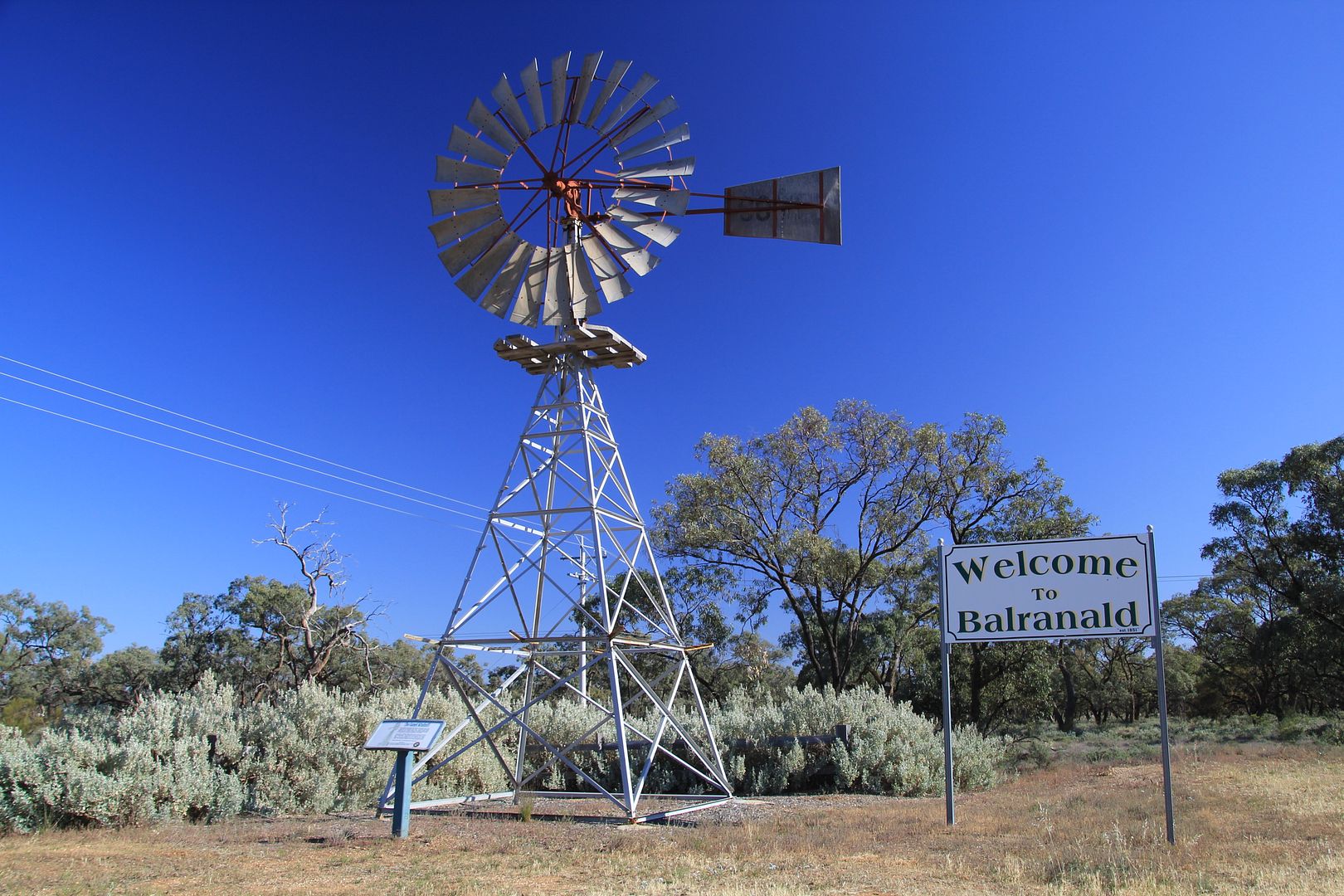
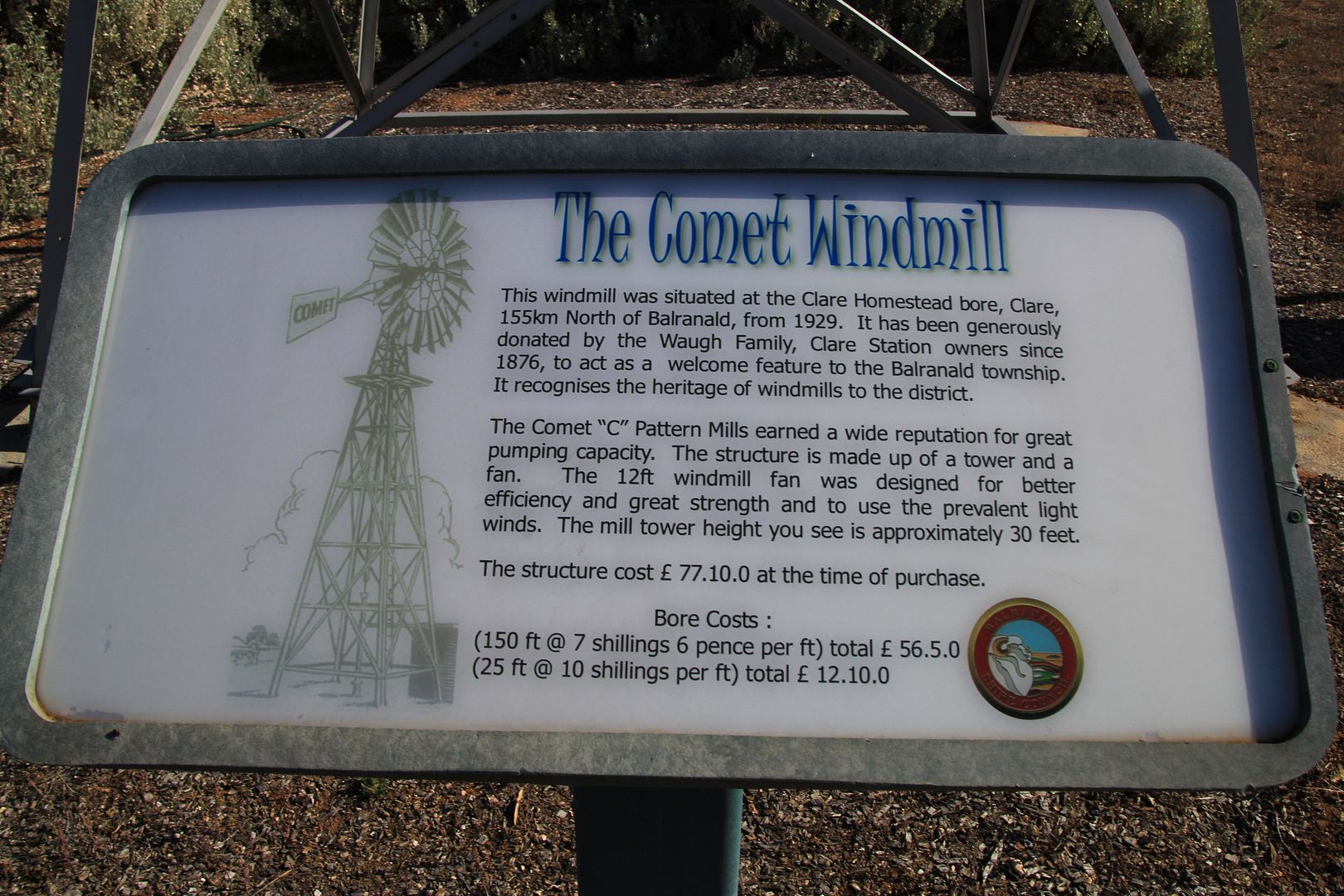
And the entrance sign to the town from the west.

Whether you use Balranald as a destination in itself or as a base to visit nearby National Parks and or World Heritage areas, you will not be disappointed. One quirky feature are the number of frog figurines or sculptures around town.
These are part of a walking tour which take you to various places around town, the figurines have been created to raise awareness of a highly endangered local frog species, the Southern Bell Frog. This large handsome bright green frog that is known for its 'Barking' rather than 'Croaking' sound can still be found locally but is under grave threats and is on the verge of extinction.
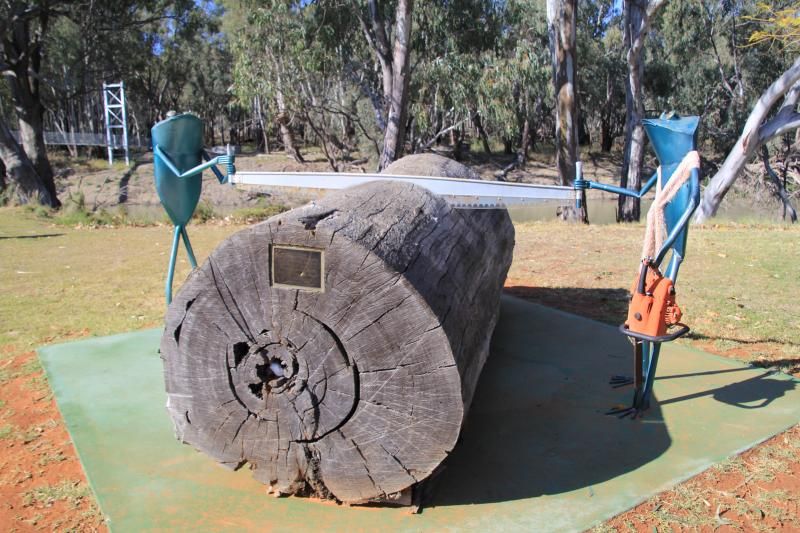
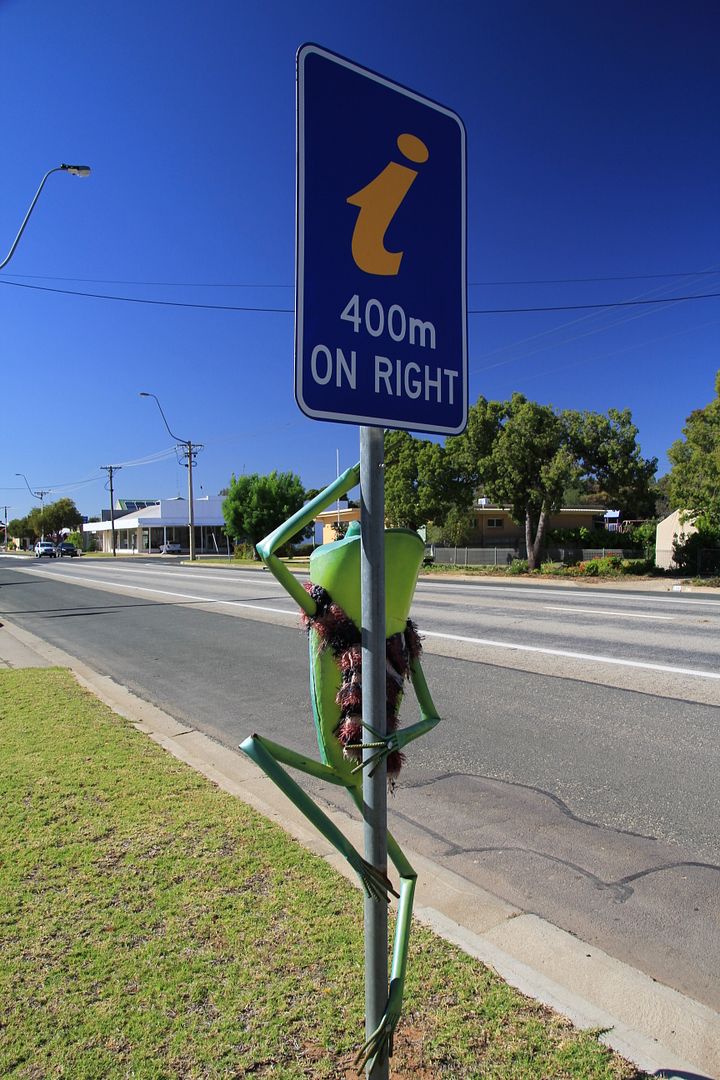
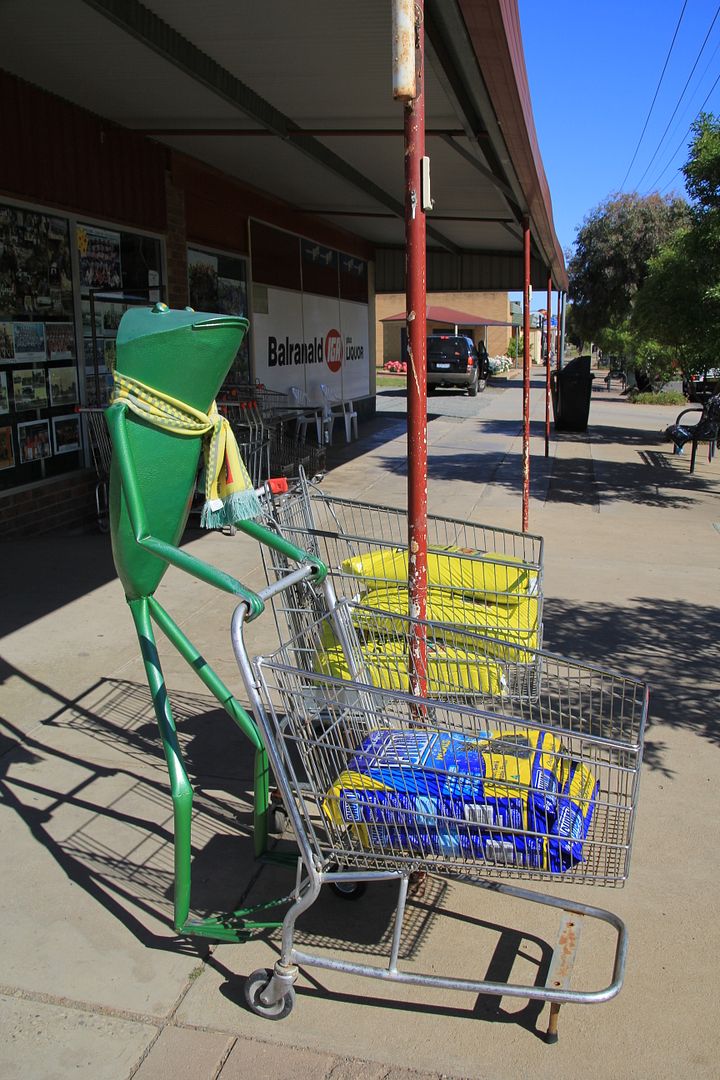

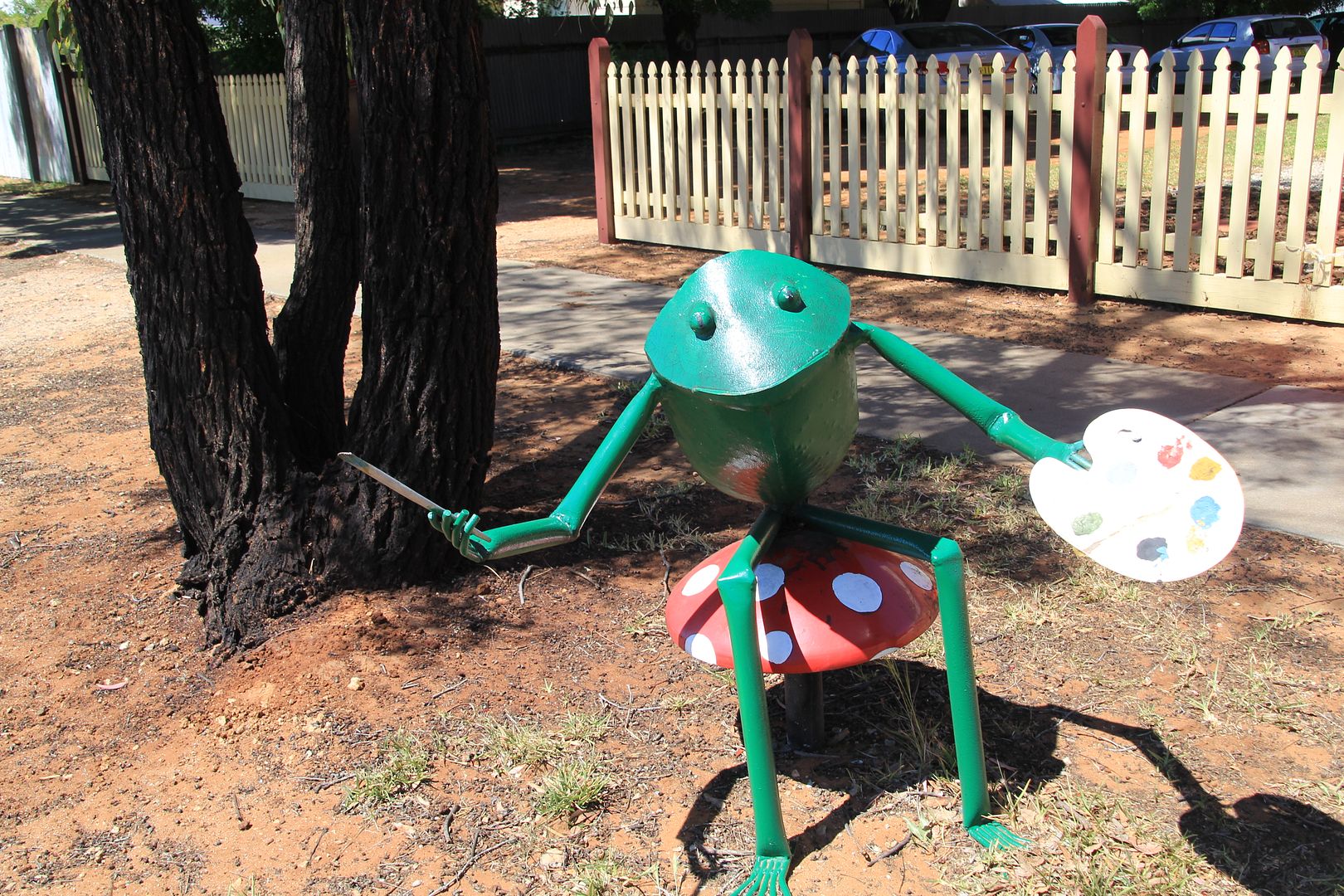
Even the local residents and businesses have frogs on display.

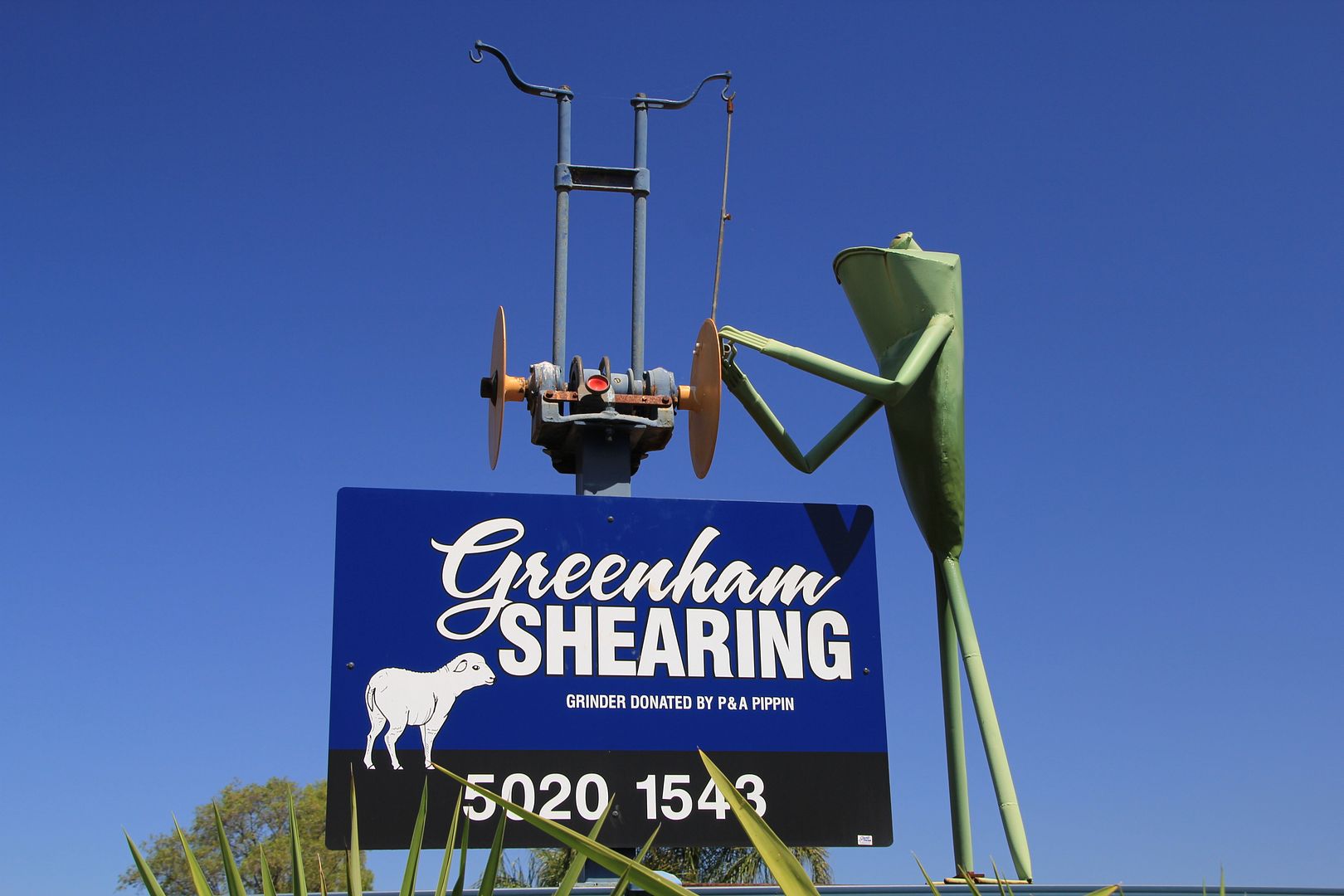
A recently constructed footbridge in a local park beside the river.
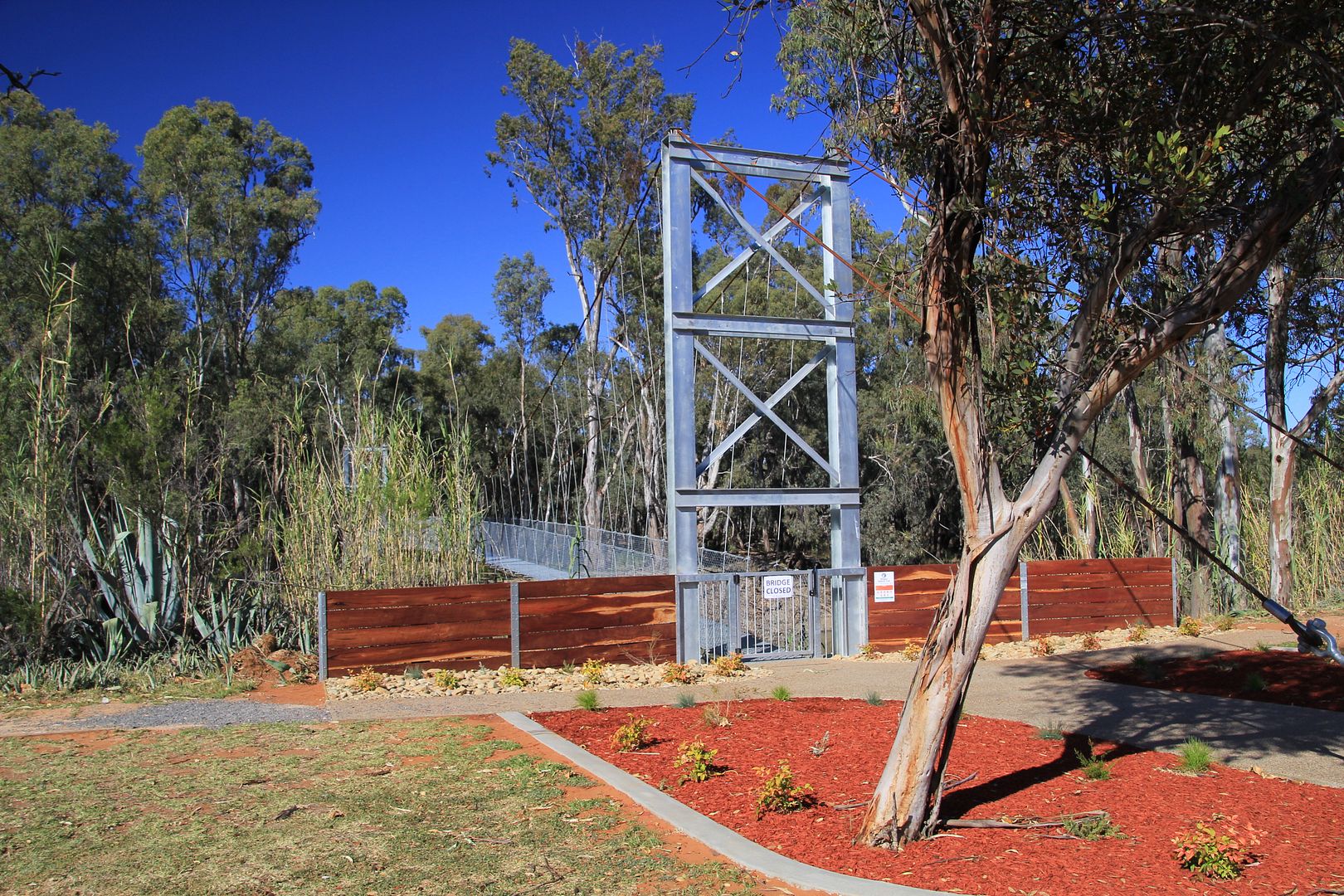
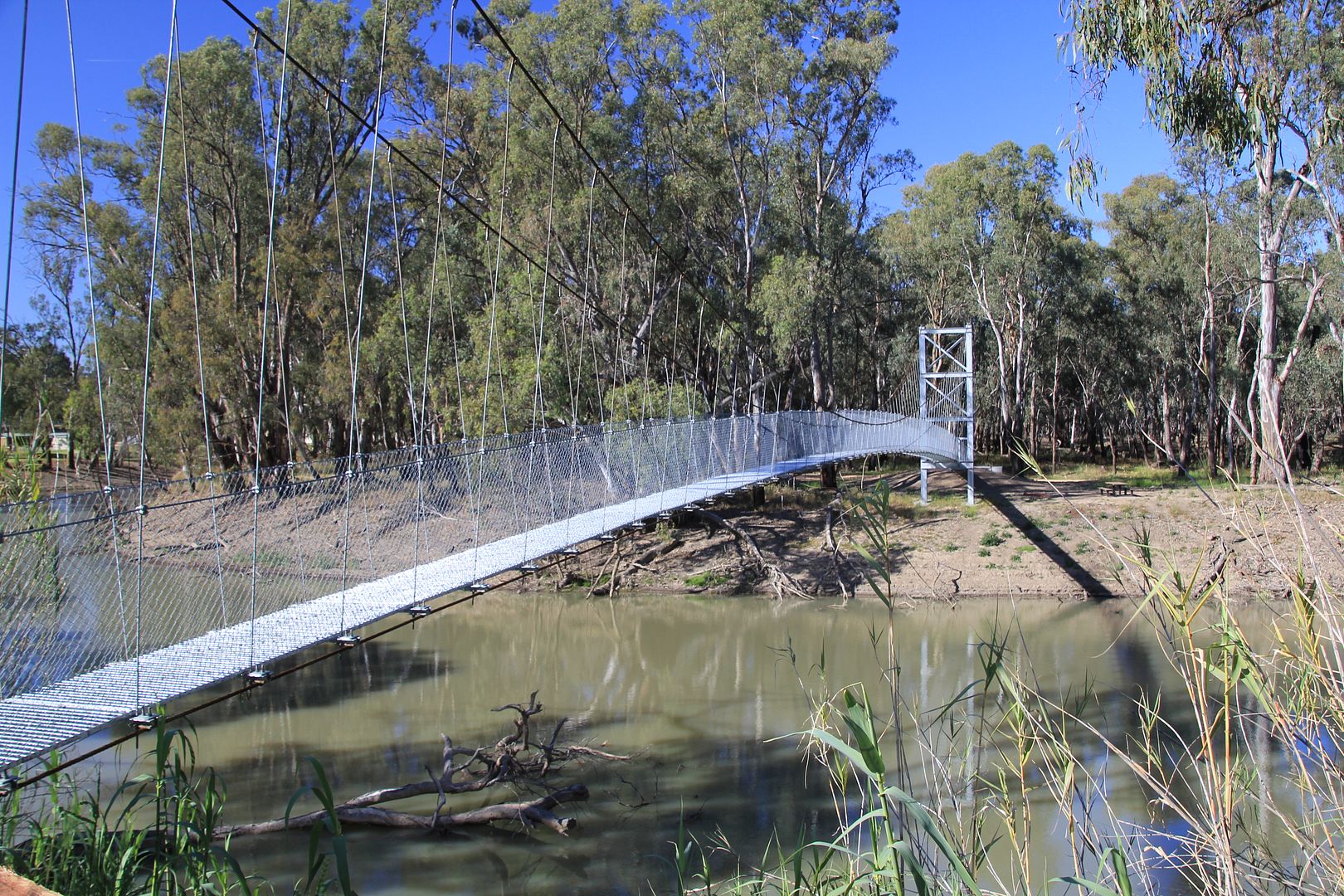
A short distance out of town is an aboriginal only cemetery. This was something I hadnít been to before and it was interesting walking around the resting place of some of our indigenous people.

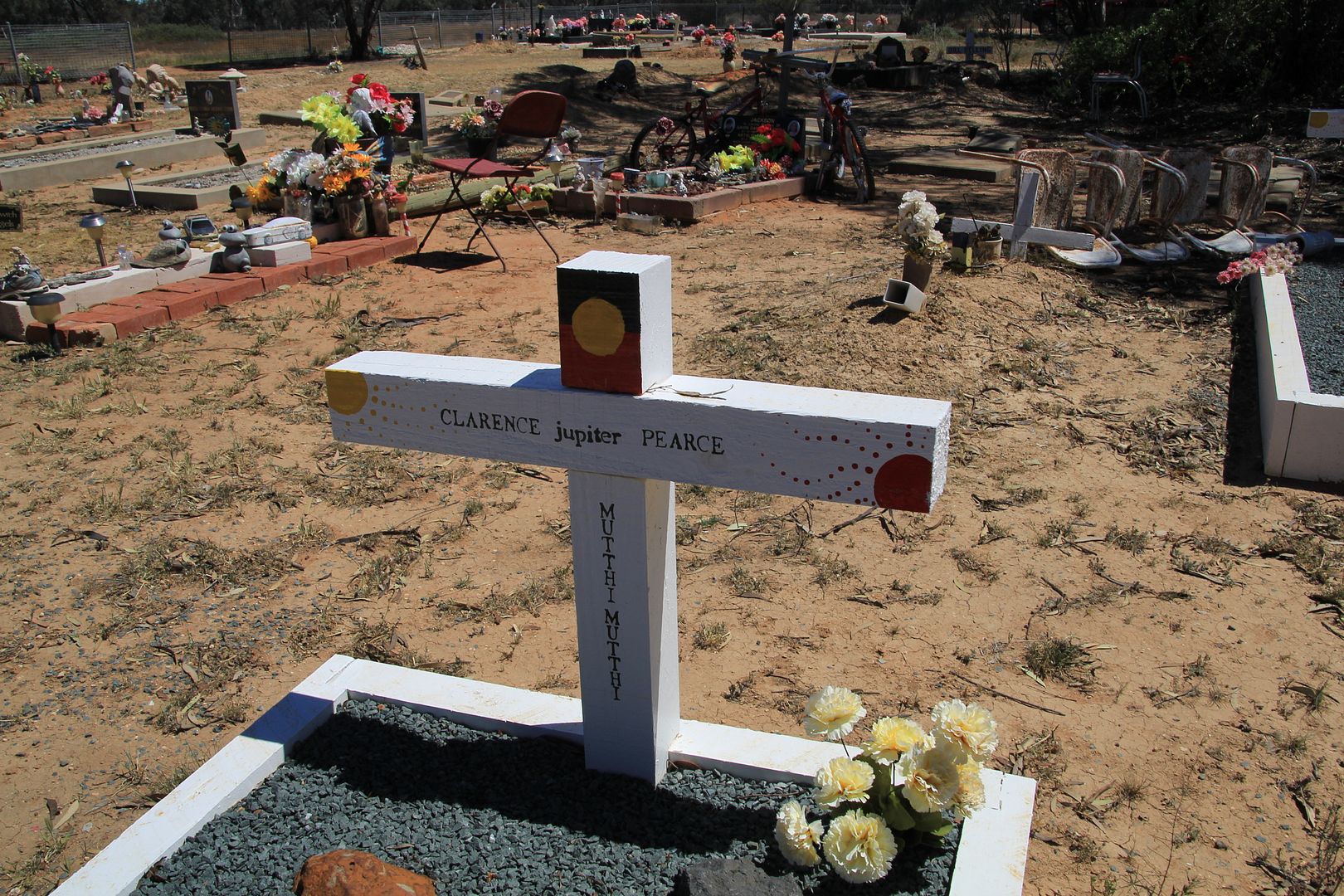

Here are a few locals that we saw while pottering about the area.

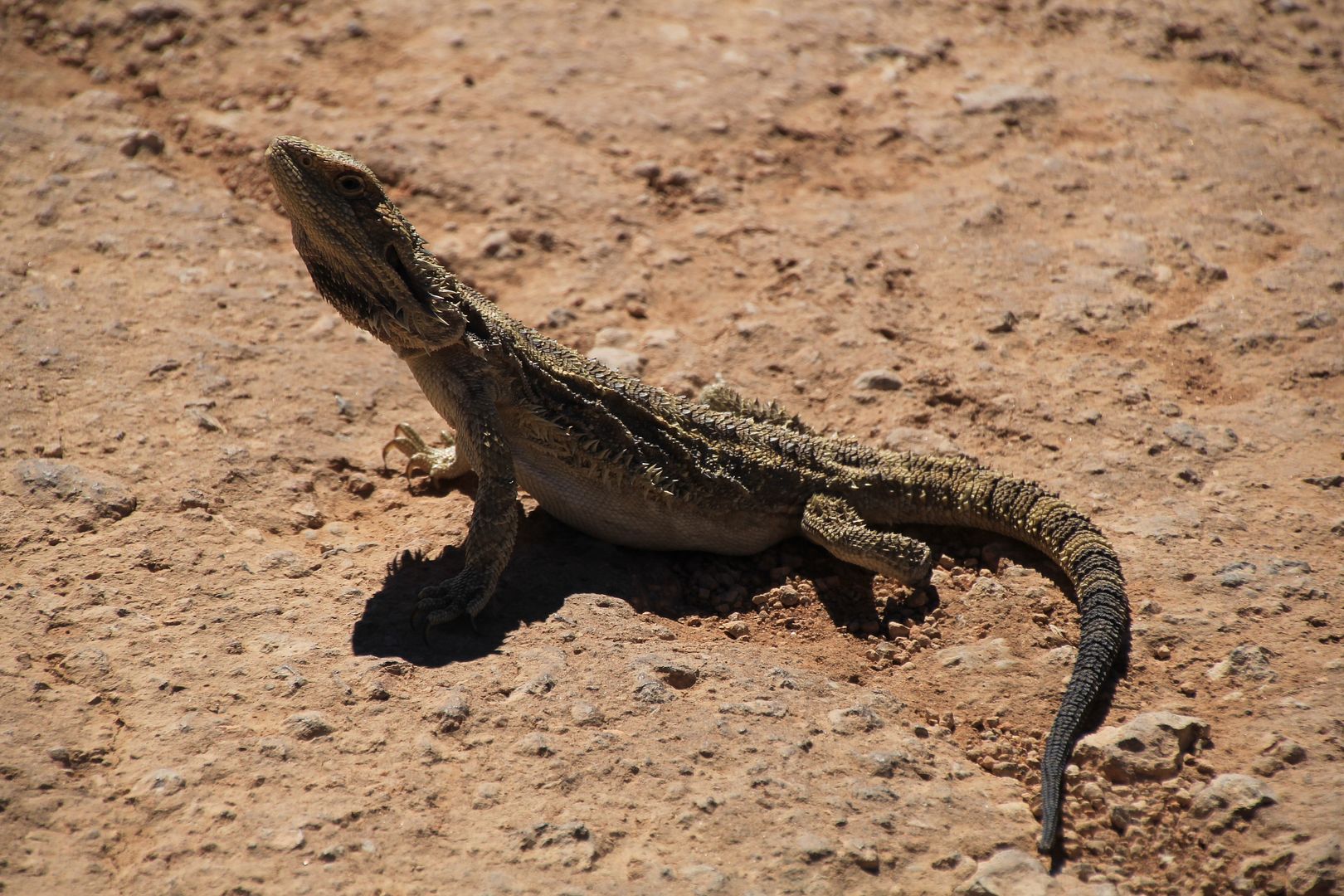
Iím always on the lookout for special photo opportunities and late on each day I would watch the sky for cloud formations which may give an indication of what was to follow. There was one evening where there was a possibility of a nice sunset so we walked from our van to a spot that would give us a foreground and some silhouettes, and then we sat and waited.
Not only did the sky light up nicely, but so did some nearby trees that reflected the colours of the sky.
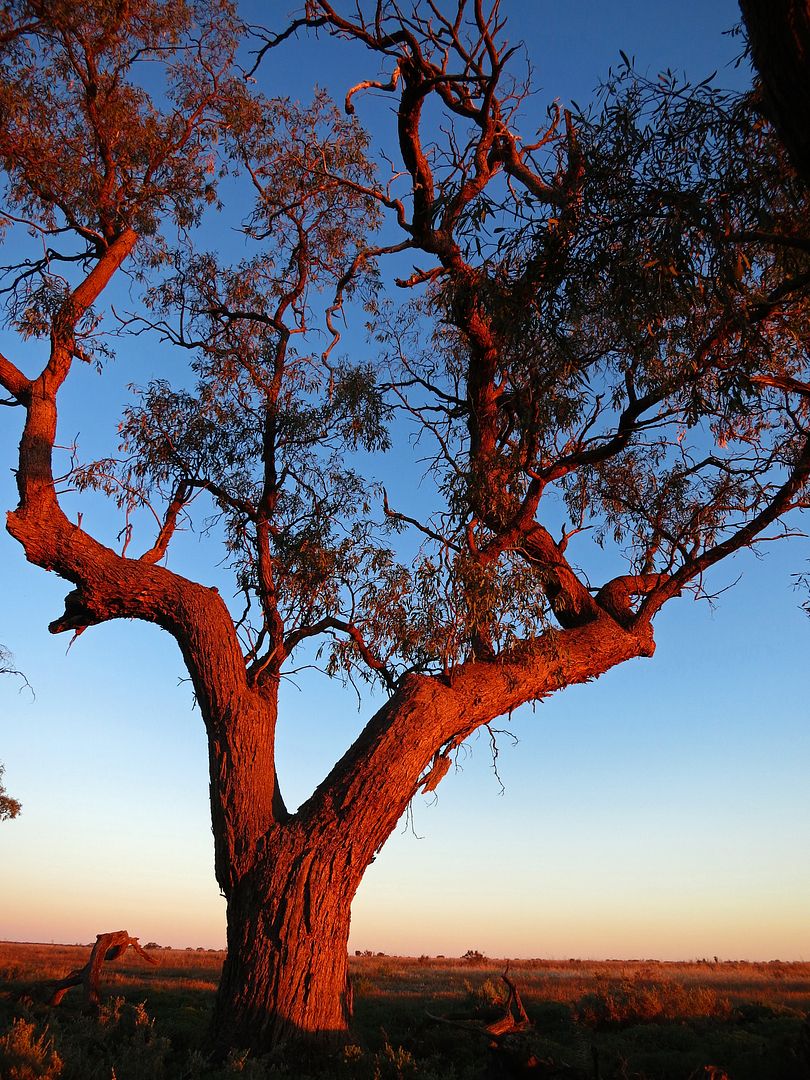

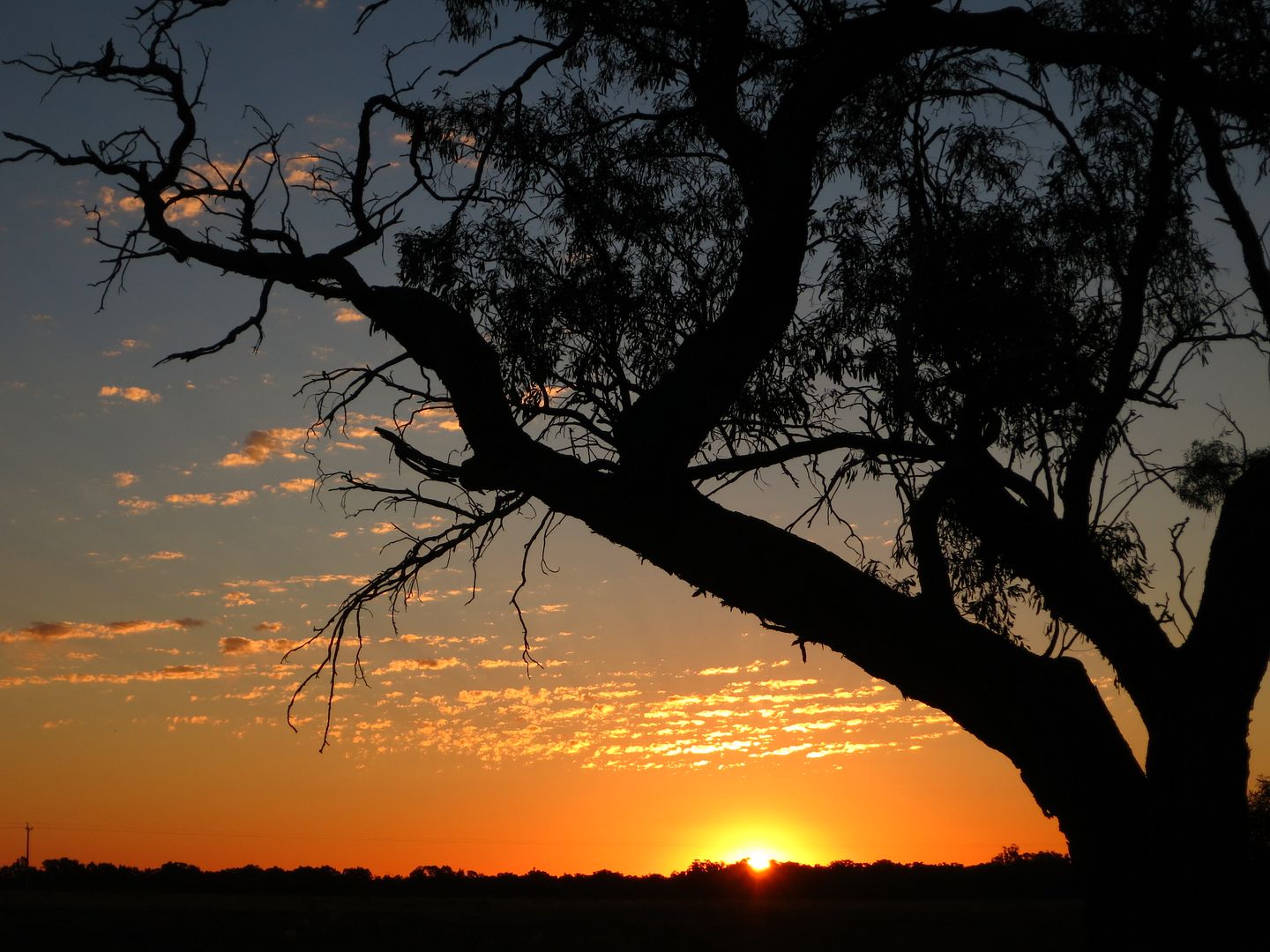
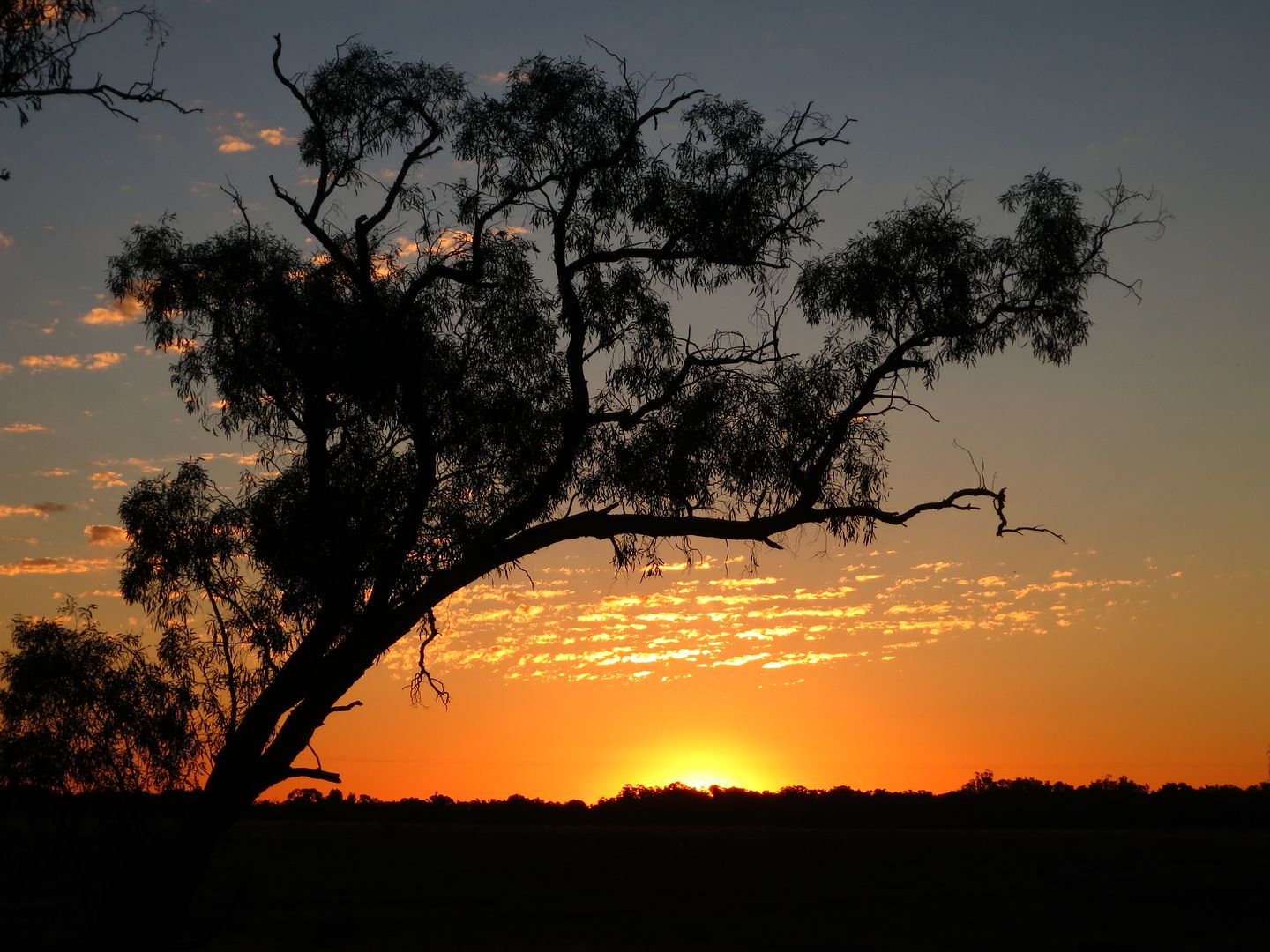
Within walking distance of our campsite, can be found the shearing sheds and other associated out buildings of the old Yanga Station. At one stage it was the largest privately owned sheep station in the southern hemisphere, covering nearly a quarter of a million hectares. It was established by William Wentworth, the famous NSW explorer, in the 1830s.
The Yanga Woolshed as it is now known, was built in the late 1800s. Once the largest, most modern woolshed in the district, it could house 3,000 sheep and provided work for up to 40 shearers at a time. Being close to the banks of the Murrumbidgee, it†was ideally situated for the transport of the wool bales by paddle steamer to markets down stream. In the 1922 shearing season 75,016 adult sheep and 18,370 lambs were shorn, producing 2002 bales of wool.

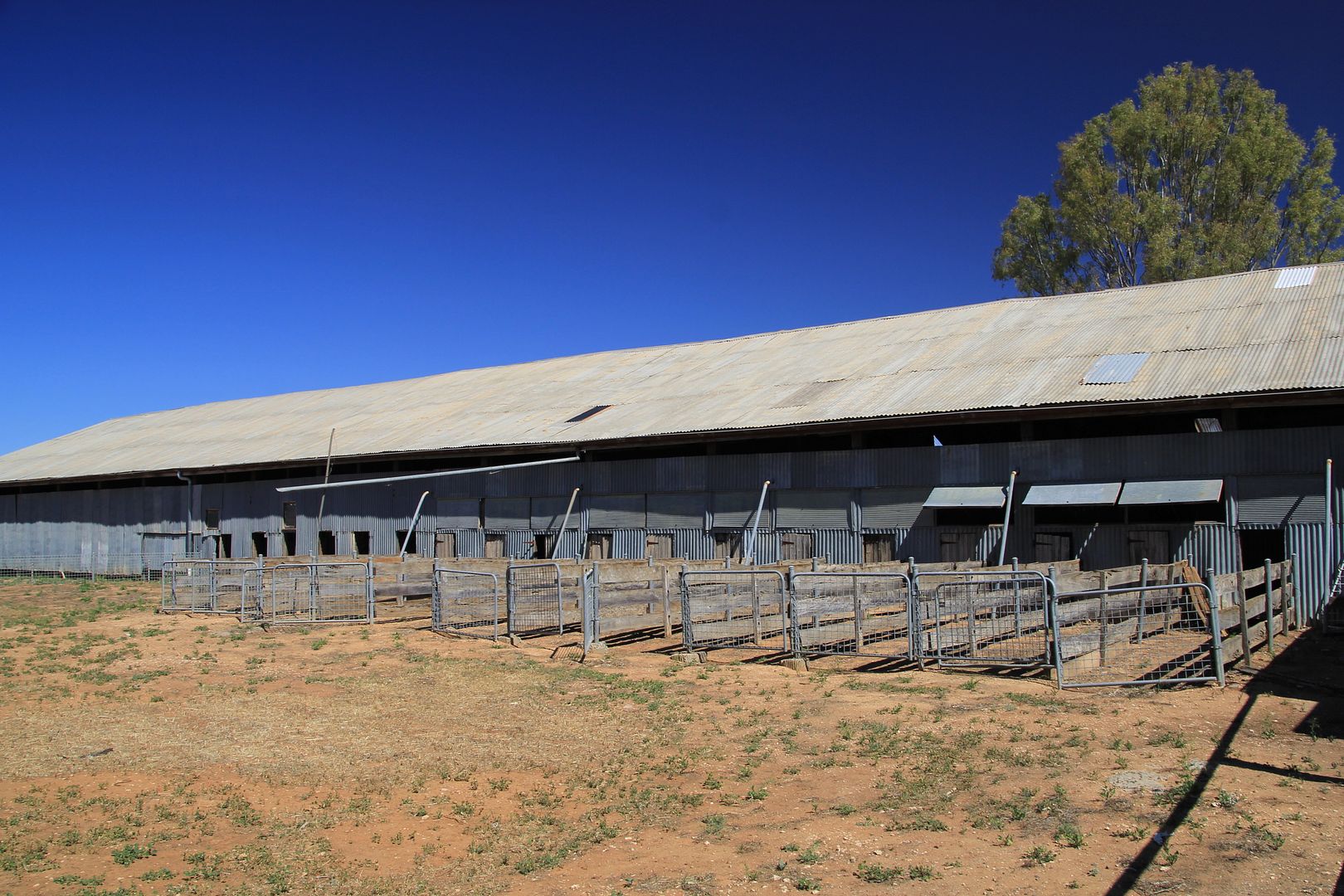

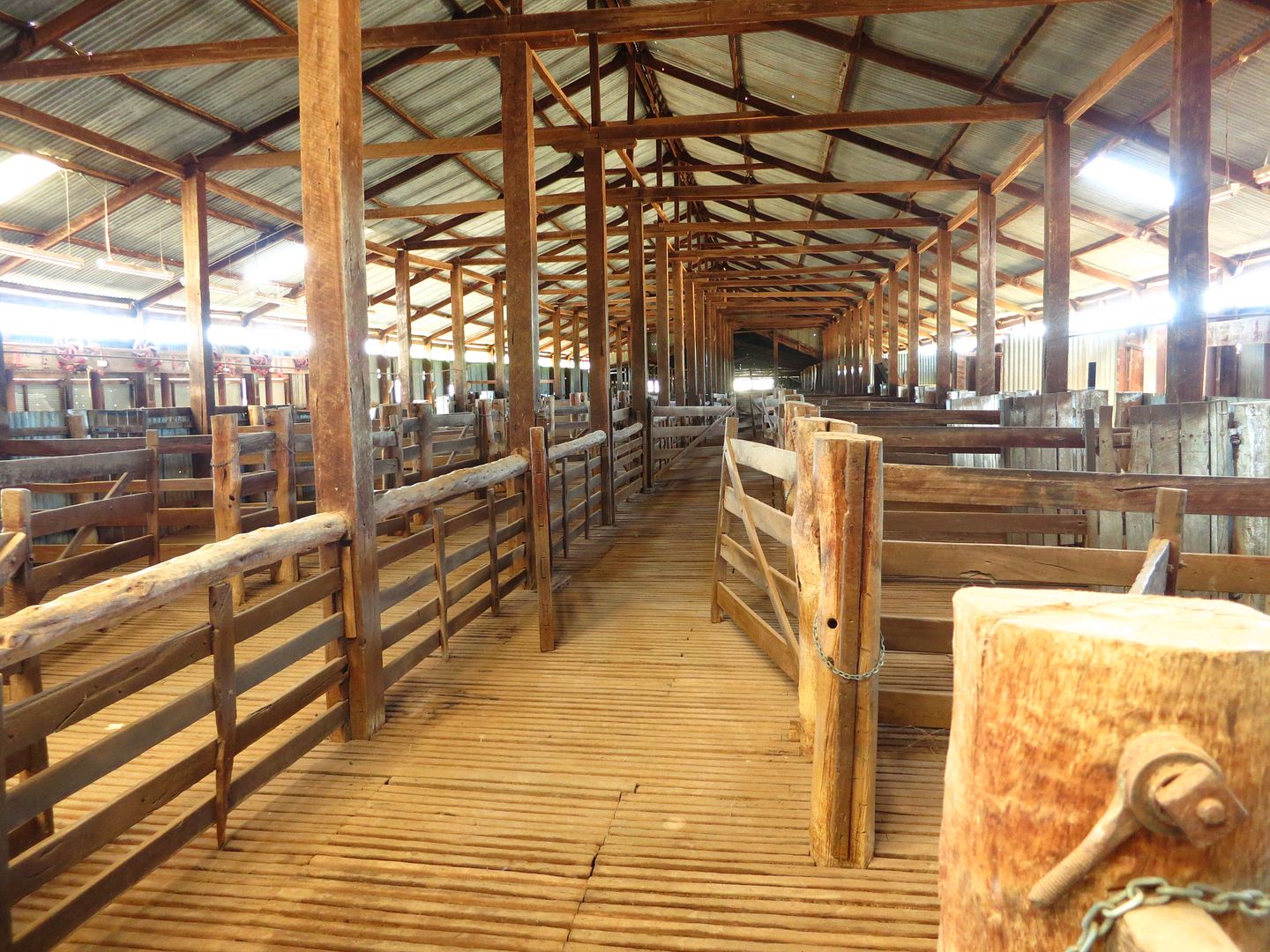

Positioned just back from the river in a prime position was the wool classers cottage. He had a higher status (and pay) than most of the other employees on the station.
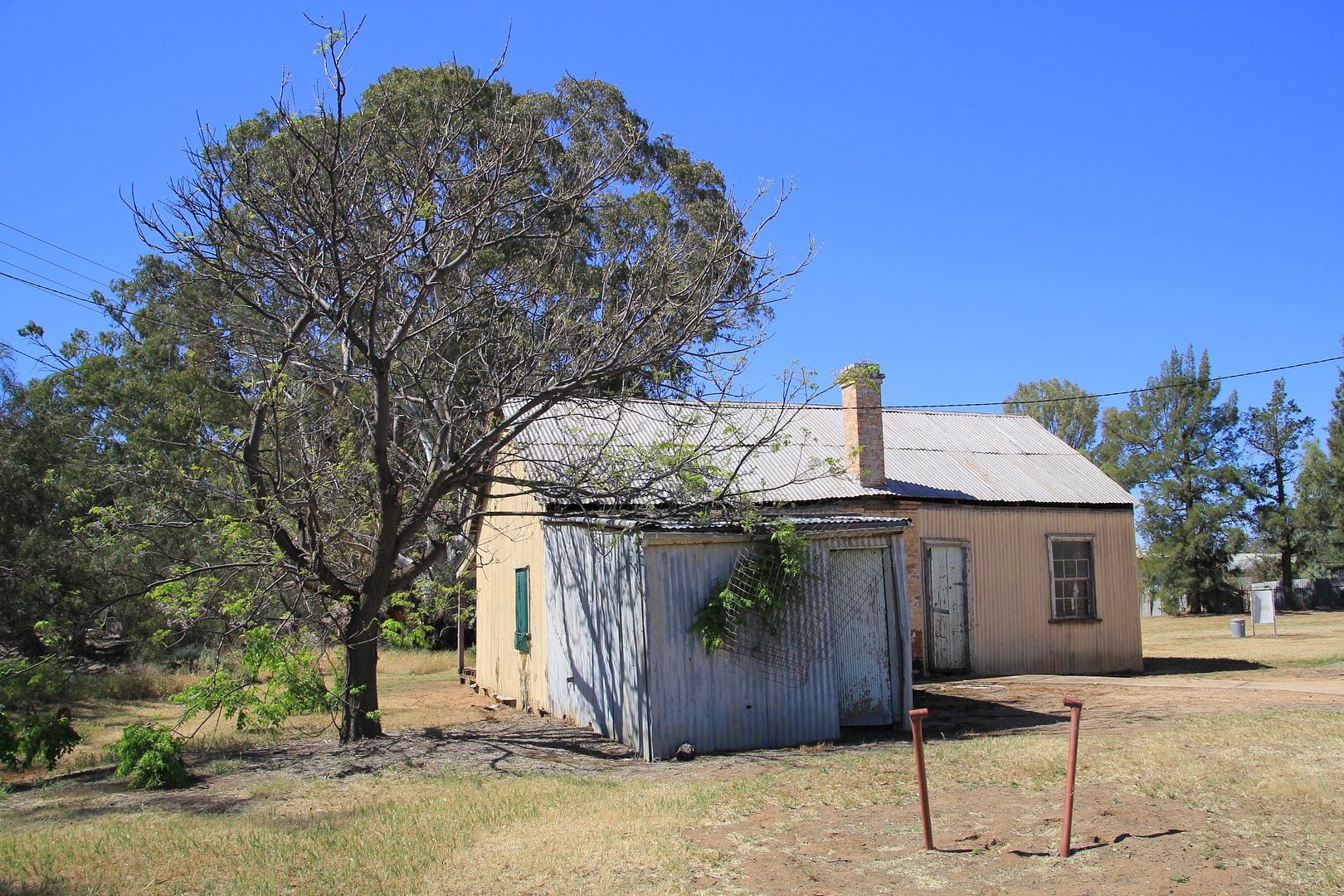
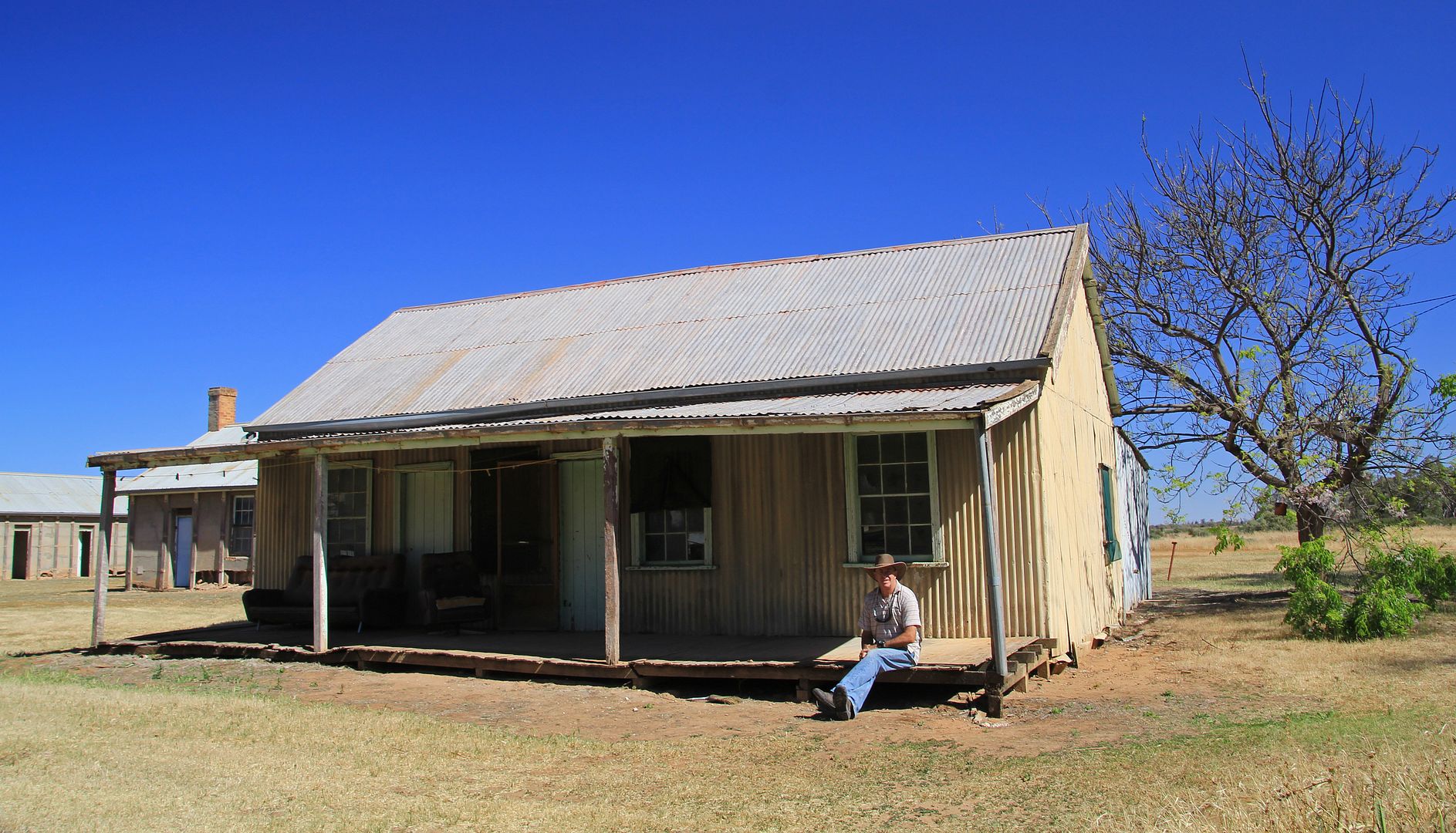
The shearerís quarters were akin to small cells, they had no shady verandah but would have been at least cool being made from concrete (Not Cement!).
The shearers quarters and then a photo of the laundry and communal wash room which was a separate building nearby.
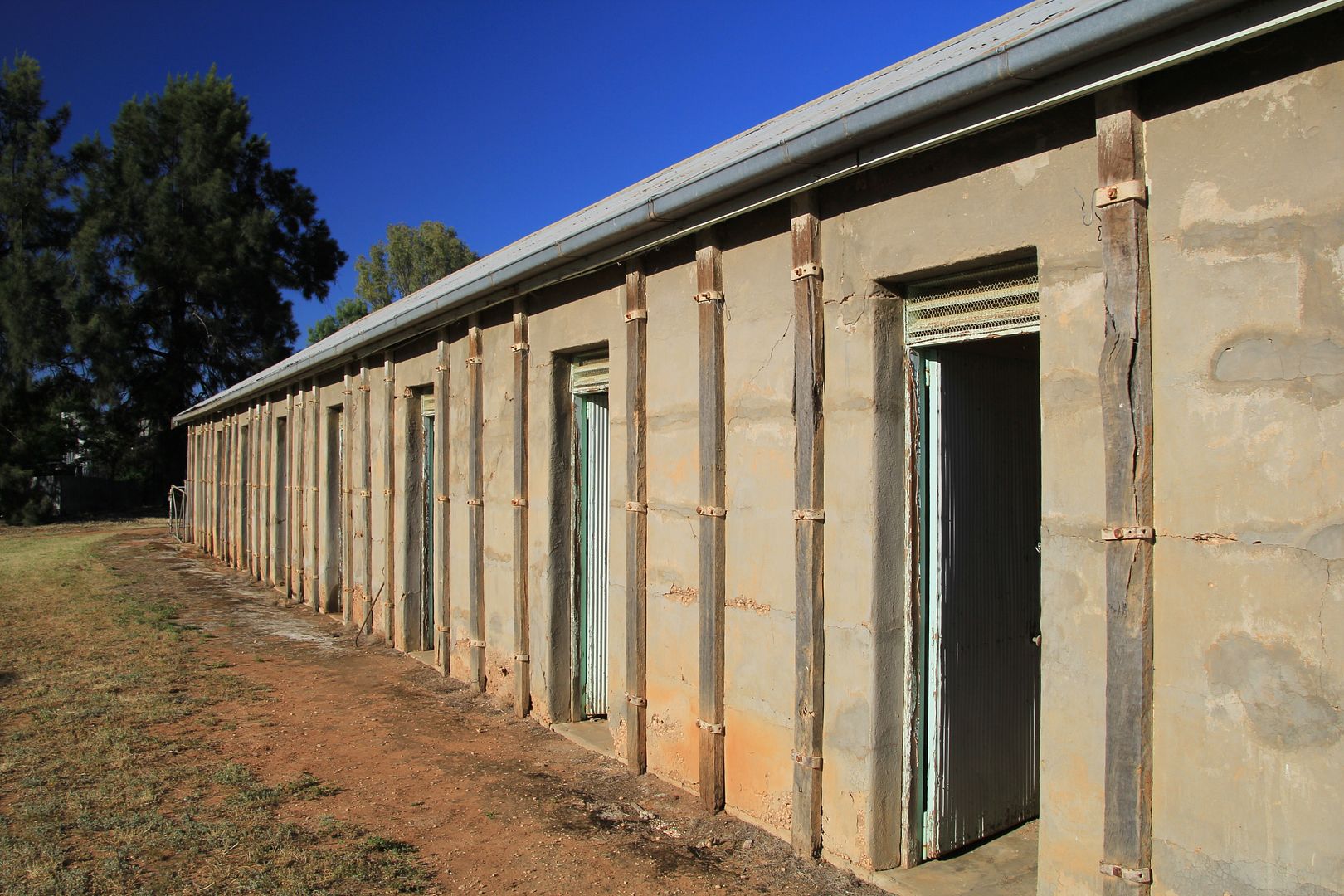


The main Yanga Homestead which is about 9ks as the crows fly (and yes they have crows out there) from the shearing shed precinct, was built in 1870. Built on a ridge that protrudes into Yanga Lake, it has superb views over the lake and is a magnificent reminder of the grandeur of some of our sheep stations from our proud pioneering history.
The first telephone to be used in Australia was installed on Yanga. The telephone was required for communication between the homestead and outlying buildings such as the shearersí quarters and sheds. The phone was said to be installed by James Cromyn who just happened to be the nephew of one Alexander Graham Bell Ė how about that!
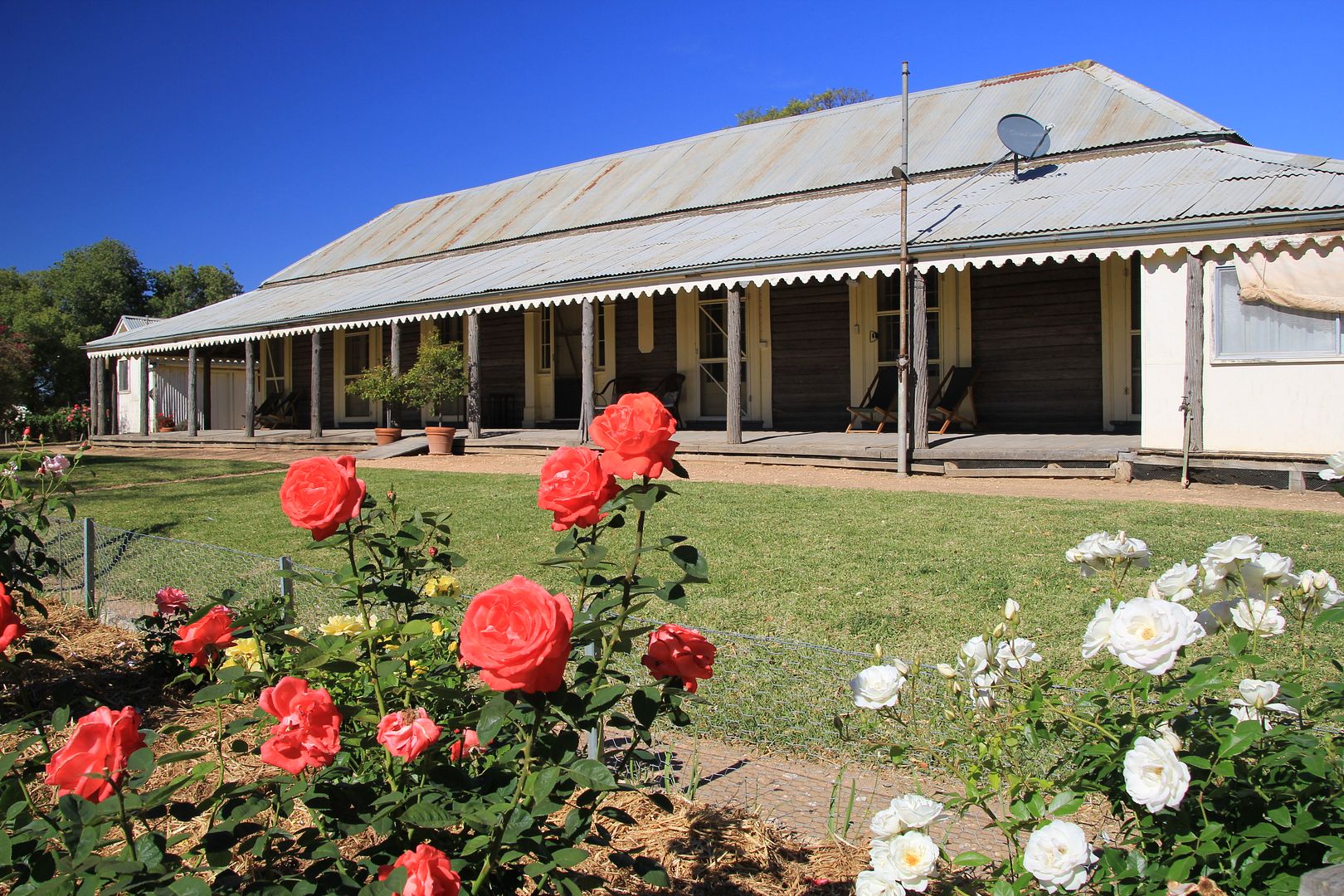
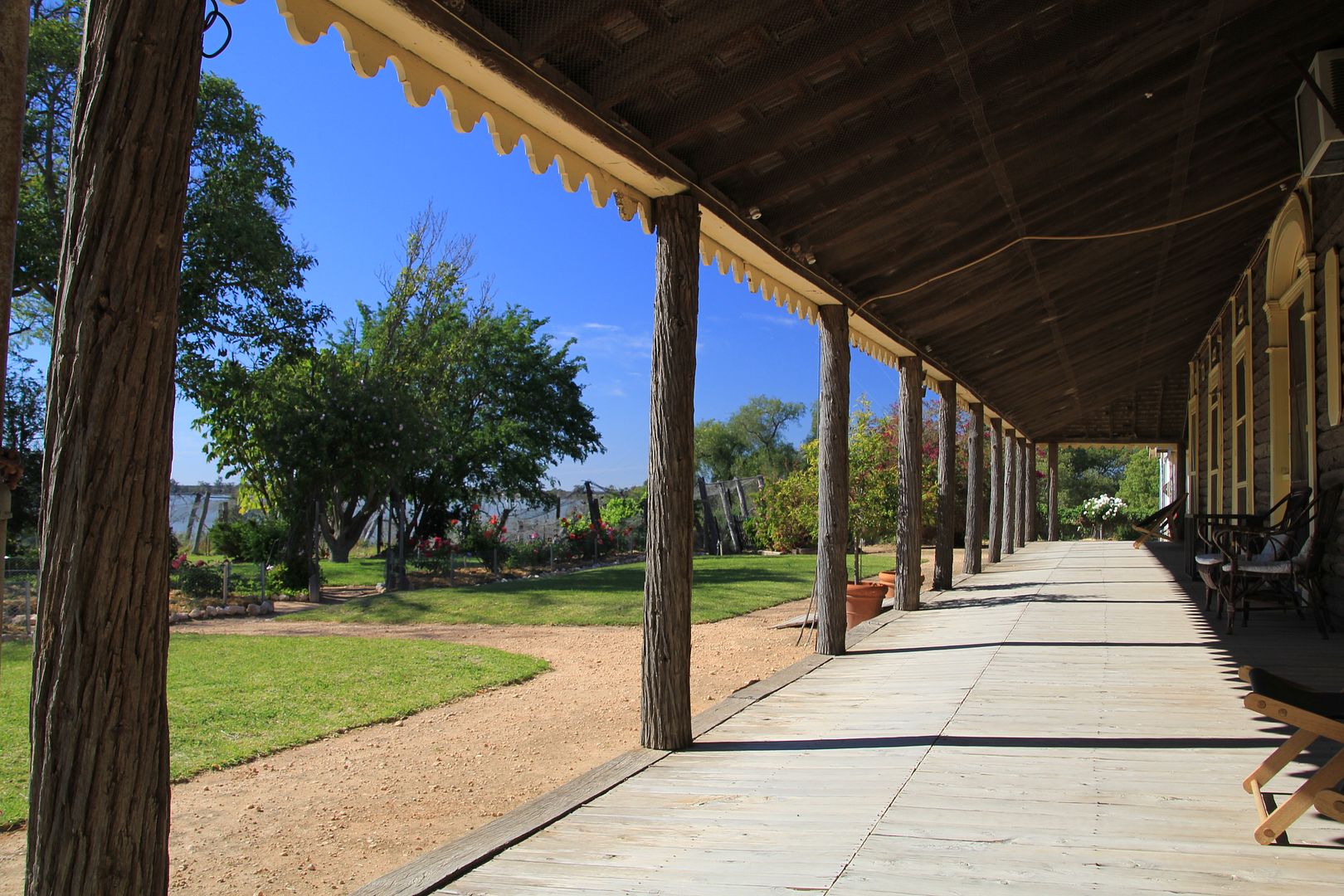
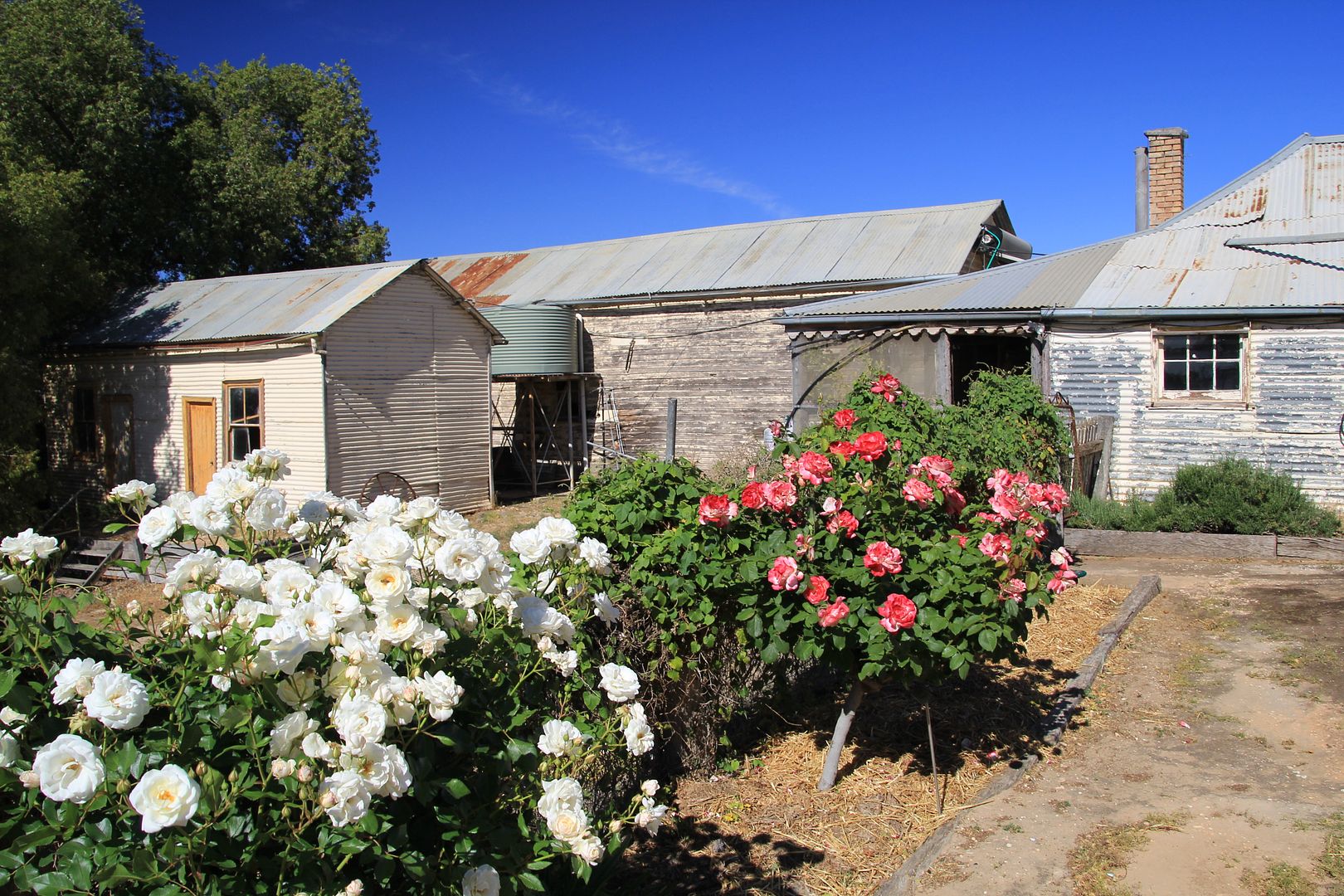
The central courtyard area of the main homestead.

Just a short stroll from our van was this area where I had hoped that there would be a sunrise worthy of photographing. On three of the mornings we were there, the skies were absolutely clear, but on this particular one I lucked in so took the following pics.
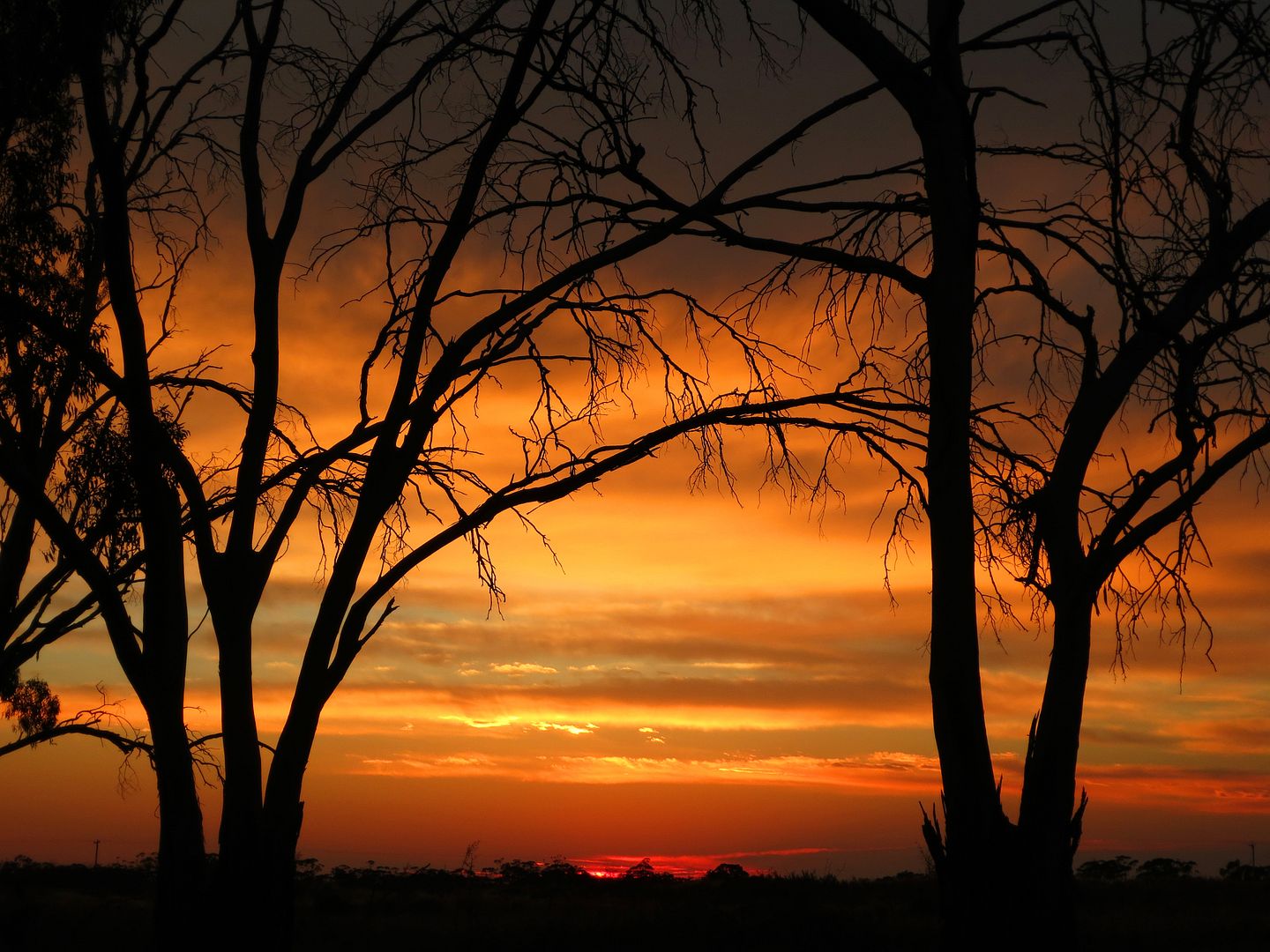
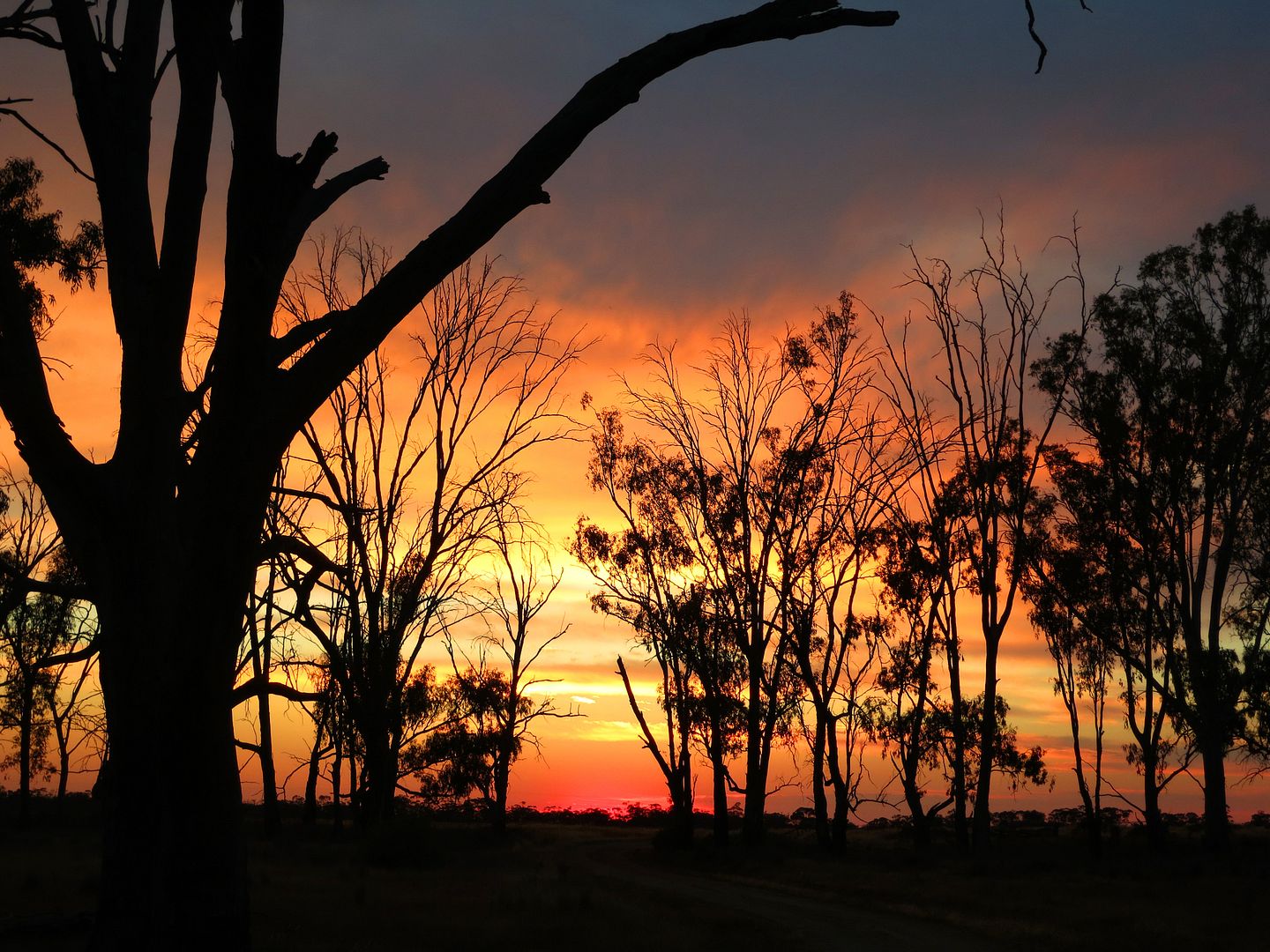
It was time for us to see a bit more of the local area so off we went. About 90 ks north of Balranald is the Redbank Weir which was our destination for this afternoon drive; again I took some back roads and spotted some sparse scenery and unusual letter boxes.
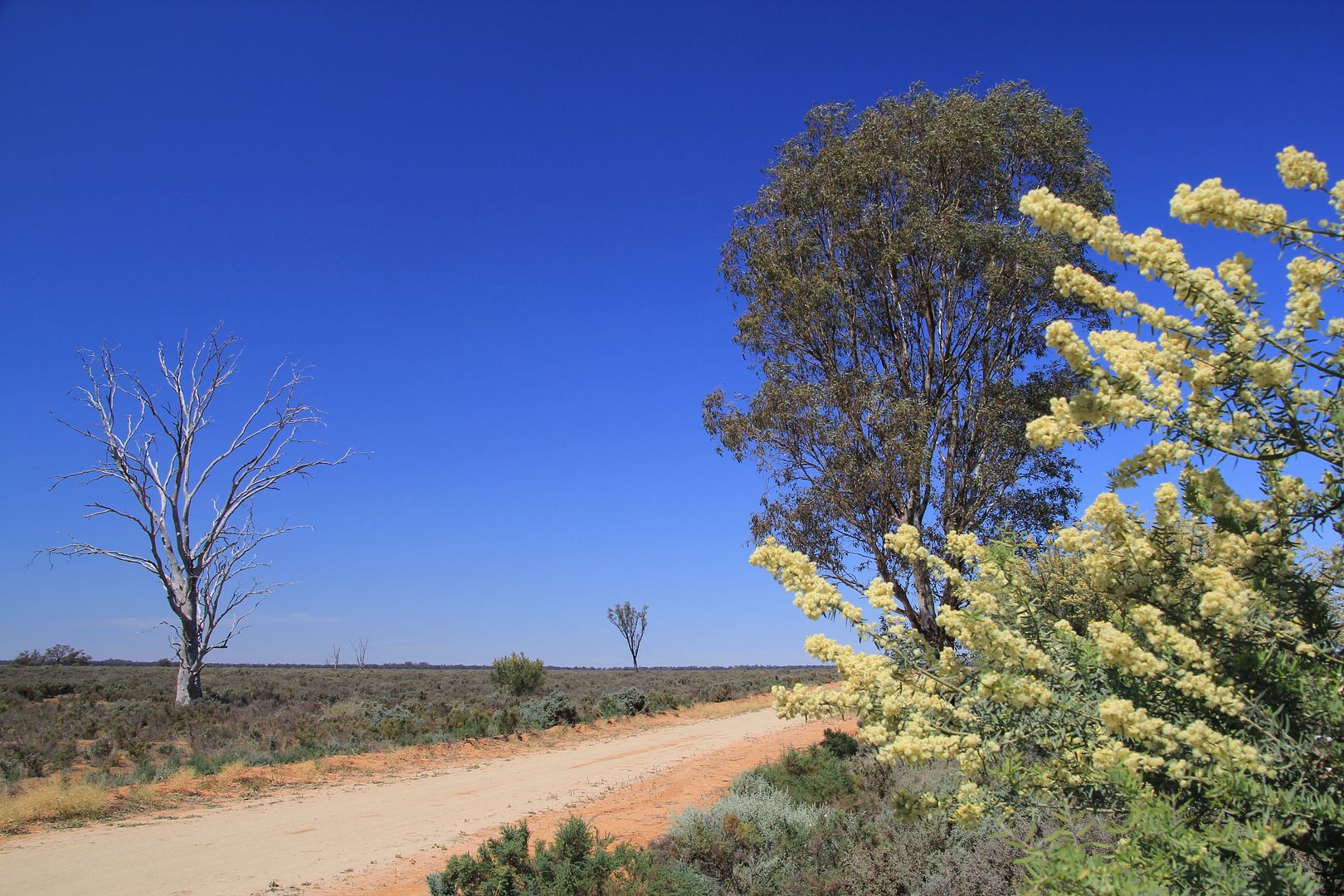

Further on we came across the second largest letter box that I had ever come across, it was located out the front of Paika Station on the Balranald Ivanhoe road.
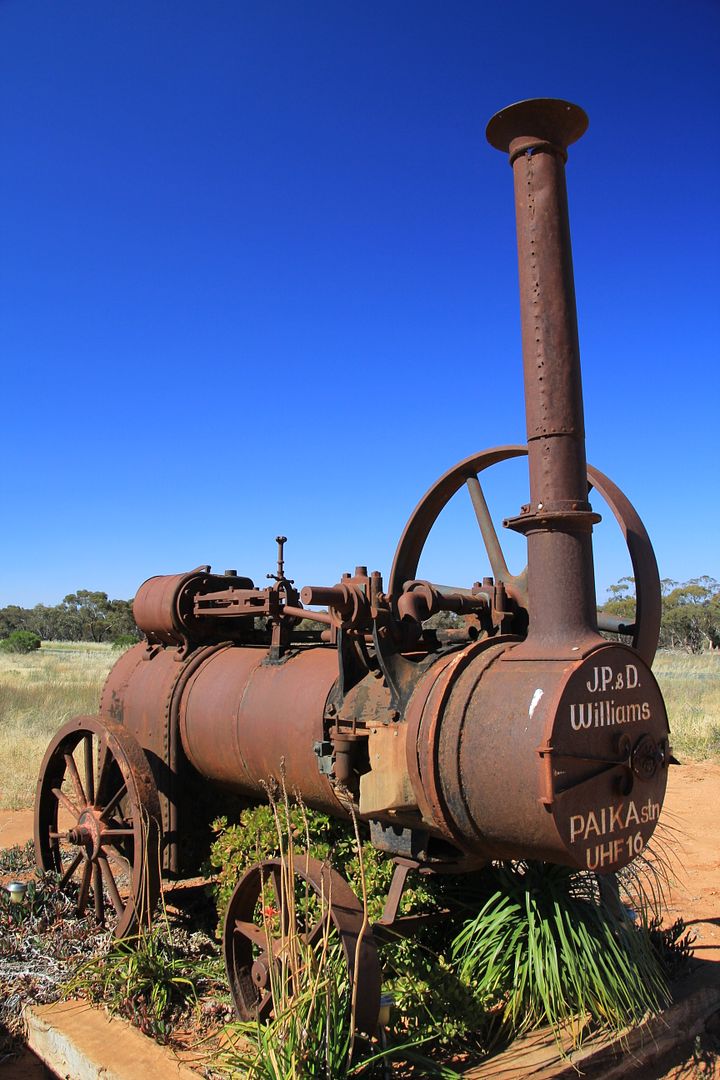

Approaching the weir we passed Tori Lake, so many of these lakes and waterways in the region only a year or so ago were all bone dry.
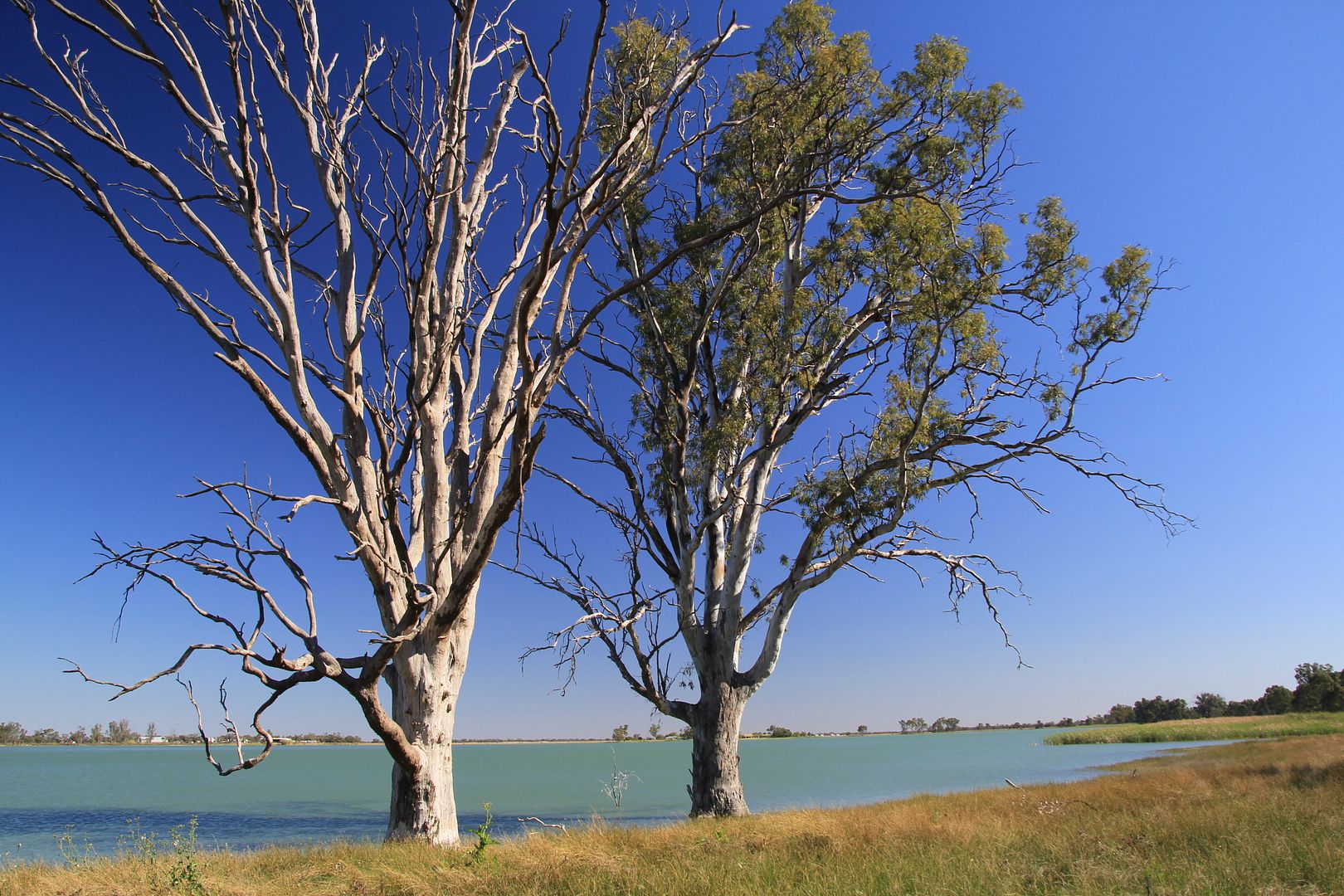
At Redbank Weir we found a lovely picnic area beside the Murrumbidgee River and Weir. The caretakers cottage was surrounded by lovely rose gardens and after meeting him, it was obvious that there werenít to many visitors here, as it was difficult to get away from him or to get a word in, so much up for a chat as he was. Boy and people think I can talk. Ha!
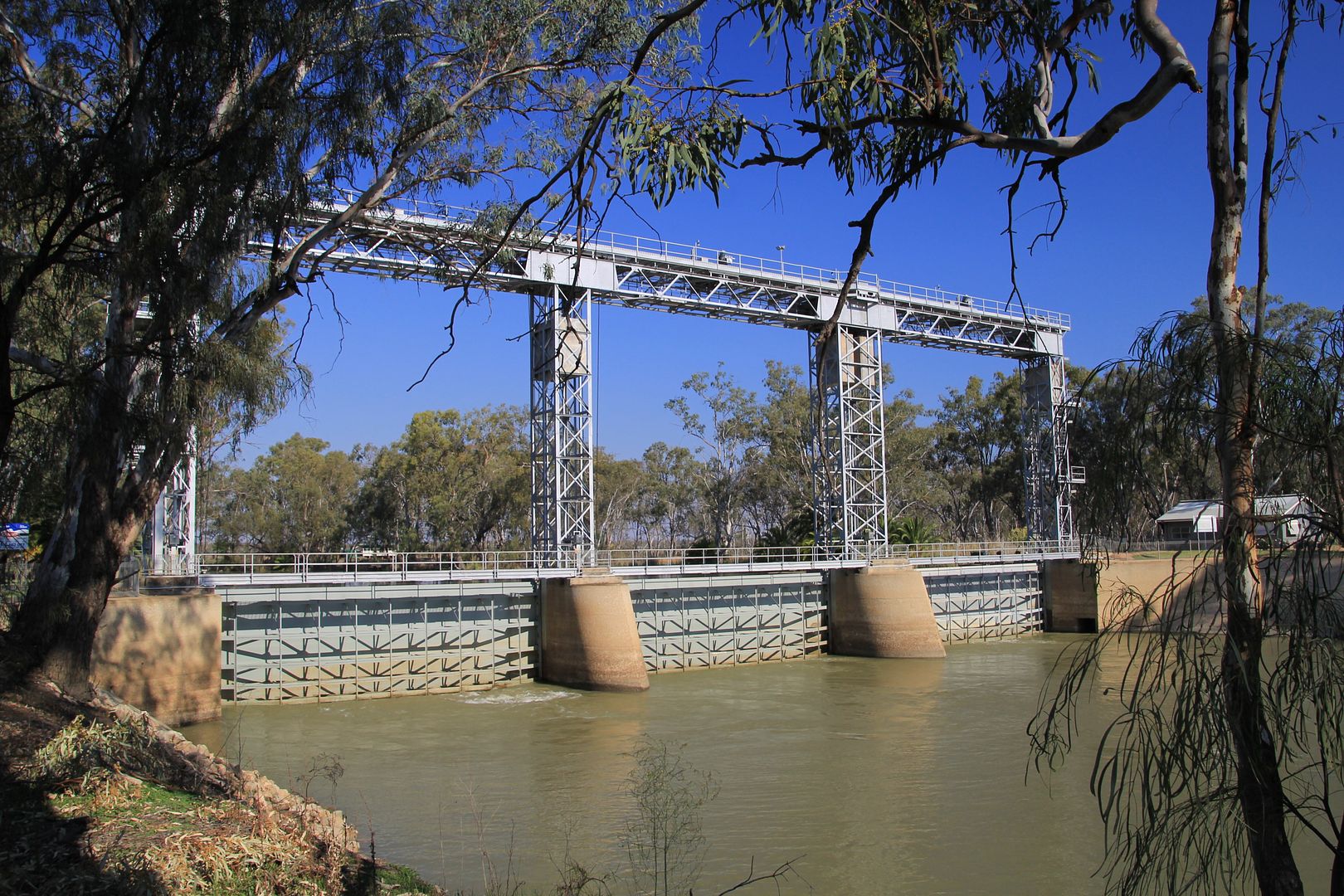
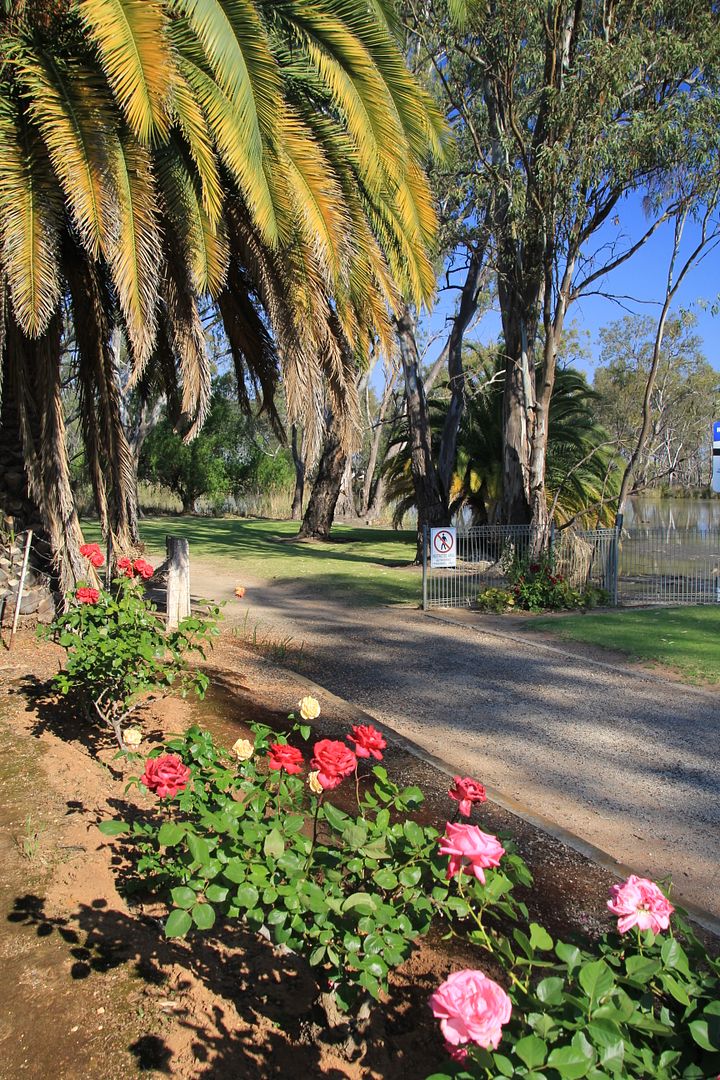
The volume of water being held back was nearly to the top of the bank.
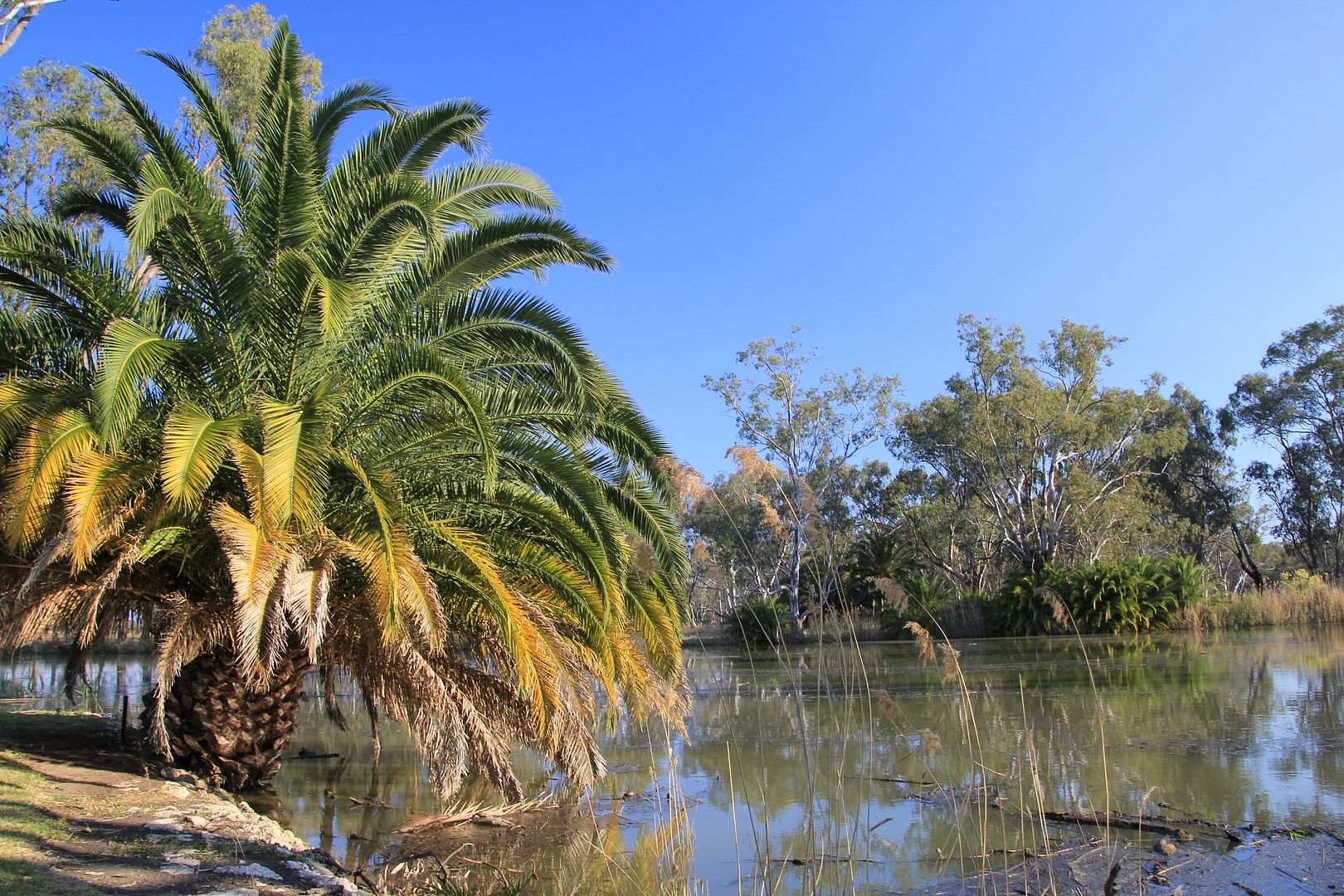
On our way back from the Weir, we called into the Homebush Hotel at Penarie for dinner. It was first opened in 1878 and had a real outback/bush feel to it, Jen fitted right in with the locals and at one stage when I went outside looking for some photo opportunities, a couple thought theyíed try their luck, when Aussie Col returned they hastily made their retreat Ha!
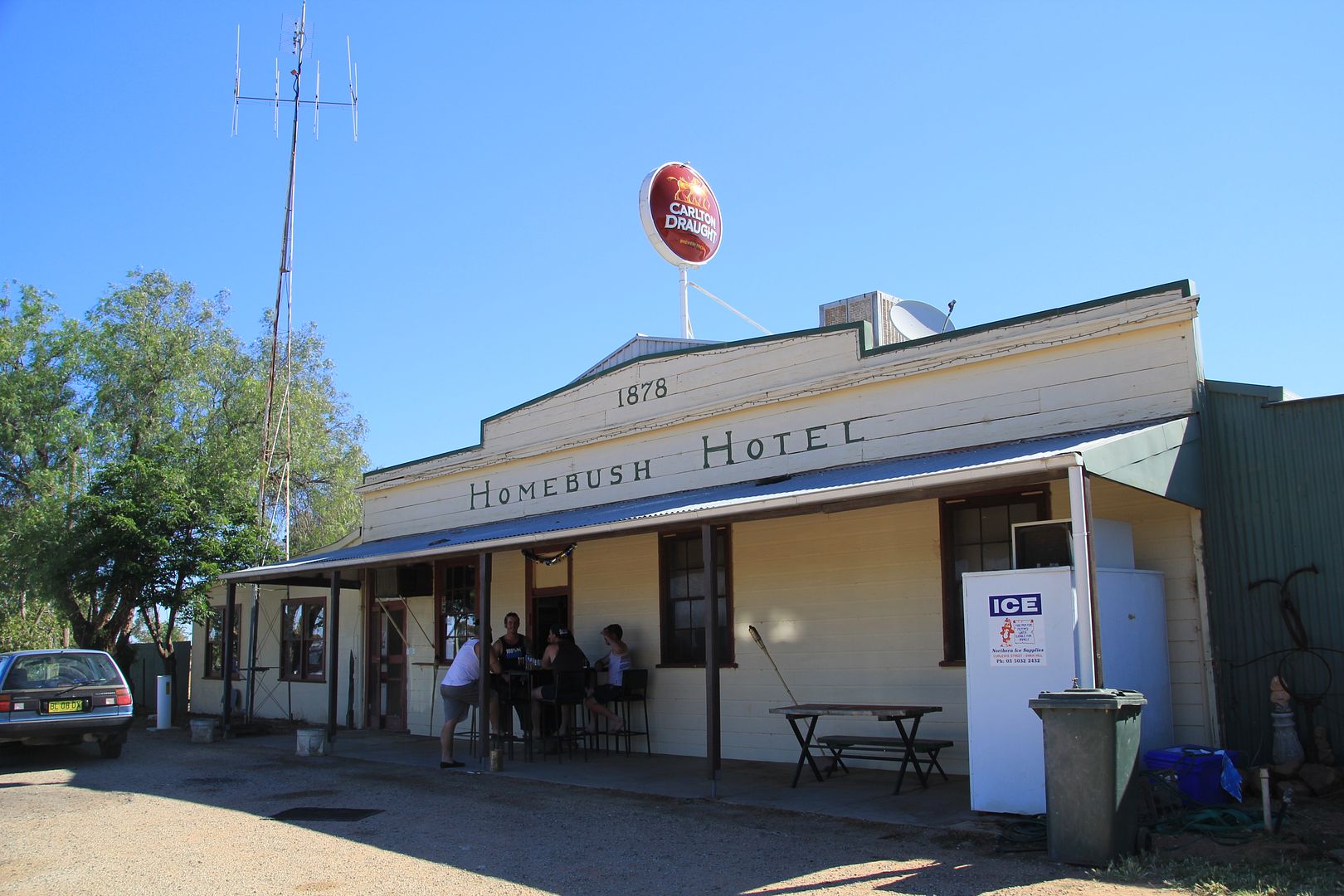
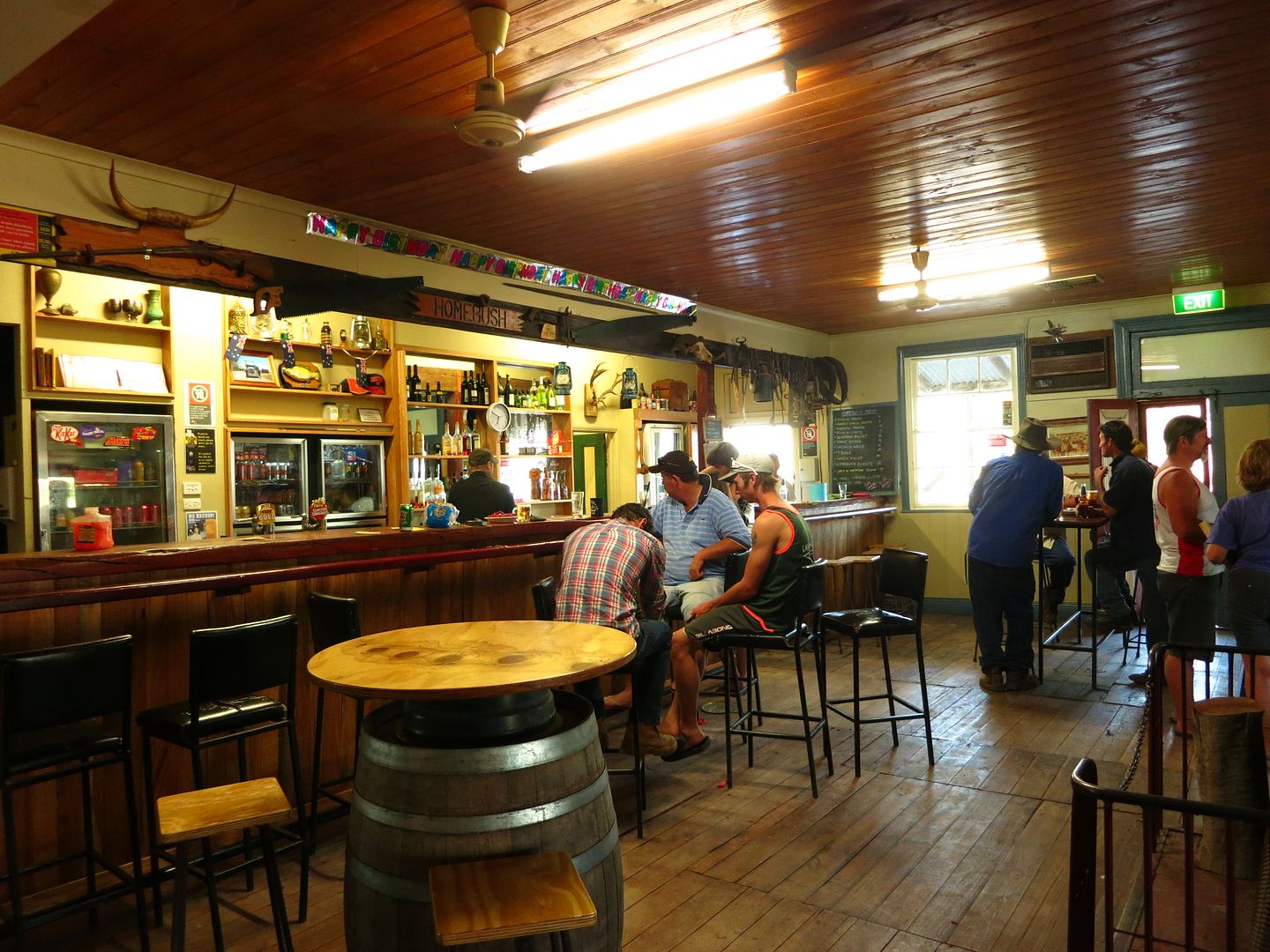
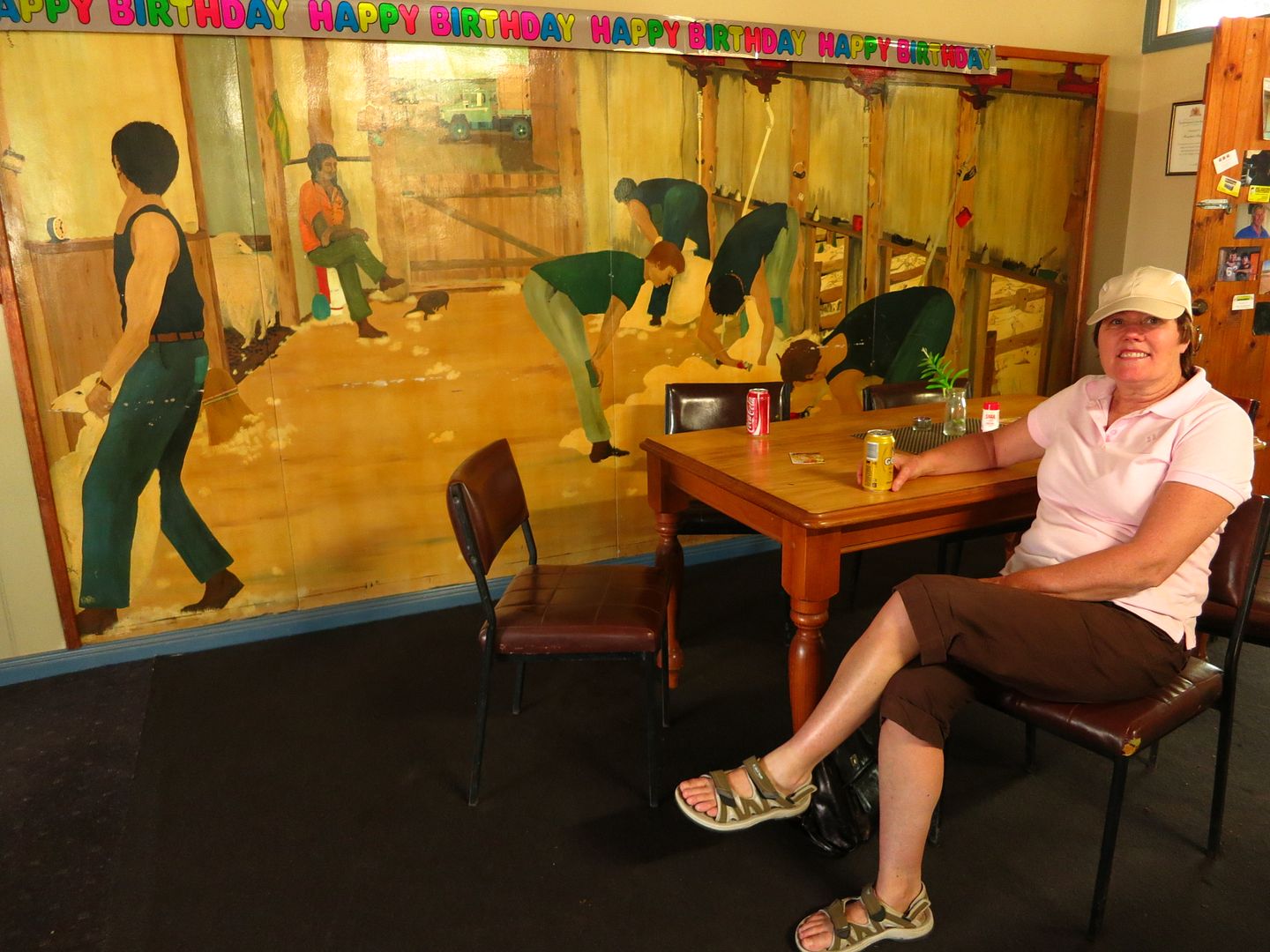 [/URL [/URL
Decorations above the bar tell you that although the Redbank Weir isnít that far away, this pub could have been named Redkneck Pub which may have been a more appropriate name than Homebush, the locals were friendly though, if not a little forward for Jens liking Ha!
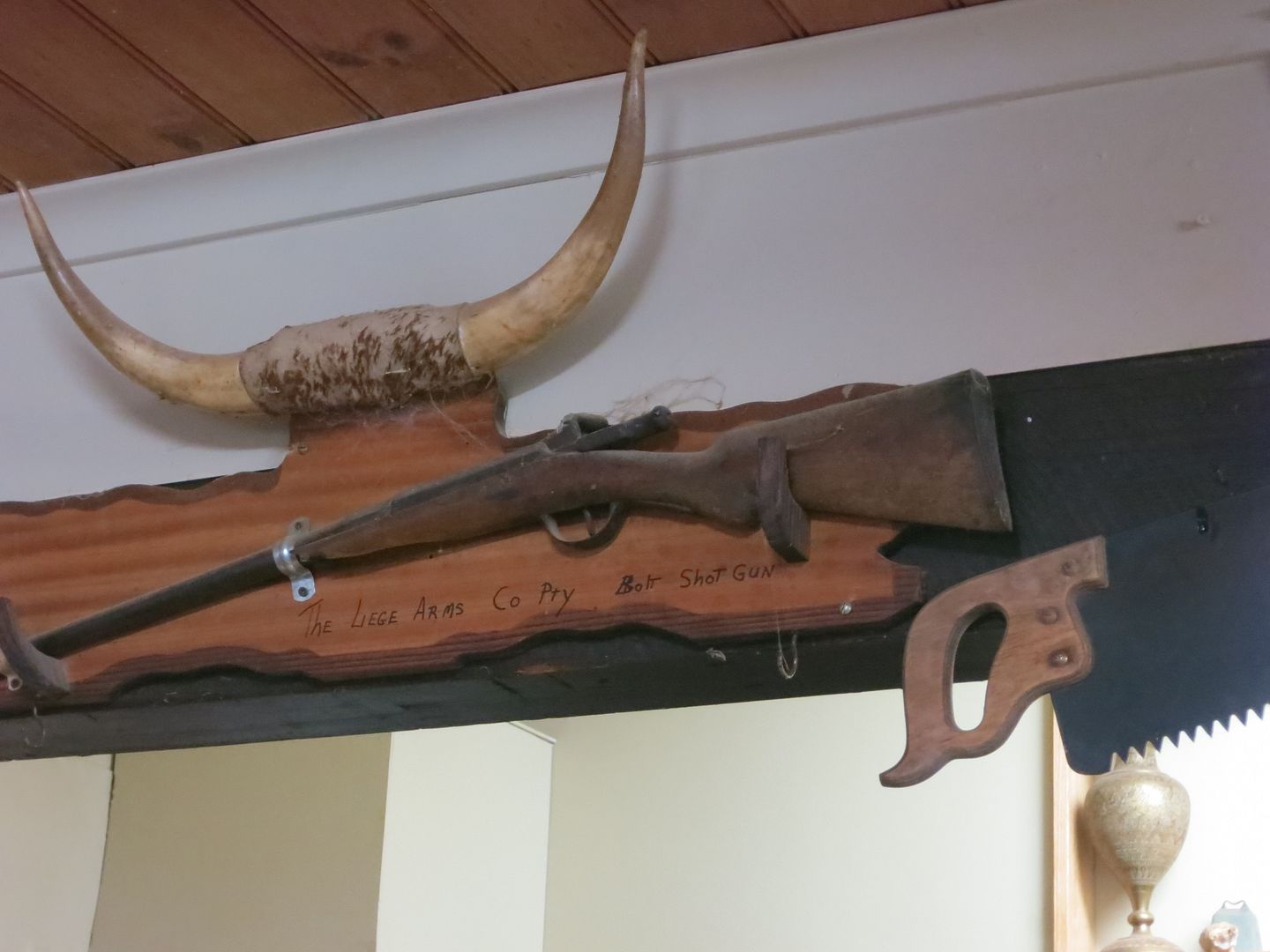
After our dinner we didnít dilly dally as the sun was starting to set and never to waste an opportunity, we left the pub and drove slowly back to camp taking these photos on the way.
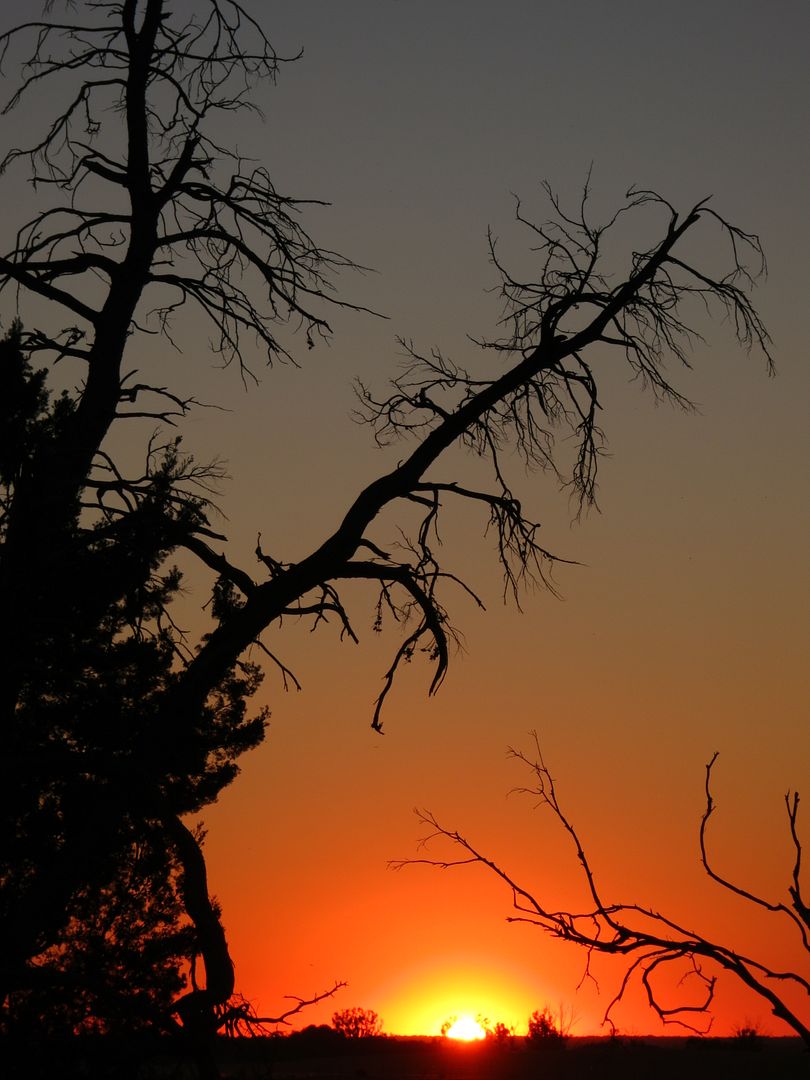
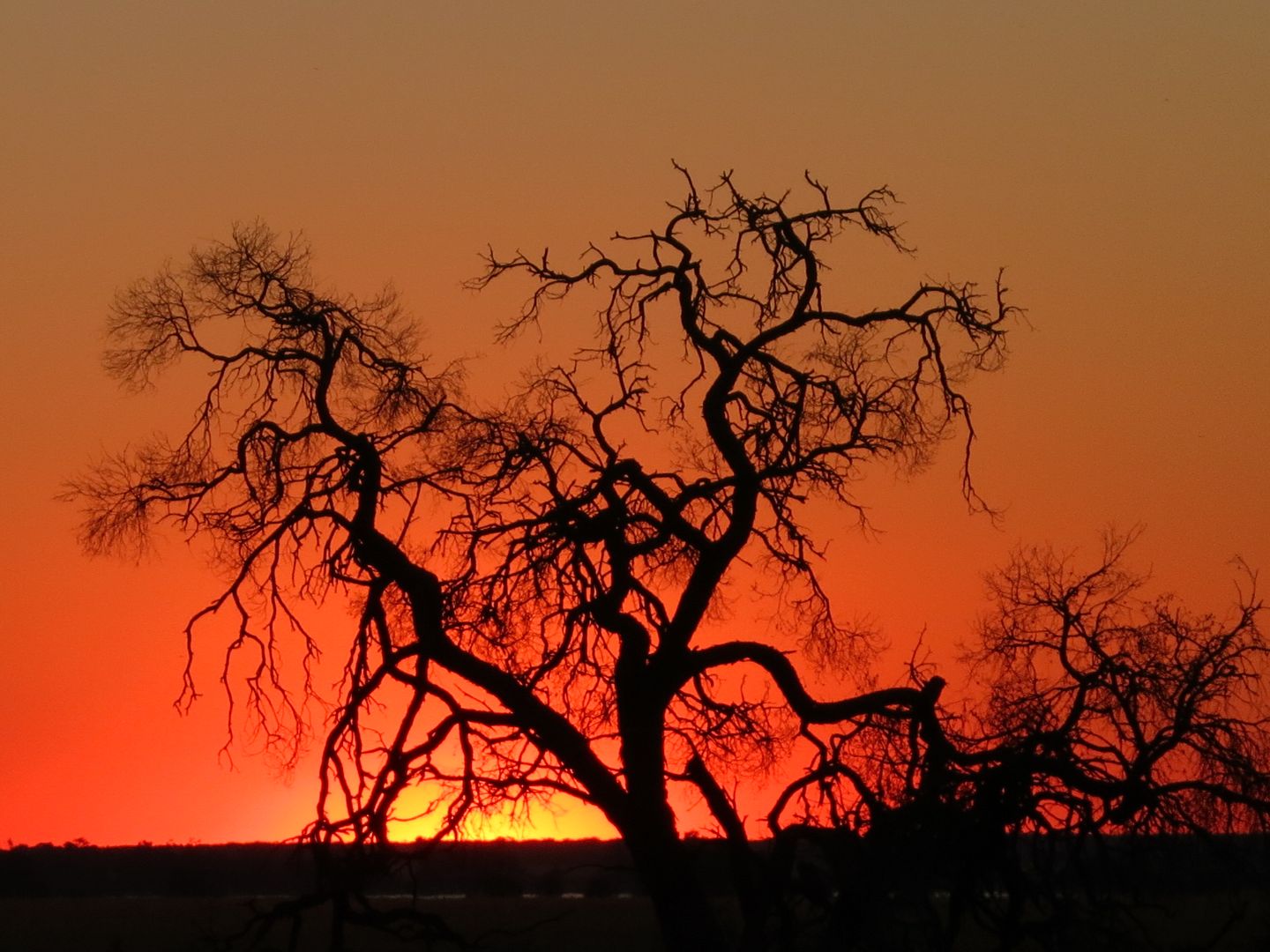
Well after a lovely stay it was time to hit the road/track and depart Balranald, after taking a few more virgin roads we found ourselves at Swan Hill, at a lovely picnic area beside the Murray River where we had lunch.
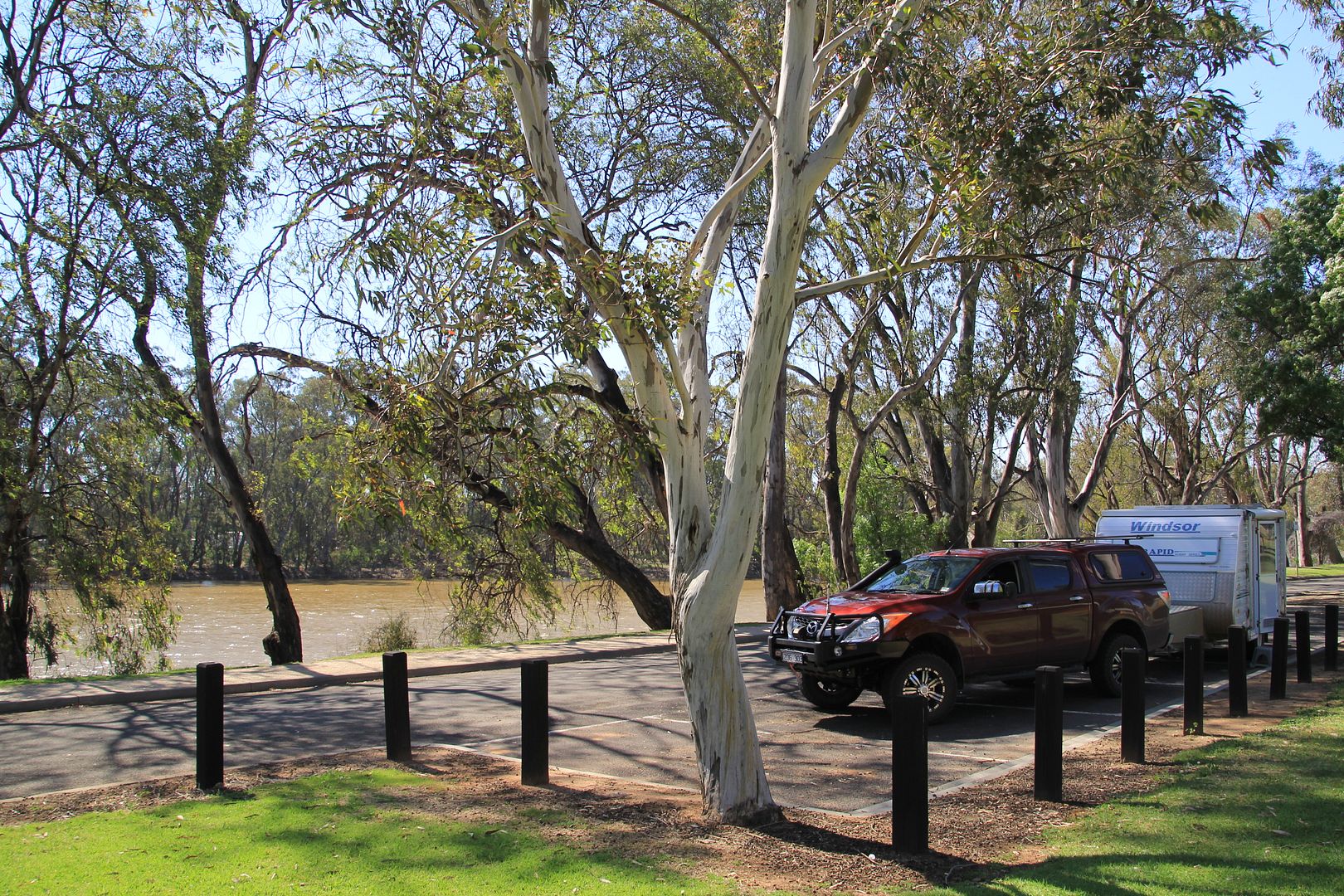
A few hundred metres downstream from the park is the main Swan Hill bridge over the Murray. It is a timber truss, steel lift span bridge which was built in 1895 and is of ďState significance as the form and setting have high aesthetic and social significanceĒ. The bridge is the original of its type, and extremely rare (there is one other example at Tooleybuc which was built in the 1920s).
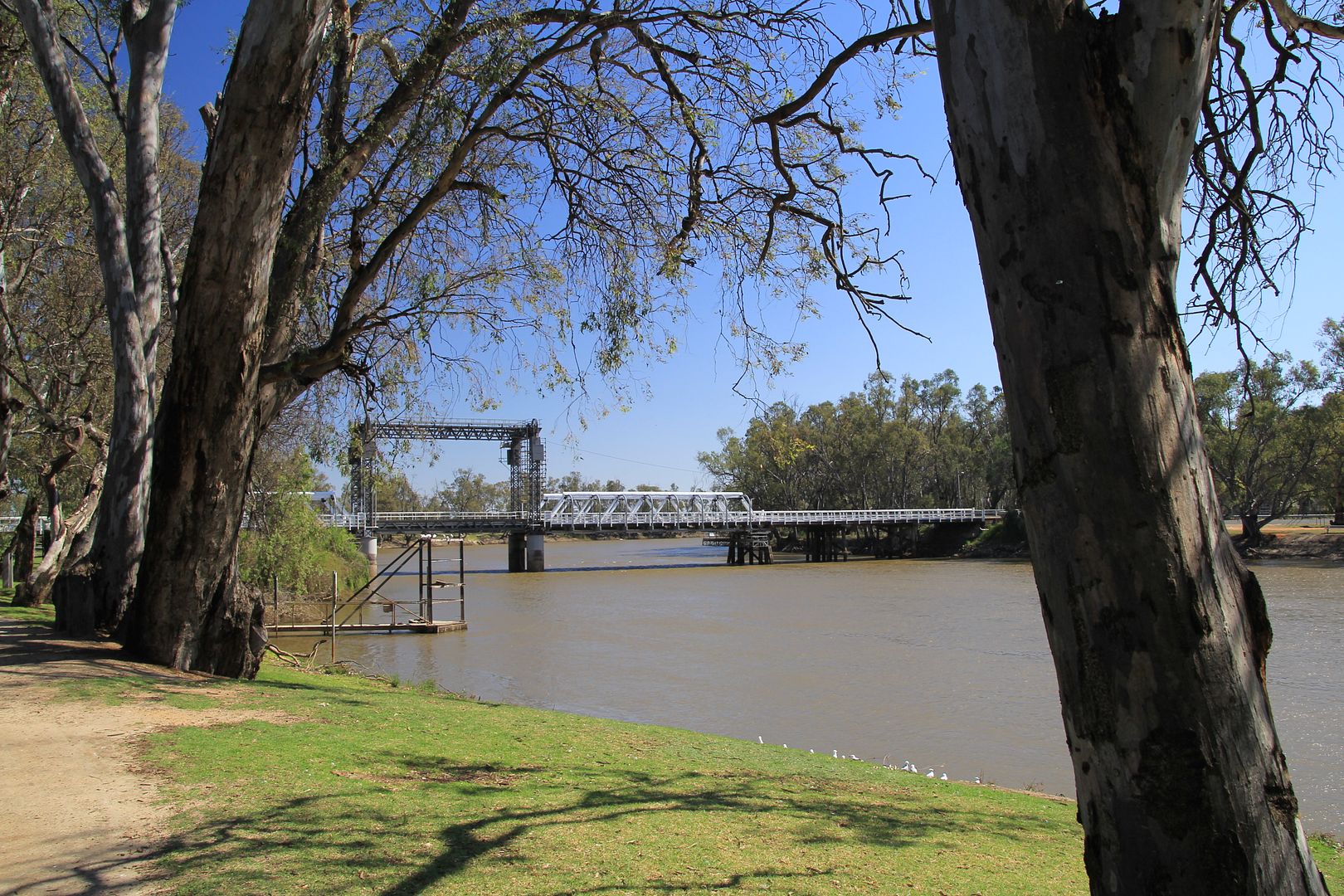
Currently authorities are looking at building a new bridge over the river a little upstream from its present site.
A short stroll away from our picnic table, was another giant Murray Cod figurine type statue thing. It is similar to the one found in Tocumwall further to the east. Looking at its size compared to the nearby cars, I hope it wasnít a true replica of one caught as for filleting that big mother would have been one helluva job.
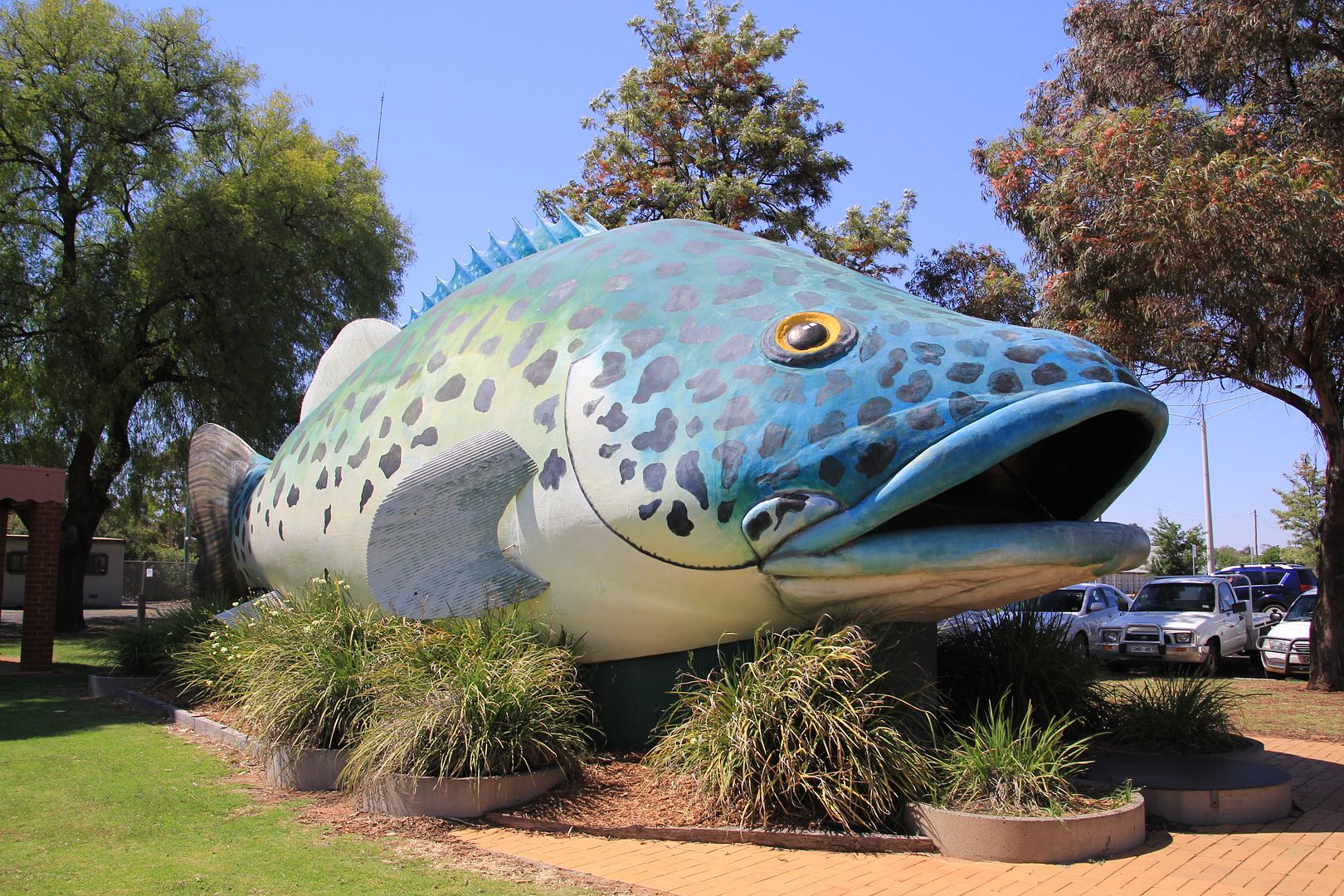
After lunch I took this photo at a very picturesque spot as we drove into a forest beside the Murray, about 20 ks north of Swan Hill, looking for a spot to camp for the night.
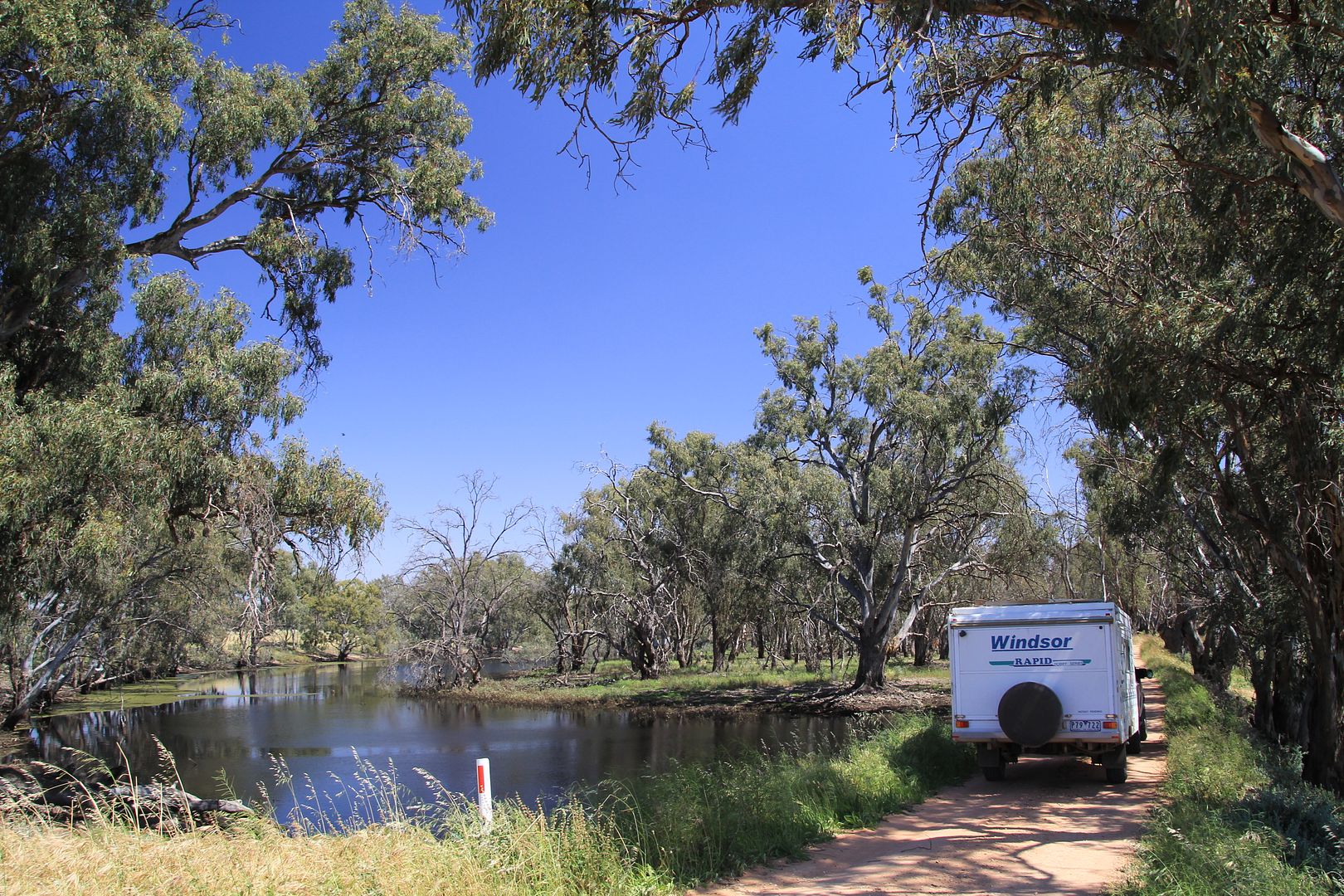
Our campsite and looking upstream from our van.


As there was still some time left in the day we went for another short drive. A bit further downstream from our site was the Nyah bridge which was built in 1947. Beside that sat a paddle steamer and further on again on the NSW side of the Murray, is this Aboriginal Ring Tree not far from Tooleybuc. The treeís ring was formed by tying growing branches together. Such trees were used to indicate Aboriginal tribal boundaries.
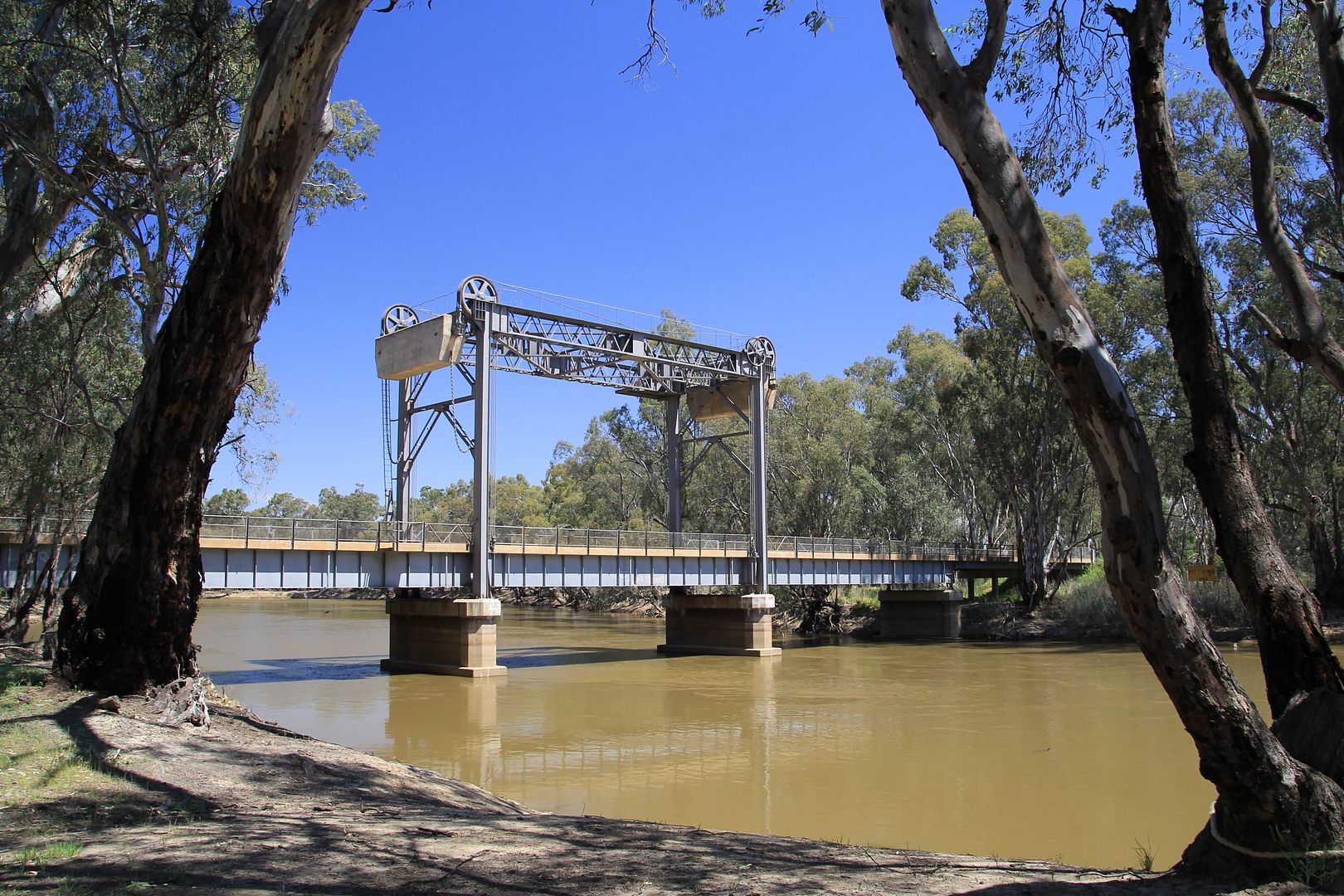

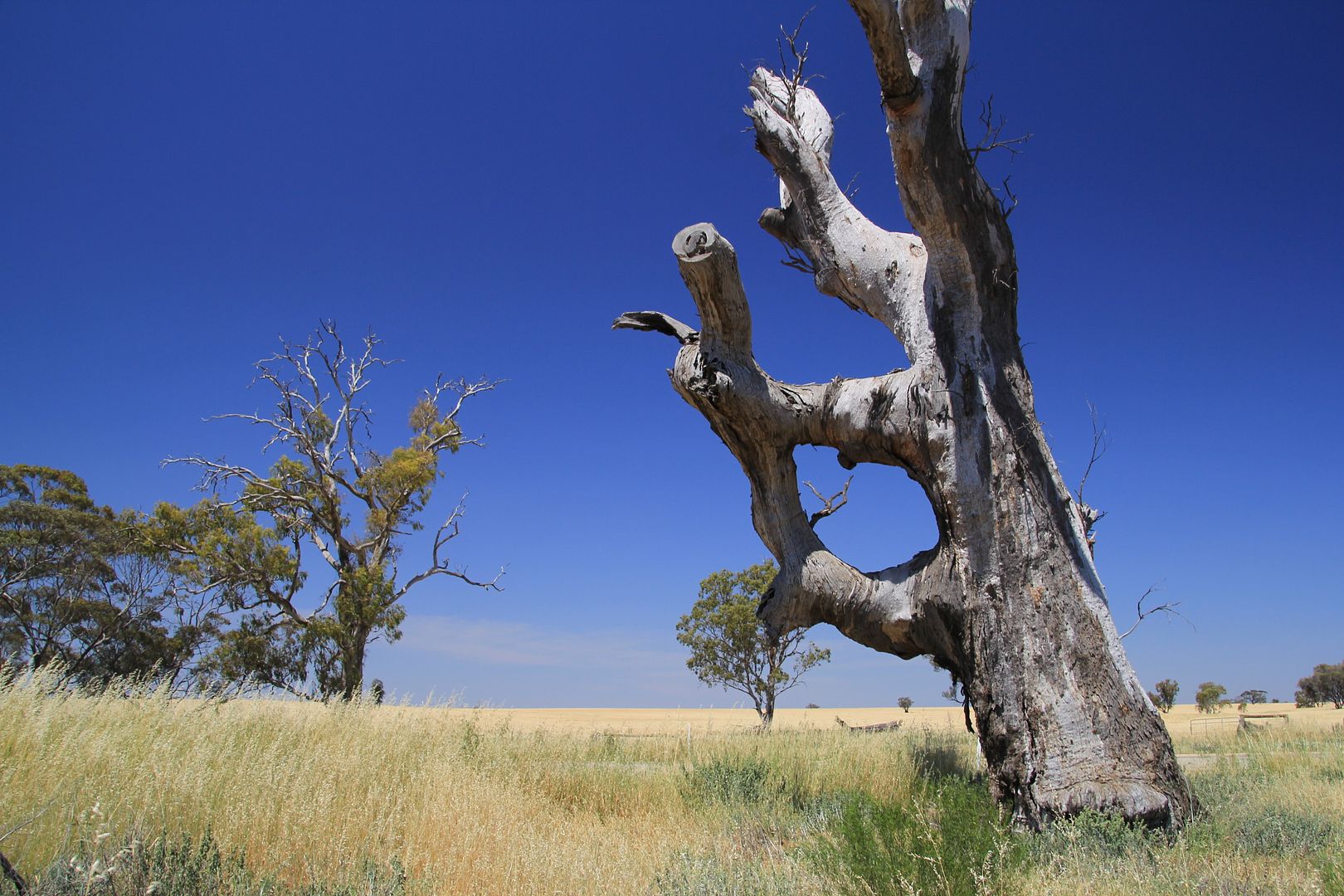
Well our holiday had just about come to an end. From here we basically drove straight back to Melbourne taking as many backroads as possible.
I hope you enjoyed this rather long report, covering another very interesting and picturesque part of our country.
Regards from Col & Jen.
-------------
The worst day above ground, is a whole lot better than the best one under it. Live life to the fullest while you can.
|
|
|
8775 Visitors online !
Free UKCampsite.co.uk Window Sticker - Recommend to Friend - Add a Missing Campsite
[Message Forums]
[Caravan Sites & Camping]
[Company Listings]
[Features / Advice]
[Virtual Brochure]
[Shop!]
[Reception]
[Competitions]
[Caravans & Motorhomes For Sale]
[Event Diary]
[Contact Us]
[Tent Reviews]


Please note we are not responsible for the content of external sites & any reviews represent the author's personal view only. Please report any error here. You may view our privacy and cookie policy and terms and conditions here. All copyrights & other intellectual property rights in the design and content of this web site are reserved to the UKCampsite.co.uk © 1999 - 2024 |

Advertisement
|
|
|















































































 [/URL
[/URL

















